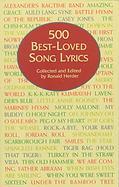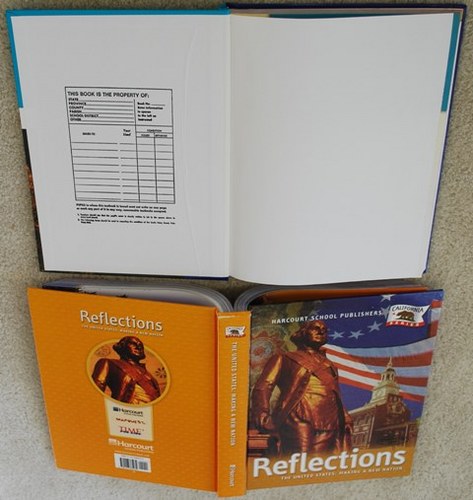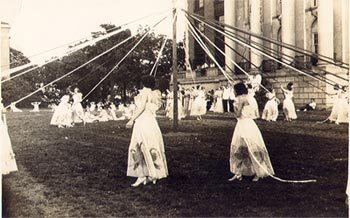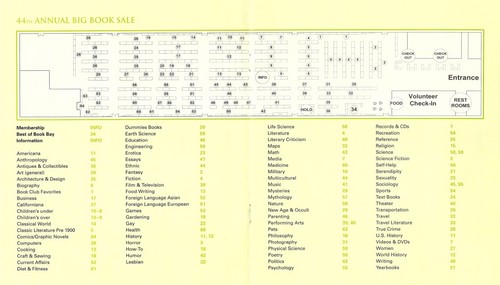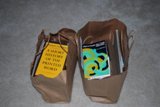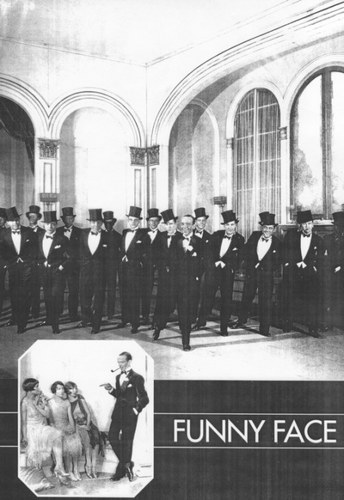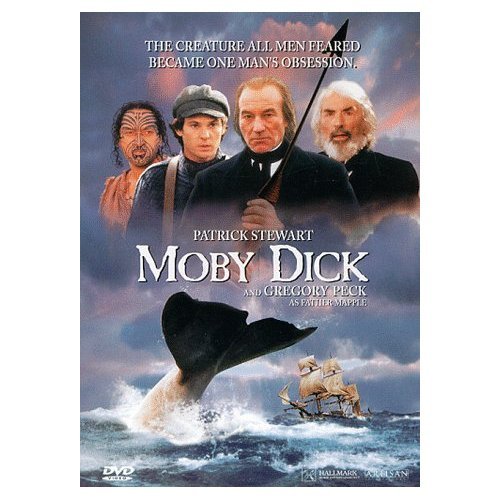September 30 ルネサンス・フェアをめぐって (中) Renaissance Fair (2) [America]
September 30, 2008 (Tuesday)
(September 24 ルネサンス・フェアをめぐって (上) Renaissance Fair (1) のつづきです。)
なかなか見つからなかった写真ページがようやく見つかりました(なんかFireFoxを新しくしてから固まったりするだけでなくうまくブックマークができないで困ってます)。――
このページはウェブリン、"Renaissance Faire pictures" の WebRing がついています。
このページは、Faire-Folk.com というたいへん大きなサイトの一部なのですが、作者はMeghan Brunner という女性 ("About the Author") で、"Faire-Folk Novel" と称されるロマンス系小説を書いている作家です。いまのところ From the Ashes (2002) と Into the Storm (2004) という、 "the Pendragon Trilogy" と称する三部作の2冊目までしか出版していないようですが。ちなみに Into the Storm の冒頭はこんな感じです。――
Pendragon Renaissance Faire
Weekend One: Fairy Nice To Sidhe You!
Treat yourself with a magical excursion to a new land, filled with wondrous surprises and now the fairies themselves! Our newest attraction highlights a weekend of enchantment as citizens of the realm are invited to visit the Secret Garden of the pixies, fairies, gnomes, and leprechauns. Enjoy the Realm's Fynest Repast while you wander through the town of the wee folk. Perhaps, if you look close enough, you'll even see one of them peeking back out at you! (Theme sponsored by Pots and Petals Nursery)
*
beep. beep. beep. beepbeepbeepbeepbeepbee―
"Off, you pile of griffin droppings! Turn off!" Ryna cried, smacking her alarm. She connected with the huge snooze button, halting the racket and causing clock's digital face to glow pleasantly blue.
7:00 AM, 8-12 SAT, 74°F it read.
"Stores should let you test these things before you buy them," Phoenix complained groggily. "That thing's worse then Danny's―at least his gave you more time before launching into hyper mode."
"You're coherent this morning," Ryna observed as she flopped back on her pillows, absorbing her bed's comfort a moment longer before crawling out to face the day.
Karma blinked at her person in protest, stretched in the most feline manner possible, and rolled on her back. Phoenix reached over to pay the proper homage of a tummy rub, and although this was not the person she had intended, Karma was not one to turn away adoration. She purred rapturously. (1)
実は毎週末のPendoragon ルネサンス・フェアが章ごとに第1週、2週と第7週(章)まで進んでいって最終章はその週明けの月曜日、という構成です。巻末にはGlossary と Character Listing が10ページ以上にわたって載っています。512pp.
メガン・ブラナー(あるいはミーガンかもしれない)は、1994年にミネソタのルネサンス・フェスティヴァルに参加して人生が変わった人で、その後アメリカ各地のルネサンス・フェアに参加して "rennies" と呼ばれる人種になったようです("rennie" について、アイロニカルな"Encyclopaedia dramatica" の記事をいちおう参照・・・・・・このサイトは「アンサイクロペディア」みたいなパロディーなのかしら) 。やがて書くようになった小説もおのずと "rennies" が登場人物となるものでした。つまり、中世のファンタジーかと思ったらそうではない。いまの世の中が時代背景です。しかし・・・・・・Phoenix とか Karma とかキャラクターの名前が濃すぎ(まあ、アメリカ文学の伝統といえば伝統だけど)。
小説冒頭のイタリックで書かれた誰の声かわからない段落の"the Secret Garden of the pixies, fairies, gnomes, and leprechauns" のpixies というのは(モーリちゃんの父の記憶が正しければ)ケルトの妖精、gnomes (ノーム、グノメ)はパラケルススが名づけた地の精、leprechauns (レプレコーン、レプレホーン)もアイルランドの妖精。それらが英語としてはニュートラルで包含的ななfairies と一緒になっているのは意識的なsyncretism (シンクレティズム、習合、混合主義)というかちゃんぽんでしょう。
あ、話が脱線しそうなので戻ります。そういうコアな人もいるということで。彼女のインタビューとか読んでいると、「現実」とは何か、というような問いとrennie という生き方が関わっているのだということは了解されます。
で、そのブラナーさんのサイトはルネサンス・フェアについてたいへんくわしく情報を提供するものとなっていて、上述の写真だけでなく、全米のルネサンス・フェアのdirectory もあります。――
Renaissance Events Directory Events in the United States Outside the U.S.
アメリカの州は数えてみると41しかありませんでした(ハワイ、サウス・キャロライナ、ミシシッピとかはあがっていない)。それぞれの州の月ごとのフェアというかたちで記述されていて、5月にしかない州や、10月にしかない州や、あるいはフロリダは1月から4月までと9月から11月まであるとか、カリフォルニアは3月から11月まであるとか、わかります。
さらに、
Performers Directory Musicians Stage Acts Street, Guilds, & Living History
つまり、ルネサンス・フェアでプロとしてパフォーマンスを行なう集団の資料があり、さらに
という、装身具や衣装や武器やらを造る専門家の資料もあるのでした。
そうして、こういうのを見ていると、観客(patrons ペイトロン(パトロン)と呼ばれますが、特にコスプレで参加する観客は playtrons プレイトロンという呼ばれ方もする) はともあれ、Fair を興行とし、かつナリワイとしている人たちのなかには時間差で各地を巡業している集団もあるらしいこともわかります。
英語版のWikipedia ("Renaissance fair")を読むと、"historical reenactment " (歴史の再演)という言葉をキーワードのひとつに使いつつ、それでも過去の再現というのは昔からあるけれど、そこにエンターテインメントの要素を入れる――とりわけ、観客が参加するというかたちで――点、それからどなたかが書いていたように飲食を楽しむとか、あるいは買物をするとか、笑劇を観るとか、要するにeducation と entertainment があわさっているところがアメリカ的で独自なルネサンス・フェアなんだというような説明です(ちょっと自分のことばをまじえてますけど)。しかしながら、アメリカにおけるルネサンス・フェアの始まりとしては、教育のほうから出ていた、とそこんとこ("An American phenomenon") 書いた人は述べる――
It should be noted however that the first American fair (Agoura, CA) was originally designed by the Living History Center to resemble an actual spring market fair of the period. Many of the original booths were no-charge reenactments of historical activities such as printing presses, and blacksmiths. The first commercial vendors were mostly artisans and food merchants and were required to demonstrate historical accuracy or plausibility for their wares. Whole groups of volunteers were organized into "guilds" to focus on specific reenactment duties (musicians, military, celtic clans, peasants, etc). Both actors and vendors were required to successfully complete workshops in period language/accents, costuming and culture and to stay "in character" while working. Fairs that copied the original frequently did not attempt such historical accuracy and in 1995 new management and economic pressures negatively altered the original fair's historical quality as well.
この部分の執筆者によれば、最初のアメリカにおけるルネサンス・フェアは南カリフォルニアのロサンゼルス郡のアグーラ。往時の春の市(market fair)を再現しようとしたものだったということです。印刷とか鍛冶とか昔の作業を再演する。そこに参加した職人や料理人は歴史的な精確さを示すことが求められた。有志のグループは「ギルド」を作って音楽とか軍事とか農夫とかを再演したということです。ですが、この記者によれば、最初のルネサンス・フェアを模倣したそれに続くフェアは、それほどの歴史的精確さをこころがけなかったし、1995年になると経営的経済的な事情から質は低下してしまった。そうして、たとえばディケンズフェアとかクリスマスフェアとかいう、他の時代に拡大するような方向も起こった、ということです。
それにつづく "History of the fairsin America"という節は、たぶん同じ人が書いたのではないかと推測されますが、歴史的な背景と歴史が記述されています(すいません。訳している余裕がない(というより検証している暇がない)ので、とりあえず引用だけしておきます。いつか気が向いたら訳をつけるかもしれません)。上にあったカリフォルニアにおける1963年(これはこのあいだの記事でどなたかが書いていた、まさにその年号です)の「最初」のフェアの具体的な記述が書かれています――
In post-World War II America, there was a resurgence of interest in medieval and Renaissance culture. In the 1950s, there was a very strong early music revival, and out of that came folk musician and traditionalist John Langstaff. In 1957, Langstaff held "A Christmas Masque of Traditional Revels" in New York City, and the following year another in Washington, DC. A televised version was broadcast on the "Hallmark Hall of Fame" in 1966 which included Dustin Hoffman playing the part of the dragon slain by Saint George, and in 1971 Langstaff established a permanent Christmas Revels in Cambridge, Massachusetts.
In 1963, Los Angeles schoolteacher Phyllis Patterson held a very small version of the faire as a class activity, in the backyard of her Laurel Canyon home in the Hollywood Hills. On May 11th and 12th of that year, Phyllis and her husband Ron, presented the first Renaissance Pleasure Faire as a one-weekend fundraiser for radio station KPFK, drawing some 8,000 people. For many years thereafter, the Renaissance Pleasure Faire of Southern California (RPFS) was held in the spring at the Paramount Ranch located in Agoura, CA, partaking of the rich lore and age-old customs of English springtime markets and "Maying" customs. Five years later, the Pattersons created a fall Renaissance Faire, with a harvest festival theme, in the fall at the Black Point Forest in Novato, CA. Both Faires developed into local traditions and began a movement that spread across the country. There are now over 100 independently owned and operated Renaissance Faires throughout the United States and Canada.
These events have showcased a large ensemble of performers, fine artists, craftspeople and crew. The Faires drew on the rich variety arts movement in Los Angeles, and the explosion of outdoor public events. Interactive environmental theatre and stage shows were overlaid with large scale processions featuring giant puppets and courtly displays. The London-based Reduced Shakespeare Company, San Francisco's i Fratelli Bologna, Tutti Frutti, St. Stupid and the Los Angeles Fools Guild all developed from improvisationally-focused ensembles that initially worked together at the Pleasure Faire. Famous actors who worked at the Pleasure Faire in their youth include Charlie Sheen, Emilio Estevez, Rosanna Arquette and Penn Jillette.
The Patterson family's company, Theme Events Limited, and its non-profit affiliate, The Living History Center, are generally credited with developing the Renaissance Faire concept as it exists today. Inspired by the vision of his parents, Kevin Patterson and his wife, Leslie, are the next generation of Faire producers, bringing the concept full circle, and continuing the Patterson history of innovation by honoring the traditions of Springtime and Midsummer.
モーリちゃんの父にとって興味深いのは、最初の春の祭りの再演が、つまりはメイフェアの再演であったところです。
でも、まだ考えがまとまっていないし、 長くなったので次回につづきます。
ここまで読んでいただいてほんとうにありがとうございます。ついでにどちらでも押してもらえると泣いてしまいそうです。
October9 メリーマウントのメイポール(五月柱)――ルネサンス・フェアをめぐって (中の続き) Renaissance Fair (3)
が続きになります。
September 29 カウボーイ道 The Cowboy Way, ed. Paul H. Carlson [本・読み物 reading books]
September 29, 2008 (Monday)
この日オハイオ州の Specialty Books (6000 Poston Rd., Athens, Ohio 45701 www.specialty-books.com) からUSPS Media Mail で届いた本。
Paul H. Carlson, ed. The Cowboy Way: An Exploration of History and Culture. Lubbock, Texas: Texas Tech University Press, 2000. 236pp. ISBN: 0896724255 $29.95 〔$7.09 で購入〕
Texas Tech でアメリカ西部とネイティヴ・アメリカン研究を専門としている歴史学者のPaul H. Carlson が編集した論文集。
Preface ix / Acknowledgments xi / 1. "Myth and the Modern Cowboy" Paul H. Carlson 1 / 2. "Cowboy: Origin and Early Use of the Term" James R. Wagner 11 / 3. "Vaqueros in the Western Cattle Industry" Jorge Iber 21 / 4. "Black Cowboy: Daniel Webster '80 John' Wallace" Douglas Hales 33 / 5. "Indian Cowboys of the Northern Plains" Thomas A. Britten 45 / 6. "English Cowboy: The Earl of Aylesford in the American West" Jim Fenton 63 / 7. "The Cowboy Strike of 1883" Robert E. Zeigler 77 / 8. "Work Clothes of American Cowboys: The Pictorial Record" Susan Karina Dickey 95 / 9. "Cowboys and Sheepherders" Paul H. Carlson 109 / 10. "Stockyards Cowboys" J'Nell L. Pate 119 / 11. "Cowboy Humor" Kenneth W. Davis 131 / 12. "Cowboys Songs and Nature in the Late Nineteenth Century" Robert G. Weiner 141 / 13. "Rodeo Cowboy: 'Booger Red' Privett and the Origins of Rodeo" J. Boyd Trolinger 155 / 14. "French Cowboys: The Gardians of the Camargue and Buffalo Bill" Judy Greaves Rainger 167 / 15. "Reel Cowboys: Cowhands and Western Movies" Albert B. Tucker 179 / 16. "Today's Cowboys: Coping with a Myth" Lawrence Clayton 201 / "A Cowboy Bibliography" Freedonia Paschall 209 / About the Authors 217 / Index 221.
編者のカールソンによる序文の冒頭2段落は次のようです――
This book is about a national symbol, about a leading icon of popular culture. It is about myth, about common workingmen who became American folk heroes. It is about cowboys. It is about their history, their image, and their way of life.
The title comes from the country and western song "My Heroes Have Been Always Been Cowboys." In the opening line of the popular waltz Waylon Jennings sings: "I grew up a-dreamin' of bein' a cowboy and lovin' the cowboy way." Accordingly, the book treats music and dance, minorities and work, movies and myth, and other topics associated with the cowboy way.
ふむふむ。ありがちではあるが、カウボーイの虚像と実像、神話的象徴的意味と現実の姿を人種の多様性、文化的多様性から探ると。タイトルは「ヒーローはいつもカウボーイだった」から取られていると。Waylon Jennings (1937-2002) の歌はこれです――
" My Heroes Have Always Been Cowboys " (3:16) posted by "ScrappyGater" on May 17, 2007:A montage of Cowboy paintings set to the song "My Heroes Have Always Been Cowboys" performed by the late Outlaw Country/Western Singer Waylon Jennings.
ううむ。聞くと、「かうぼーいうぇーいぃぃず」、 "cowboy ways" と複数形で歌ってますね。
この歌はウェイロン・ジェニングズの友人だったWillie Nelson も歌っていて、その歌詞を検索すると、次のように書かれています――
I grew up a-dreamin' of bein' a cowboy,
and lovin' the cowboy ways.
Pursuin' the life of my high-ridin' heroes,
I burned up my childhood days.
I learned of all the rules of the modern-day drifter,
Don't you hold on to nothin' too long.
Just take what you need from the ladies, then leave them,
With the words of a sad country song.
My heroes have always been cowboys.
And they still are, it seems.
Sadly, in search of, but one step in back of,
Themselves and their slow-movin' dreams.
Cowboys are special with their own brand of misery,
From being alone too long.
You could die from the cold in the arms of a nightman,
Knowin' well that your best days are gone.
Pickin' up hookers instead of my pen,
I let the words of my years fade away.
Old worn-out saddles, and 'old worn-out memories,
With no one and no place to stay.
My heroes have always been cowboys.
And they still are, it seems.
Sadly, in search of, but one step in back of,
Themselves and their slow-movin' dreams.
Sadly, in search of, but one step in back of,
Themselves and their slow-movin' dreams. 〔Willie Nelson - My Heroes Have Always Been Cowboys lyrics | LyricsMode.com <http://www.lyricsmode.com/lyrics/w/willie_nelson/my_heros_have_always_been_cowboys.html>〕
各行が完全に韻を踏んでいるわけではないですが、第一連でいうと、6行目と8行目の "long" と "song"、10行目と12行目の "seems" と "dreams" と同様に、4行目の"days" と2行目の "ways" は韻を踏むと考えるのがきわめて自然でしょう。*
本のタイトルに合わせるための改竄かよ。 カウボーイ道に反するわ、プンプン!

 では口直しにウィリー・ネルソンの歌で――
では口直しにウィリー・ネルソンの歌で――
" My heros have always been Cowboys. " (2:56) posted by JDL9615 on October 5, 2006: "A tribute to the end of an era."
☆☆☆
カリフォルニア時間10月1日午後6時過ぎ追記――上のWaylon Jennnings 歌の映像を投稿後に最後まで見たのですが、これもとは全部が絵ではないですよね、たぶん。最後のクレジットで "Paintings by Multiple Artists" とアバウトな書き方をされてますが、画像ソフトかなんかを使ったのではないかと思われ。まあ、それはいいんですけど、映画『明日に向って撃て! Butch Cassidy and the Sundance Kid』(1969) のポール・ニューマンとロバート・レッドフォードの絵が挿入されていました。Paul Newman (1925-2008) の死を、先週末『デスパレットな妻たち』の番組時間を確認しようと119-2チャンネルの番組案内を見ていて知りました。そのとき、フォークナーの『村 Hamlet』が原作だと思うけどThe Long, Hot Summer (1958) などの昔の映像も流れていたのだけれど、えらく古典的なカウボーイの格好のニューマンの姿もあって、それはビリー・ザ・キッドを演じたThe Left Handed Gun (1958) の映像だったのでしょうね。ジョージ・フォアマンの電化製品よりポール・ニューマンのサラダ・ドレッシングのほうが日本ではなじみで、こちらに来てからも店で(ドレッシングを)見かけてはいたのですが、6月に、ポール・ニューマンがガンだというニュースが流れたのを覚えています。『ハスラー』みたいなあんまりおもしろくない映画の印象が強いかもしれませんけど、なかなか渋い役者さんでした。ご冥福を祈ります。
☆☆☆
カリフォルニア時間10月2日午前8時過ぎ追記 *むしろこの詩の行は、次のように改行して考えるのが妥当だと思われます。――
I grew up a-dreamin' of bein' a cowboy, and lovin' the cowboy ways. a
Pursuin' the life of my high-ridin' heroes, I burned up my childhood days. a
I learned of all the rules of the modern-day drifter, Don't you hold on to nothin' too long. b
Just take what you need from the ladies, then leave them, with the words of a sad country song. b
My heroes have always been cowboys, and they still are, it seems. c
Sadly, in search of, but one step in back of, themselves and their slow-movin' dreams. c
で、aa, bb, cc と2行ずつ脚韻を踏んでいる。
September 27 アイラ・ガーシュウィンの「ス・ワンダフル」 (1 2/3) " 'S Wonderful" by Ira Gershwin (1 2/3) [歌・詩]
September 27, 2008 (Saturday)
September 15 アイラ・ガーシュウィンの「ス・ワンダフル」 (1) " 'S Wonderful" by Ira Gershwin (1) の3分の1つづきの
September 26 アイラ・ガーシュウィンの「ス・ワンダフル」 (1 1/3) " 'S Wonderful" by Ira Gershwin (1 1/3) のつづきです。
Correct if wrong "S'wonderful" Lyrics by "Rod Stewart" <http://edit.mp3lyrics.org/r/rod-stewart/swonderful/> という、歌詞を正していく(ことを呼びかける)ページの元のページは "ROD STEWART Lyrics - S'WONDERFUL" <http://www.mp3lyrics.org/r/rod-stewart/swonderful/> で、そちらには中央下に "Related Lyrics" という欄があって、20、全部がrelated とは思えないけれど、上のほうには同じ曲を違うアーティストが歌ったものが並んでいます。――
|
1. Ella fitzgerald → S wonderful 2. Stacey kent → 's wonderful 3. Harry connick, jr. → S'wonderful 4. Diana krall → S wonderful 5. Maureen mcgovern → 's wonderful |
これらを全部確認してみたのですが、1のElla Fitzgerald と2のStacey Kent とRod Stewart は歌詞がverse と chorus ともに同じでした。 3以下はverse がないchorus 部だけちがうかたちで入っていました(その中で知っているのは4. Diana Krall ですけれど、歌っていないリフレインが書きこまれています)。で、Rod Stewart と Stacey Kent (このひとは女性です)とElla Fitzgerald の " 'S Wonderful " の歌詞は、この歌詞サイトでは次のような記述になっています。――
Don't mind telling you, in my humble fash
That you thrill me through, with a tender pash,
When you said you care, 'magine my emoshe
I swore then and there, permanent devoshe,
You made all other men seem blah
Just you alone filled me with ahhhhhhhh......
's wonderful, 's marvellous
you should care for me!
's awful nice, 's paradise,
's what I love to see.
You've made my life so glamorous,
You can't blame me for feeling amorous!
Oh 's wonderful, 's marvellous,
That you should care for me!
's magnificque, 's what I seek
You should care for me.
's elegant, 's what I want,
's what I love to see.
My dear, it's four leaved clover time,
From now on my heart's working overtime,
's exceptional, 's no bagatelle,
That you should care for...
That you should care for...
That you should care for me.......
第一連5行目に「他の男の人たち」(other men) とあるので、明らかにこのverse は女性(女声)ようのものです。まあ、艶歌ふうに女性の立場になって男が歌ってもいいけど。どうやらただコピペで流用されているらしい。ただ、Stacey Kent と Ella Fitzgerald のページには、このあとに以下のようなオマケがついています。――
Original Version:
Verse 1:
Peter:
Life has just begun:
Jack has found his Jill.
Don't know what you've done,
But I'm all-a-thrill.
How can words express
Your divine appeal?
You could never guess
All the love I feel.
From now on, lady, I insist,
For me no other grls exist.
Refrain 1:
's wonderful, 's marvellous
you should care for me!
's awful nice, 's paradise,
's what I love to see.
You've made my life so glamorous,
You can't blame me for feeling amorous!
Oh 's wonderful, 's marvellous,
That you should care for me!
Verse 2:
Frankie:
Don't mind telling you, in my humble fash
That you thrill me through,
with a tender pash,
When you said you care, 'magine my emoshe
I swore then and there, permanent devosh,
You made all other men seem blah
Just you alone filled me
with ahhhhhhhh......
Refrain 2:
's wonderful, 's marvellous
you should care for me!
's awful nice, 's paradise,
's what I love to see.
You've made my life so glamorous,
You can't blame me for feeling amorous!
Oh 's wonderful, 's marvellous,
That you should care for me!
My dear it's four-leaf clover time;
From now on my heart's working overtime.
Oh, 's wonderful! 's marvellous
That you should care for me!
これはなんでしょう。というか、これはなんでしょう、と普通の人は思うと思うのですが、貼った人は思わなかったのでしょうか。Peter と Frankie って誰や? ここで、この歌が1951年のオードリ・ヘップバーンとフレッド・アステアの映画『ファニー・フェース』(『パリの恋人』)の前に1927年にミュージカルで最初に使われたことを知る人は、そのミュージカルの配役だろうと考えるでしょう。し、そもそもそれだけ知識がある人は、フランキーはフランキー堺のように男じゃなくて、女の名前でもあったことを思い出すかもしれない(例が悪いですね・・・・・・カーソン・マッカラーズの『結婚式のメンバー』の主人公の背の高い少女がFrankieでしたが、フランキーというのはふつうは男の子の名前です(Francis の愛称))。
それにしてもこの奇妙な情報の過剰さ(中途半端な過剰さだけれど)はなんなのでしょう。
調べてみると、どうやら次のサイトがデドコロらしいことがわかりました。―― <http://www.thepeaches.com/music/ella/SWonderful.htm>
なんでかというと、地味だから(笑)、あと歌詞の前に他のサイトにはない情報が書かれている――
Album Title: George and Ira Gershwin Songbook, disc 10
Prime Artist: Ella Fitzgerald
Arranger: Nelson Riddle
Lyrics by: Ira Gershwin (b. Israel Gershvin)
Music by: George Gershwin (b. Jacob Gershvin)
Producer: Norman Granz
Orchestra: Nelson Riddle
From the Film: An American In Paris 1950 (M)
映画『巴里のアメリカ人』 への言及もあります。
そして、ページの一番下のリンクをクリックすると、 Todd Peach's Artist Lyric Links (Todd's Lyrics and Links) という立派なホームページに戻るのでした。エラ・フィッツジェラルドが好きなようで、Ella Fitzgerald Page からの副産物というか派生物として George and Ira Gershwin Lyrics Page ができたとの説明です(George は余分だと思いますが)。でもここにあがっているタイトル(さっきの歌詞のページにタイトルは欠けていた)は " S Wonderful " になっていますね。そして、この歌詞を引いているサイトのかなりの数が曲名を " S Wonderful" と、アポストロフィーのない S にしていることも確認されます。いかんね。エラからいってもアイラからいっても同じ歌詞ページか。やれやれ。
その後、モーリちゃんの父はひたすらWEBでFrankie、Peter のFunny Face のシナリオなり詞なりを探したのですが、見つかりませんでした。
やはりインターネットでは限界がある。
と思い重い腰をあげることにしたしだいです。 ひさしぶりにUCBの大学音楽図書館に行ってきます。
つづく
------------------------------------------
LyricsFreak <http://www.lyricsfreak.com/> 〔歌詞サイト。各国語に瞬時に翻訳するとは知りませんでした。e.g. "Ella Fitzgerald | S Wonderful "フランス語 日本語: すばらしいsすばらしいs / 私を気遣うべきである! / sのひどい素晴らしいのsの楽園、/ 私が愛する何を見ることをs / Youveは私の生命をそう魅力的にさせた、 / 艶かしい感じを責任にする私の傾く! / 、すばらしいsすばらしいオハイオ州s / 私を気遣うべきであること! 〕
Todd Peach's Artist Lyric Links (Todd's Lyrics and Links) <http://www.thepeaches.com/music/>
October 2, September 18 歌うカウボーイのカウボーイの掟 The Code of the Cowboy by the Singing Cowboy [スザンナ周辺]
October 2, 2008 (Thursday)
September 18, 2008 (Friday)
September 8 歌うカウボーイの「おおスザンナ」 (1936) Oh, Susanna! (1936) by the Singing Cowboy
のつづきで、
September 10 小林旭と歌うカウボーイ Kobayashi Akira and the Singing Cowboy
のつづきでもあります。
シンギング・カウボーイの代名詞Gene Autry ジーン・オートリー(1907 - 98) は、 テキサスの生まれですが、10代で両親とオクラホマへ引っ越し、若いころは St. Louis - San Francisco 鉄道のtelegrapher として働きます。いっぽう趣味でギターの弾き語りなどを地元のダンスパーティーなどでやるのですが、偶然Will Rogers と知り合ったのが縁で、1928年に"Oklahoma's Yodeling Cowboy"というラジオ番組に出ることになる。翌年コロンビアと契約、ヒルビリーや労働歌やさまざまなジャンルの曲をレコーディングします。そして人気ラジオ番組"National Barn Dance" (毎週土曜夜のカントリーミュージック番組)にパーソナリティーのひとりととして4年出演、そこで歌手のSmiley Burnette と出会います。バーネットはオートリーと一緒に数多くの映画に出演することになります。
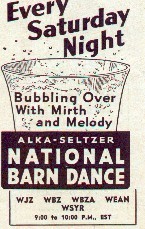 "National Barn Dance | Old Time Radio" <http://otrcat.com/nationalbarndance-p-1661.html>
"National Barn Dance | Old Time Radio" <http://otrcat.com/nationalbarndance-p-1661.html>
1934年、映画プロデューサーのNat Levine という人に声をかけられて、レヴィンの映画会社Mascot Pictures の映画にBurnette と一緒に歌うカウボーイカルテットのメンバーとして出演。翌年は主役級になり、"serial" の The Phantom Empire に出演(serialというのは映画館でメインの映画の間に流す短い続きものの映画です)。Mascot というのは1927年にレヴィンによってつくられたマイナーな映画会社だったのですが(ジョン・ウェインもMascot の西部劇のシリアルに出演しています)、1935年に Republic Pictures に吸収されることになり、オートリーも愛馬Champion と相棒バーネットと一緒にくっついていくことになり、1940年まで40本以上の映画、ぜんぶいわゆるB級ウェスタンに出演することになります。
で、9月8日の記事で書いたように、 それはシンギング・カウボーイとしてのキャリアであり、1936年には "Oh, Susanna!" という、ちょっとパンクチュエーションが微妙に歌と違う、でも"Oh! Susanna" 「おおスザンナ」の歌をフィーチャーした映画をつくったりもしたのでした。で、このあいだの記事では、最後のところに、「この映画の最後はけしからんことにキスシーンでフェードアウトするのですが、どうやらその後次第にジーン・オートリーはカウボーイはかくあるべし、というような考えを抱いていくようになったようなのでした。」と書きました。
それは、どういうことかというと、最近の 「September 29 カウボーイ道 The Cowboy Way, ed. Paul H. Carlson」の記事で引いた歌の文句でいえば、 "I learned of all the rules of the modern-day drifter, Don't you hold on to nothin' too long. Just take what you need from the ladies, then leave them. . ." ということです。「ぼくは現代の渡り者〔カウボーイのことです〕の掟を全部学んだ。ナニモノにも長く執着してはいかん、レディーからは必要なものを受け取るだけで、レディーのもとを去らねばならん」(ほんとは訳に自信なし)。
それは、小林旭に即していうなら、 ふたたびノスタル爺さんのことばを借りれば、「シンギング・カウボーイがキスする相手は愛馬だけなのと同じように、渡り鳥もヒロインに対してキスはおろか、手さえ握らずに別れるんですね。」ということです(『西部劇私的博物館』 <http://www2u.biglobe.ne.jp/~kazu60/museum/index.htm>)。
ジーン・オートリーは、"Cowboy Ten Commandments" とか "The Code of Cowboys" とか "Cowboy Code" とか呼ばれるカウボーイの掟の作者として有名です。いったいいつごろ書いたのか、Wikipediaとか見てもわからないので、ネットで検索すると、近年のHilary ClintonやGeorge Bush がらみの記事がいろいろとあって、いかに「カウボーイの掟」「カウボーイの規範」が倫理的な基準として政治の世界にまで浸透しているか(半分以上まじめに書いています)を感じました(参考―― "George Bush and the Cowboy Code"; "G. W. Bush, the Cowboy Code, and the Iraq War"; Hillary Clinton on Gene Autry's Cowboy Code; AN EDITORIAL: Correcting candidates on criticism of "Cowboy diplomacy)。
それ以上に、広範にアメリカ人の倫理に共感を呼ぶものであることを、ちょっと距離を置きながらですが、感じました。ただ並べるだけのブログ記事がいかに多いことか(笑)。ただ並べるだけでは芸がないので、オートリーの歌「国境の南」にあわせてどうぞ(って他力本願寺ですが)――
"Gene Autry --The Cowboy Code" (2:50) posted by ratpackprincess38 on August 21, 2008
まったり見ている余裕もあらばこそ、このあいだ買った論文集 The Cowboy Way の15章は "Reel Cowboys" という、映画におけるカウボーイを論じたものですが、そこの193ページに "Gene Autry's Cowboy Ten Commandment"という見出しで、あがっているのを引きます。
1. The cowboy must never shoot first, hit a smaller man, or take unfair advantage. (カウボーイは決して先に撃ってはいけないし、自分より小さい者をねらってはいけないし、不正な優位を利用してはいけない。)
2. He must never go back on his word, or a trust confided in him. (カウボーイは決して言葉をたがえてはいけない(約束を裏切ってはいけない)、自分に置かれた信用を裏切ってはいけない。)
3. He must always tell the truth. (カウボーイはつねに真実を話さねばならない。)
4. He must be gentle with children, the elderly, and animals. (カウボーイは子供、老人、動物にやさしくなければならない。)
5. He must not advocate or possess racially or religiously intolerant ideas. (カウボーイは人種的、宗教的に不寛容な考えを唱えたり持ったりしてはいけない。)
6. He must help people in distress. (カウボーイは苦しむ人々を助けねばならない。)
7. He must be a good worker. (カウボーイはよく働かねばならない。)
8. He must keep himself clean in thought, speech, action, and personal habits. (カウボーイは思考、会話、行動、習慣において清潔でなければならない。)
9. He must respect women, parents, and his nation's laws. (カウボーイは女性、両親、国の法律を敬わねばならない。)
10. The cowboy is a patriot. (カウボーイは愛国者である。)
年代は書いてありませんが、オートリーが、映画の曲の多くをを自分でつくり、主題歌を映画のタイトルにするということをした、と書かれたあとで、こんなふうに引用の前に説明があります。――
Gene deliberately demonstrated in his movies an ethical system compatible with the message in his theme song, "Back in the Saddle," where he declared that "the only law is right." The values found in his movies were not put there by accident. While he admitted "no claims for improving their intellects," Gene knew that the front row kids would try to imitate what they saw in the movies. He set down a code of ethics for the genre and urged the other cowboy heroes to adopt the standard. Gene knew that he took some "ribbing" about the Cowboy Code, but he took his role seriously. "I never felt there was anything wrong with striving to be better thatn you are." Consider these rules for cowboys written by Gene Autry and infused into his movies. (193)
そうして、この「カウボーイ十戒」 はまもなく映画産業によってとりあげられるとともに、教会関係者、親、子供たちに認められたこと、ジーン・オートリーとロイ・ロジャーズは清い生活と誠実な仕事は報われるという考えを子供たちに与えたんだというようなことが書かれています(193-194)。ロイ・ロジャーズは1940年代に創設されたRoy Rogers' Riders Club という会の会則としてやっぱり規則を掲げました。――
Roy's Rules
1. Be neat and clean.
2. Be courteous and polite.
3. Always obey your parents.
4. Protect the weak and help them.
5. Be brave butnever take chances.
6. Study hard and learn all you can.
7. Be kind to the animals and care for them.
8. Eat all your food and never waste any.
9. Love God and go to Sunday School regularly.
10. Always respect our flag and our country.
こちらも年代は明確には書かれていません。 で、どっちが先なのかわからん。それに、自分が前にほのめかした、のちにオートリーは潔癖になるという推理の正しさも保証されないのでした。
インターネットで調べを続けた結果を書きます。ブログ関係はだいたい他者追従(あるいはコピペ)が多く、一方年代を書かないという賢明なものも多いのですが、大胆に、"from 1930" とするもの(例1)、"circa 1930" とするもの(例1)、"from 1930s" とするもの〔例1、例2、例3、Cf. Oakland Tribune〕、"1939" とするもの(例1、例2)、"1940" とするもの(例1)、"1944"とするもの(例1)、"1948" とするもの(例1)、"the early 1950's" とするもの(例1)、"the 1950's" とするもの(例1)など、多様です。そのなかでいくらかでも年代についての自信のほどがうかがわれるそうなのを検証すると、第一に、1944年というBoston Globe紙――このときオートリーは従軍しているので、ちょっと不自然(まあ戦時中に執筆したのを戦後発表したというのはありうるかもしれませんが)。第二に、1950年代初頭とする"Westerns" というThe Museum of Broadcast Communications の記事――"Perhaps the most self-conscious moralist of television's first western stars was Gene Autry, who in the early 1950s authored the Cowboy Code" <http://www.museum.tv/archives/etv/W/htmlW/westerns/westerns.htm> 、第三に、1930年代のなかでも1939年と特定し、しかも別のヴァージョンをあげている TKDTutor の "Code of Conduct" という記事 <http://www.tkdtutor.com/03School/Procedures/Code.htm> ――
In the 1930's, Gene Autry, who was a cowboy movie star and a hero to many children of the time, had a fan club that had a cowboy code of conduct. The following is an adaptation of the 1939 Cowboy Code.
Never take unfair advantage of someone. 〔先に撃ってはいけない、とかいうのがないのは「カウボーイは」というのでなく一般人向けのスタイルだからでしょうか。〕
Never go back on your word or reveal a trust confided in you. 〔これの後半は、信頼されて打ち明けられた秘密を漏らすな、というような意味だと思います〕
Always tell the truth.
Be gentle with children, elderly, and animals.
Do not advocate or believe in racially or religiously intolerant ideas.
Help people in distress.
Be a good worker.
Be clean in thought, speech, action, and personal habits.
Respect the opposite sex, parents, and our nation's laws.
- Be a patriot.
しかし、第四に、今日見つけた、1948年を具体的に記述するAssociatedContent のLarry Powell というメディア研究が専門の教授の記事<http://www.associatedcontent.com/article/385580/g_w_bush_the_cowboy_code_and_the_iraq.html?cat=9>――
Gene Autry took a similar approach [as Roy Rogers]. His "Cowboy Code" was first published in Life magazine in 1948 and subsequently promoted in his radio and TV shows. It evolved from a list of rules that governed scripts for Autry's films. The number one item on the list: the cowboy does not shoot first.
この記事によれば、1948年の『ライフ』誌に "Cowboy Code" が掲載され、ラジオやテレビ番組で喧伝されたということです。ここには1しか挙がっていませんが、助動詞が微妙に違うことがわかります。
信じられるところはみんな信じて考えれば、1930年代後半にファンクラブの子供たち向けにこしらえたルール(その先例はいくつかあった可能性があります)が、改編を加えられて、戦後一般に公表され、あらためて映画でも喧伝され、さらに若干の修正が加えられて、今日ジーン・オートリー記念館におさまっているかたち(これは引用した本の文章とまったく同じです)になったのではないかと推測されます―"Gene Autry's Cowboy Code"(画像)。
それで、モーリちゃんの父的にいちばん気になっている問題、キスの問題なのですけれど、New York Times の記事に次のような信用していいかどうかわからない記述がありました。――
Each of Autry's movies honored his own devised ''cowboy code.'' One of the rules was that the cowboy must not kiss the girl.
これも好意的に考えれば、成文化されてはいないが、カウボーイの掟のひとつとして 「カウボーイは決して女の子にキスをしてはならない」というのがあった、という半分ユーモアの記述でしょうか。
それにしても、だいたいは大まじめに共感され、親しまれているのがジーン・オートリーの「カウボーイの掟」なのでした。いろいろ読んでいて少数面白かったブログ記事のなかに、Joan Autrey というマーケティング・コンサルタントが仕事という女性の文章があります<http://joanautrey.typepad.com/joan_autrey_marketing_con/2007/03/cowboy_code.html>。子供のころにAnnie Oakley にあこがれてカウガールになる夢をもつ。アニー・オークリーというのは『アニーよ銃をとれ』のモデルになった射撃の名手です。曲うち・・・・・・というのは太鼓か・・・・・・曲芸的なものも含む恐るべき精度の射撃の腕前をもっていたひとです。バッファロー・ビルの大西部ショーの看板スターでした。
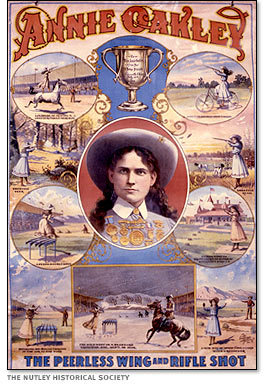 American Experience | Annie Oakley <http://www.pbs.org/wgbh/amex/oakley/index.html>
American Experience | Annie Oakley <http://www.pbs.org/wgbh/amex/oakley/index.html>
ジョーンさんはガンとホルスターを買ってもらい、フリンジの付いたベストとカウボーイハットを身につけテレビに見入ります。もしもカウガールに掟があるなら、それはジーン・オートリーのものと似たものだったろう。それに名前が似ている。
そして、ジョーンさんはブログ記事にオートリーのカウボーイ十戒を引き、"Perhaps one more to add to the list would be, 'He must be flexible when it comes to the honoring the differences between Cowboys and Cowgirls. . .' " と付け加えます(思えば、1939年のヴァージョンだったら"woman" じゃなくて "opposite sex" だったから差別がなくてよかったのにw)。でもそのあとにWill Rogers のCode を書きくわえてブログ記事を閉じるのでした。そうです、ジーン・オートリーが芸能界に入るきっかけをつくったウィル・ロジャーズです。
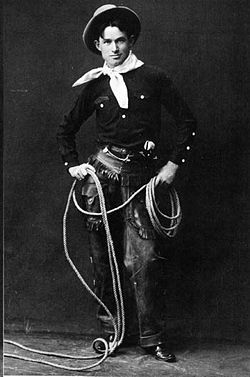 "Will Rogers (1879 - 1935) before 1900" from Wikipedia "Will Rogers" <https://secure.wikimedia.org/wikipedia/en/wiki/Will_Rogers>
"Will Rogers (1879 - 1935) before 1900" from Wikipedia "Will Rogers" <https://secure.wikimedia.org/wikipedia/en/wiki/Will_Rogers>
ウィル・ロジャーズはチェロキーインディアンの血を両親から引く、現在のオクラホマ、当時のIndian Territory* 出身のカウボーイ、ヴォードヴィル役者、ユーモア作家、映画俳優、エッセイストです(英語版のWikipedia "Will Rogers"によれば、lariat の名手で、3本のロープを同時に投げて馬の首と騎手と馬の脚のすべてにかけるというギネス記録をもっていたとか("listed in the Guinness Book of World Records for throwing three ropes at once—one around the neck of a horse, another around the horse's rider, and a third around all four legs of the horse"))。1935年に亡くなったウィル・ロジャーズがこういうパロディーの香りフクイクたる Cowboy Code を残しているということはすでにマジメなCowboy Code 的なものが存在していたことを示すものでしょう。そしてそれは彼がインディアンの血を引いていることとは関係がないと思います。ちょっと8は下品だし10は長すぎますが、こっちの方が好きかも(爆)――
And Then There's Will Rogers
Will Rogers was an author, humorist and philosopher, and a cowboy of considerable wry wit and charm. Here is his take on the Cowboy Code:
- Never slap a man who's chewing tobacco.

- Never kick a cow chip on a hot day.
- There are 2 theories to arguing with a woman...neither works.
- Never miss a good chance to shut up.
- Always drink upstream from the herd.
- If you find yourself in a hole, stop digging.
- The quickest way to double your money is to fold it and put it back in your pocket.
- There are three kinds of men: The ones that learn by reading. The few who learn by observation. The rest of them have to pee on the electric fence.
- Good judgment comes from experience, and a lot of that comes from bad judgment.
- If you're riding' ahead of the herd, take a look back every now and then to make sure it's still there.
- Lettin' the cat outta the bag is a whole lot easier'n puttin' it back.
- After eating an entire bull, a mountain lion felt so good he started roaring. He kept it up until a hunter came along and shot him . . . The moral: When you're full of bull, keep your mouth shut!
Lisa Fabrizio, "George Bush and the Cowboy Code" RenewAmerica <http://www.renewamerica.us/columns/fabrizio/040930> 〔2004.9.30〕
Larry Powell, "G. W. Bush, the Cowboy Code, and the Iraq War" Associated Content <http://www.associatedcontent.com/article/385580/g_w_bush_the_cowboy_code_and_the_iraq.html>
Hillary Clinton on Gene Autry's Cowboy Code <http://www.nhelects.com/NHPrimaryVideos.asp?MultiID=68&HTitle=VLTitle> 〔Hillary Clinton - Sentinel Interview 11/7/07〕
AN EDITORIAL: Correcting candidates on criticism of "Cowboy diplomacy" <http://nhelects.org/NHPrimaryEditorials.asp?LinkID=18&HTitle=EdTitle> 〔"The View from Cheshire County: The N. H. Presidential Primary: A Feature of SentinelSource.com no date〕
Mark Whittington, "Barack Obama to Hillary Clinton: You're No Annie Oakley: And Other Comparisons by Candidates to the Greats of History" <http://www.associatedcontent.com/article/713765/barack_obama_to_hillary_clinton_youre.html?cat=9>
Alvin Klein, "Cowboy Music, but No Horse" <http://query.nytimes.com/gst/fullpage.html?res=950DEEDA153DF935A15752C1A96F948260> 〔New York Times, THEATER: November 26, 1989〕
Joan Autrey, "Gene Autry's 1939 Cowboy Code of Ethics" <http://joanautrey.typepad.com/joan_autrey_marketing_con/2007/03/cowboy_code.html>
* Indian Territory
 "Oklahoma and Indian Territory, 1890s"
"Oklahoma and Indian Territory, 1890s"
Wikipedia, "Indian Territory" <https://secure.wikimedia.org/wikipedia/en/wiki/Indian_Territory>
こんなところまで長々と読んでいただいたのは他生の縁をさえ感じます。どれでも押してもらえるとうれしく泣いてしまいそうです。

September 25 お米の国のお米 Kokuho Rose [料理・食べ物 cooking foods]
September 25, 2008 (Thursday)
この日、インターナショナル・ハウスで4時から6時まで外国から研究に来た人たちを集めての歓迎会があった。わざわざ出欠のE-mail 返信を求めてきただけでなく、葉書きでも案内が来て、いちおうせっかくだからということで出かけることにしたモーリちゃんの父でした。なんか話せとか言われたらどうしよう、とか思って1,2分のスピーチを考えながらバスに揺られていったのだが、50人くらいが適当のHome Room という部屋に倍以上は入って、ミツバチの巣のようなブンブンうなる喧噪の空間になってしまった。バルコニーに出ようにも立錐の余地もなく、西日が暑くてたまらんし、呼んでくれた国際関係学部だかの学部長の話とI House の職員の話が終わったところで早々に退席した。男の子を連れてきていた人と、物理学の温厚な人と、ちょっと話をしただけだった。日本人が4人はいたと思うが、ぜんぜん話さなかった(いちおう名札で専門を窺ったのだが、自分ひとり浮いてたしw)。
52Lのバスは、何カ月か前は、運転手がしぐさや声で、まだ乗るな、みたいな感じでしばらく客を乗せずに停まっていたものだったが(というのはそこが終点・始点だから)、今は来たらすぐに乗れるようになったみたい。
まだ5時をちょっと過ぎたくらいだったし、Tokyo Fish Market でめんつゆを買っていこうと思ってSan Pablo の途中で降りた。入ってすぐ目の前にお米の袋が積んであるのだが、どぎつい紅色のKokuho Rose と並んで、Koda Farms 名が入った国宝ローズがふたつだけ積まれていた。
あ゛、コーダ米だ!
ということで、ふだんは10ポンドしか買わないのに、20ポンドの袋を買ったのでした。ひとつには数日前にYaoya-San Market にいったモーリちゃんの母が、お米の値段があがってたし重くて買えなかった~、とか言っていたからです。たしか5月に一度値上げがあって、そのとき八百屋さんだけ値上げしなかったのだけれど。
"Kokuho Rose" と称するお米は何種類かあります。たとえば、カリフォルニア州Whittier でアジア系食材の卸をしている中国系の人が社長の会社Giant Union のホームページには、扱っているお米が写真入りで並んでいますが、国宝ローズはつぎのようです。――
KOKUHO RICE 國寶中米
Kokuho Rice 國寶米, Red 紅國寶 , Yellow 黃國寶
Packing 包裝 : 20 Lbs, 50 Lbs
Kokuho 國寶
"Giant Union: Products: Grain" <http://www.gufood.com/grain.htm>
この黄色いの、実は見たことはないです。左の派手なのはよく見る・・・・・つうか、テレビでも見るのはこれですね、「最高級新品種米」というのもコマーシャルのフレーズに入っています。
あと、Kokuho じゃないけれど、California Rose というのもお仲間かしら――
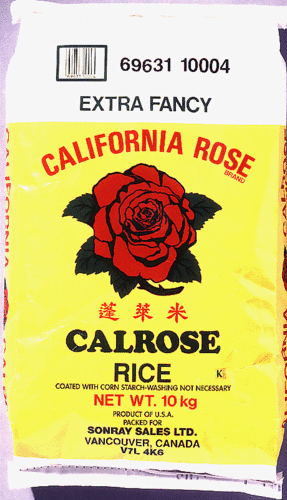 "Types of Rice" SONRAY SALES LTD <http://www.sonray.com/Types%20of%20Rice.htm>
"Types of Rice" SONRAY SALES LTD <http://www.sonray.com/Types%20of%20Rice.htm>
Calrose - Japonica rice, short and medium grain, grown primarily in California. Used in Japanese, Italian and Caribbean cuisines because it is clingy, moist and firm when cooked.
このSonray Sales というのはカナダの業者です。いろいろと説明はくわしく、国宝ローズについても歴史的なところから語っています。そのなかで、コマーシャルで名前が出てくる Nomura & Company と Koda Farms の関係については、1948年にKoad Farmsが新品種のコメの改良に成功、そして "The Koda Family and Nomura and Company of San Francisco, the marketing agents for Koda Farms, were quick to recognize the potential of this new rice and dedicated themselves to its further development." と書かれています<http://www.sonray.com/kokuho_rose%20page.htm>。
なお、Calrose という米の品種は Koda Farms でも "Kokuho Blue" としてつくられています。――
 "KODA FARMS - Products" <http://www.kodafarms.com/products.html#krosebrown>
"KODA FARMS - Products" <http://www.kodafarms.com/products.html#krosebrown>
Koda Farms のホームページではよくある質問の中で、当然とはいえ、Nomura との関係が尋ねられ、以下のような回答となっています。――
What is Koda Farms’ relationship with Nomura and Co.?
Nomura and Co. is Koda Farms’ main broker for the nationwide distribution of Koda Farms Kokuho Rose. Koda Farms enjoys a longtime affiliation with this venerable company. Nomura and Co. is located in Burlingame, California and can be reached at telephone number, 650 692 5457.
それから、商標について――
Who owns the Kokuho Rose trademark?
In continuous use since 1962, Kokuho Rose is the trademark and property of the Koda family business, which alone produces the pure strain of this specific variety. Historically, this rice was grown in very limited quantities. Hence, permission was granted to Nomura and Co., Inc. to utilize this trademark on Nomura’s own variety of rice.
あとは推して知るべし、ということでしょうか。
ともかく、Nomura と Koda は区別されるものであり、それは次の2000年に発表されたらしい学術的(だかなんだかわからんが)記述にも明らかです――
今回行った米国西海岸都市に立地するジャポニカ米販売店における小売価格の調査結果をまとめると,第1~第3表のとおりである。これによると,ロスアンゼルスは米国西海岸の最大都市であり,日系人による需要と共に,ジャポニカ米の生産地帯であるサクラメントに隣接する穀倉地帯を背景に,短粒種ジャポニカ米の流通が盛んで,取扱品目も多いことが分かる。一方,アリゾナ州はコロラド川を隔ててカリフォルニアと隣接しているにもかかわらず,自然立地条件はカリフォルニア州とは大きく異なり,コメ流通に関しても大きく違ってくる。すなわち、長粒種の販売が多く,短粒種の流通は少ない,スーパーによっては全く短粒種が取り扱われていないこともある。
しかしロスアンゼルス市内のスーパーでは,特に日本人の多く居住しているリトル東京に隣接している小型マーケットでは取扱銘柄も多く,小売価格にも大きな価格幅が見られる。特にNishiki,及びGold tamakiについてはかなり高く,一般的なShirakiku,Botanなどと比較しておよそ2倍に近い価格で販売されている(注2)。
ここでわれわれは,先に行っている米国主要都市におけるジャポニカ米の小売価格調査結果をも参考に(注3),これらの銘柄米について次のように高価格良質米をA,それ以外の銘柄米をBとして次のようにランク分けを行うこととする。
<!--[if !supportEmptyParas]--> <!--[endif]-->
Aランク米:Gold tamaki, Kokuho koda, Nishiki
Bランク米:Shirakiku, Botan, Hikari, New rose, Akita otome,
Kokuho nomura, Calrose rice, ニコニコ米
<!--[if !supportEmptyParas]--> <!--[endif]-->
さらに,米国内販売小売価格はポンドをkg換算し,均衡関税率は10kgを22.046LBとして算出した。
<!--[if !supportEmptyParas]--> <!--[endif]-->
(注2)われわれは現地でGold tamaki米を購入し,試食を行った。はじめは水分不足の調整に失敗したが,炊飯の説明書に従って炊飯したところ,極めて美味しいご飯を炊くことができた。一般的に日本国内のやや上位にランクされているきらら397等と比較して全く劣らない食味を確認することができた。
(注3)先の米国主要都市におけるジャポニカ米の小売価格調査結果(第8回ジャポニカ米・国際学術調査報告会及びシンポジウム-2000年3月)をも参考に,ランクを設定した。因みに同調査報告では現地の小売価格調査に基づいて次のようにランク区分を行った。
Aランク米:国宝ローズ国府田米,コシヒカリ,ヒカリ,田牧米,秋田こまち・おとめなど.
Bランク米:国宝ローズ(ピンク,イエロー),錦,ボタン(キャルローズ・ライス),菊,
白菊(キャルローズ・ライス)など.
<!--[if !supportEmptyParas]--> <!--[endif]-->
第1表 ロスアンゼルス市内コメ小売価格 単位:$
<!--[if !supportEmptyParas]--> <!--[endif]-->
<!--[if !supportEmptyParas]--> <!--[endif]-->
<!--[if !supportEmptyParas]--> <!--[endif]-->
( ENBUN MARKET 店) ( MITUWA 店)
<!--[if !supportEmptyParas]--> <!--[endif]-->
<!--[if !supportEmptyParas]--> <!--[endif]-->
<!--[if !supportEmptyParas]--> <!--[endif]-->
<!--[if !supportEmptyParas]--> <!--[endif]-->
<!--[if !supportEmptyParas]--> <!--[endif]-->
(LB) 5 10 20 22.046 5 10 20 22.046
(kg) 2.26 4.53 9.06 10.0 2.26 4.53 9.06 10.0
<!--[if !supportEmptyParas]--> <!--[endif]-->
<!--[if !supportEmptyParas]--> <!--[endif]-->
<!--[if !supportEmptyParas]--> <!--[endif]-->
Shirakiku 2.59 4.59 6.69 7.37 2.99 4.99 7.99 8.81
B Botan 2.69 5.09 6.79 7.48 - 5.99 9.49 10.46
ラ Hikari - 5.79 9.69 10.68 - - 9.99 11.01
ン New rose - 5.69 9.49 10.46 - 6.49 9.49 10.46
ク Tamaki - - 11.99 13.21 - - - -
米 Akita otome - - 11.99 13.21 - - - -
Kokuho nomura - - 10.59 11.67 - - - -
<!--[if !supportEmptyParas]--> <!--[endif]-->
Aラ Nishiki 3.79 6.59 10.49 11.56 4.29 7.99 12.99 14.31
ンク Kokuho koda - - 12.99 14.31 - - - -
米 Gold tamaki 4.89 9.49 16.99 18.72 5.99 - 18.99 20.93
<!--[if !supportEmptyParas]--> <!--[endif]-->
<!--[if !supportEmptyParas]--> <!--[endif]-->
<!--[if !supportEmptyParas]--> <!--[endif]-->
<!--[if !supportEmptyParas]--> <!--[endif]-->
平均価格 3.49 6.20 10.77 11.86 4.42 6.36 11.49 12.66
<!--[if !supportEmptyParas]--> <!--[endif]-->
<!--[if !supportEmptyParas]--> <!--[endif]-->
<!--[if !supportEmptyParas]--> <!--[endif]-->
注) 実際の販売単位は5,10,20LBであるが,22.046LB(10kg)は20LB売りを基礎に比例換
算したものである.
〔笠原浩三「米国における短粒種米の小売価格と均衡関税率について」 <http://worldfood.apionet.or.jp/web/8.htm>〕
だから、国宝ローズはまずい、錦のほうがまだよい、などと簡単に言ってはいけません。国府田ファームのを食べてから言いましょー。(ところで、Nomuraのはたくさん積んであったのですが、Tokyo Fish Market ではKoda と同じ値段でした。)
☆読むと納得して幸せな気持ちになるブログ記事 「アメリカのお米について」 <http://ameblo.jp/aizmon/entry-10046214028.html> 〔aizmon さんの『幸せLA生活』 2007.9.7〕
☆やっぱり昔は粒が長かったんだと納得するブログ記事 「NY時代を思い出すカルフォルニア米 Kokuho Rose」 <http://blog.livedoor.jp/yasukpp/archives/51993622.html> 〔ヤスさんの『真珠の街神戸のパールコーディネーター』 2008.8.3〕・・・・・・でもチャイナタウンに売っていたのはこっちじゃなかったのではないかという気もします。個人的にはこちらもそれなりにおいしいと思っています、実は。――
「紅國寶壽司米生產及包裝於美國加州自家農田,在1963年以首個遠低於美國第一標準 ─ 少於2%不完整米粒的優質珍珠米種品牌推出市場。其溫和且多元化的堅果微香,帶點甜的餘味及微濕的質感一直深受顧客歡迎。」「獨 家 品 牌 4) 紅國寶壽司米」 <http://www.wingsangcheong.com/chinese/html/products_others.htm>
(画像が反転していたので直しました)。
--------------------------------------------
「カリフォルニア米事情」 OMIC Report <http://www.omicnet.com/omicnet/report/rice/ca-rice.html> 〔やはりだんだん短くなっているのか〕
William Grimes, "California's Hidden Harvest; In the land of avocados, new and extotic varieties of rice are flourishing" New York Times, November 11, 1998 <http://query.nytimes.com/gst/fullpage.html?res=9405E1D91E3EF932A25752C1A96E958260&sec=health&spon=&pagewanted=3>
October 3, September 30 アイラ・ガーシュウィンの「ス・ワンダフル」 (2) " 'S Wonderful" by Ira Gershwin (2) [歌・詩]
October 3, 2008 (Friday)
September 30, 2008 (Tuesday)
September 15 アイラ・ガーシュウィンの「ス・ワンダフル」 (1) " 'S Wonderful" by Ira Gershwin (1)
の1つ続きですが、
それの3分の1つづきの
September 26 アイラ・ガーシュウィンの「ス・ワンダフル」 (1 1/3) " 'S Wonderful" by Ira Gershwin (1 1/3) の3分の1つづきの
September 27 アイラ・ガーシュウィンの「ス・ワンダフル」 (1 2/3) " 'S Wonderful" by Ira Gershwin (1 2/3)
の3分の1続きでもあります。
" 'S Wonderful " の歌詞がどうにもインターネットでは確定しないので、本の世界に入ることにし、図書館で参照しようとして前もって家で調べて書きだした本は以下の3冊でした。
Tommy Kraser. Catalog of the American Musical. [ML128.M78 K721 1988]
Ira Gershwin. Lyrics on Several Occasions. [ML54.6.G28 L9 1977]
The Complete Lyrics of Ira Gershwin [ML54.6.G28 K55 1993]
まんなかの本はアイラ・ガーシュウィン(1896 - 1983) が1959年、自らの作品104曲の歌詞に解説や随想を付与してまとめた「詩集」です。
Ira Gershwin, Gent. Lyrics on Several Occasions: A Selection of Stage & Screen Lyrics Written for Sundry Situations ; And Now Arranged in Arbitrary Categories ; To Which Have Been Added Many Informative Annotations & Disquisitions on Their Why & Wherefore, Their Whom-for, Their How, and Matters Associative. (New York: Knopf, 1959. 424pp. OCLC: 155771149) という、長々とした、古風なタイトルの、瀟洒な本です。著者名のIra Gershwin にくっついている "Gent." は Gentleman で、「紳士」。アメリカ文学だとワシントン・アーヴィングが仮面をかぶって出した『スケッチ・ブック』(1819-20) その他が "Geoffrey Crayon, Gent." の著とか、という感じで、これも古臭い(まあ、「紳士」というのに別の意味がこめられておるのでしょうけれど――ジェントルマンというのは歴史的には貴族には入らないけれども家紋をつけることのできる身分(Yeoman(郷士)より上) ・・・・・・もちろんアメリカには封建身分と貴族制度はないですから独立後に消えていくさだめ・・・・・・だったわけですが、それをのちのいわゆる現代の、しかしこちらもアメリカ的には消えつつある紳士とダブらせているのでしょう、か)。現在はいくつかのペーパーバック版が出ています(あまぞん)。これは前に紹介した「阿野音楽教室(Jazz&pops/classic)」というページが参照している本です。
'S WONDERFUL
FUNNY FACE (1927). Music, Geroge Gershwin. "Liltingly." Adele Astaire was Frankie, Allen Kearns was Peter.Peter
Life has just begun;
Jack has found his Jill.
Don't know what you've done,
But I'm all a-thrill.
How can words express
Your divine appeal?
You could never guess
All the love I feel.
From now on, lady, I insist,
For me no other girls exist.Refrain
'S wonderful! 'S marvelous―
You should care for me!
'S awful nice! 'S Paradise―
'S what I love to see!
You've made my life so glamorous,
You can't blame me for feeling amorous.
Oh, 's wonderful! 'S marvelous―
That you should care for me!Frankie
Don't mind telling you,
In my humble fash,
That you thrill me through
With a tender pash.
When you said you care,
'Magine my emosh;
I swore, then and there,
Permanent devosh.
You made all other boys seem blah;
Just you alone filled me with AHH!Refrain
'S wonderful! 'S marvelous―
You should care for me!
'S awful nice! 'S Paradise―
'S what I love to see!
My dear, it's four leaf clover time;
From now on my heart's working overtime.
Oh, 's wonderful! 'S marvelous―
That you should care for me!
以上が詩と詩の前置きの部分の全部で、あとは2段落にわたって音の効果について(この曲は "Sound Effects" という「カテゴリー」に入れられています)の解説、そしてスペースをあけて"The Proper Twenties" と題した時代随筆のようなものが1段落(あわせて25行くらい)ついています。それはあの阿野音楽教室のページに日本語訳で引かれているので参照してください。・・・・・・あ、省略されている部分もありますし、2段落だけ原文を引いておきます。――
The principal reason for writing this lyric was to feature the sibilant sound effect by deleting the "it" of "it's" and slurring the leftover "s" with the first syllable of the following word. So I'm frequently baffled by what some singers have in mind and throat when they formalize the phrases to "It's wonderful," "It's marvelous," "It's Paradise," &c.
Re "fash," "pash," "emosh," and "devosh" in the second verse: I had heard comedian Walter Catlett in Lady, Be Good! clipping syllables from some favored words, so thought it would be novel to adopt this device in a song. I used it first in "Sunny Disposish," written with composer Phil Charig for Americana. (A few years later I came across some light verse by England's Captain Harry Graham to discover that he had specialized in this lopping-off device long before me.)
あ、引用だけだとさみしいだけでなく、著作権で目を付けられるかもしれないので、 日本語を書き足しておきます(姑息)。最初の段落の後半の、歌手のなかには "It's"と直す者がいて、いったいこのひとの喉と頭の中はどうなってるんだろうと困惑する、というのは、たとえば、この人たちです。―― <http://uk.youtube.com/watch?v=55oZN24D9S8> (Connie Frances 0:51); <http://uk.youtube.com/watch?v=9-zfro7lecc> <http://uk.youtube.com/watch?v=dlFuG3i2kTE> (Shirley Bassey 6:18; 4:44)。
Lady, Be Good! は ガーシュウィン兄弟がFred Astaire, Adele Astaire たちと組んだ最初のミュージカルで1924年。Americanaは1926年のミュージカル(曲はジョージではなくてPhil(lip) Charig でした)。そのあと、この語尾を落とすという工夫は既にHarry Graham がずっと以前からやっていたことがわかった、と書かれています。ハリー・グレアムはちょっと変人のイギリスのライト・ヴァース詩人ですが、ブロードウェイのミュージカルにも詞を提供した人です。なお、アイラ自身はこういう説明なのですが、語尾をはっきり発音しないこういう話し方というのは1920年代のフラッパーの会話の特徴なのだというのがPhilip Furia の前掲書の説です(65-66ページ)。
WEB上で見つかったもので上の歌詞の並びにいちばん忠実なのは、1997年1月31日にニューヨークのCarnegie Hall で行われたアイラ・ガーシュウィン生誕100年記念コンサートのRon Raines と4+8人の女性たち(豪華だわ~)のパフォーマンスです。――
" Ron Raines " 'S Wonderful " " (3:45) posted by "hanssmacker" on November 26, 2007
歌詞で、Peter, Frankie と見出しがある、その直後のスタンザはそれぞれのいわゆる verse 部なのですが、続けてそれぞれ活字としてはPeter やFrankie と同じ位置に、同じ字体、同じ大きさで書かれている Refrain 部分(つまりChorus)の歌い手が誰なのか。それぞれ Peter と Frankie と考えたいのですが・・・・・・。この生誕100年記念コンサートはたいへん立派なものだったのだろうと思われますけれど、Frankie は4人に増えているし、8人バックを固めているので、どうもよくわからない。あ、もちろん聞けばおわかりのとおり、 Frankie のverse は女声で、そのあとの Refrain は男声のRon Raines がリードして女声が輪唱的にリピートしたり、合唱したりしています。
歌詞を見比べてわかることは、あの阿野さんの歌詞は、コーラス部分で男声と女声でちがう2行のみをカッコにいれて短縮したものだということ、改行も節約したものだということが了解されます。あ、もうせっかくだから、訳詞とともに再引用します。――
Verse 1 (male)
Life has just begun, Jack has found his Jill
Don't know what you've done, but I'm all athrill [a-thrill]
How can words express your divine appeal?
You could never guess all the love I feel
From now on, lady, I insist
For me no other girl[s] exist
Verse 2 (female)
Don't mind telling you in my humble fash
That you thrill me through with a tender pash
When you said you care, 'magine my emosh
I swore, that [then] and there, permanent devosh
You made all other boys seem blah
Just you alone filled me with aah!
Chorus
'S wonderful! 'S marvelous
You should care for me!
'S awful nice! 'S Paradise
'S what I love to see!
You've made my life so glamorous
You can't blame me for feeling amorous
(My dear, it's four leaf clover time
From now on my heart's working overtime)
Oh, 'S wonderful! 'S marvelous
That you should care for me!
ヴァース1(男性)
人生はたった今始まったんだ、ジャックがジルを見つけたのさ
君が何をしたのか知らないけど、僕は興奮でいっぱいさ
君の素晴らしい魅力は言葉では表現できそうもないな
僕の感じている熱い思いは君には判りっこないさ
ねえ、僕はこう言いたいんだ、いまこの瞬間から
もうほかの女性は僕には存在しないとね
ヴァース2(女性)
あなたは優しい情熱で私を魅了してしまったって
素直に言わせてもらうわ
私を好きだってあなたが言った時の私の興奮ぶりを想像してみて
そのときそこで私は永久にあなたに尽くそうと決心したの
あなたはほかの男性たちを皆つまらないものにしちゃったわ
わたしにアァって溜め息をあげさせるのはあなただけ
コーラス
スーばらしいな、なんてスーてきなんだろう!
きみが愛してくれるなんて
スーごくいいな、スーっとして天国にいったみたいさ
見てるだけでもスーきになっちゃうね
きみが僕の生活を輝かせちゃったんだぜ
僕が恋の気分に浮かれたからって責めないでおくれよ
(もう幸せいっぱいの時間ね!
私の心ははしゃぎすぎて、これからはオーバー・タイムよ)
スーばらしいな、なんてスーてきなんだろう!
きみが僕を愛してくれるなんて <http://www.anomusic.com/kashi/body_l.htm>
パンクチュエーションも含めて、灰色にした部分は書き写した際の誤差(?)の範囲内だと思われます。
ですが、Ella Fitzgerald Page あるいは George and Ira Gershwin Lyrics Pageを源泉にしてネットに広まっている "Original Version" とはくりかえしの書き方がちがうものもありますが、やはりこれが元なのだろうと推定されます(特にオオモトのこれ <http://www.thepeaches.com/music/ella/SWonderful.htm> は)。Lyrics なんたらいうような各種あるページでリフレイン部分がやたら長いものは、善意なのかもしれない(つまり、聞いたら繰り返し歌っていたから)、あるいはコピペの誤りなのかもしれない。
ちょっと長くなったので、その(3) へ続きます。
October 4 ミュージカルの歌詞というもの(上)――アイラ・ガーシュウィンの「ス・ワンダフル」 (3) On Musical Lyrics: " 'S Wonderful" by Ira Gershwin (3) [歌・詩]
October 04, 2008 (Saturday)
October 3, September 30 アイラ・ガーシュウィンの「ス・ワンダフル」 (2) " 'S Wonderful" by Ira Gershwin (2)
のつづきです。
1993年、The Complete Lyrics of Ira Gershwin という、3段(列)組の大型本が、アイラ・ガーシュウィン (1896 -1983) が生前に Lyrics on Several Occasions を出したニューヨークのKnopf 社から刊行されます。もっともこれはシリーズ本で、他にも同じ編者により The Complete Lyrics of Cole Porter (1983), The Complete Lyrics of Lorenz Hart (1986, ed. with Dorothy Hart), The Complete Lyrics of Irving Berlin (2000, ed. with Linda Emmet), The Complete Lyrics of Frank Loesser (2003, ed. with Stephen Nelson)と出されて、今年2008年にはAmy Asch 編による The Complete Lyrics of Oscar Hammerstein II が出た、立派なシリーズです。
Robert Kimball, ed. The Complete Lyrics of Ira Gershwin. New York: Knopf, 1993; rpt. London: Pavilion, 1994; New York: Da Capo, 1998. ISBN:0394556518 : 9780394556512; 185793248X 9781857932485; 0306808560 9780306808562. 448pp.
700曲の歌詞がおさめられていますが、その半分以上はそれまで印刷されたことがなかったもので、図書館や原稿や個人のコレクションやらを渉猟してまとめられたものです。本の頭にはくわしい年譜がついていて、巻末には詳細な索引もついています。年代順に並んでいて、ミュージカル挿入歌の場合はミュージカルごとにまとめられているのですが、Funny Face は101頁から112ページまで、収録歌詞は順に、"Birthday Party" "Funny Face" "High Hat" "'S Wonderful" "Let's Kiss and Make Up" " Come! Come! Come Closer!" "Finale, Act I" "In the Swim" "He Loves and She Loves" "Tell the Doc" "My One and Only" "The Babbitt and the Bromide" "Blue Hullabaloo" "Aviator" "When You're Single" "Your Eyes! Your Smile!" "How Long Has This Been Going On?" "The World Is Mine" "Finest of the Finest" "Dance Alone with You" "Acrobats" "Bluebeard" "Invalid Entrance" "When the Right One Comes Along"となっています。
"'S Wonderful" は103ページの3コラム目の頭から、104ページの3コラム目の4行目までに載っています。まず冒頭で1927年10月に発表された詞であること、Adele Astaire (Frankie 役) と Allen Kearns (Peter 役) の持ち歌だが、〔Funny Face にタイトルを変えてブロードウェイの舞台に11月に あがる、その前1ヶ月間 Smartyという題で〕tryout したときにはPeter 役はだいたいは Stanley Ridges だったこと、そしてロンドン公演ではAdele Astaireと Bernard Clifton が歌ったことが注記されています。それから線で区切って、Lyrics on Several Occasionsから3段落まるごとIra Gershwin のコメンタリーが引用されています(これについては前のブログ記事を参照)。そして、使われなかったヴァージョンも含む、この歌のテキストが記載されています(まあ、細かいことをいうと、字句のちがいはどこに由来するのかtextual notes がほしいところではありますが)。――
VERSE 1
PETER: Life has just begun:
Jack has found his Jill.
Don't know what you've done,
But I'm all a-thrill.
How can words express
Your divine appeal?
You could never guess
All the love I feel.
From now on, lady, I insist,
For me no other girls exist.
REFRAIN 1
'S wonderful! 'S marvelous―
You should care for me!
'S awful nice! 'S Paradise―
'S what I love to see!
You've made my life so glamorous,
You can't blame me for feeling amorous
Oh, 's wonderful! 'S marvelous―
That you should care for me!
VERSE 2
FRANKIE: Don't mine telling you
In my humble fash
That you thrill me through
With a tender pash.
When you said you care,
'Magine my emosh;
I swore, then and there,
Permanent devosh.
You made all other boys seem blah;
Just you alone filled me with AAH!
REFRAIN 2
'S wonderful! 'S marvelous―
You should care for me!
'S awful nice! 'S Paradise―
'S what I love to see!
My dear, it's four-leaf-clover time;
From now on my heart's working overtime
Oh, 's wonderful! 'S marvelous―
That you should care for me!
ここまでは、"four-leaf-clover" のハイフンの有無や、"Life has just begun:" のコロンとかいう問題を別にすれば、並びも含めてLyrics on Several Occasions と同じ情報です。しかし、このあとにあれこれとvariant が並んでるのです。まず " Version sung in 'Finale Ultimo' " と題された10行――
FRANKIE: 'S wonderful!
PETER: 'S marvelous―
BOTH: City hall's in view.
FRANKIE: 'S marriage licence.
PETER: 'S Niag'ra Fall.
BOTH: 'S 'appiness for two!
DUGSIE: You've made my life so ting-a-lish;
I'll even overlook your Eng-a-lish.
JIMMY: Oh, wedding bells fill the air
Now that I know you care.
なんですのん、これ? わ、わからん。ということで先送りにして、"Unused Stanzas" 一挙公開――
VERSE 3
PETER: How can I refuse
Damsel in distress?
FRANKIE: There's no time to lose
On this awful mess.
PETER: If danger you behold,
Please do not be blue.
FRANKIE: Like a knight of old,
I know you'd come through.
PETER: I'm at your beck and call, you see,
A Boy Scout once I used to be.
REFRAIN 3
'S wonderful! 'S marvelous―
Fate sent me to you.
Chivalry 'peals to me;
Your troubles I'll undo.
Fair maid, your smile will lead me on;
And your rescue I will speed me on.
Oh, 's wonderful! 'S marvelous―
Meeting someone like you.
VERSE 4
FRANKIE: If I'm in a daze,
I am not to blame.
Having heard your praise,
I'll never be the same.
When at last fate brings,
Someone you adore,
And he tells you things―
Who could ask for more?
There really is Santa Claus!
My dear, I'm sure there is, because
REFRAIN 4
[refrain 2 に同じ]
VERSE 5
PETER: You are very young;
Shouldn't talk that way.
You're too highly strung
To know what you say.
Someday there'll appear
Your ideal, no doubt;
I am only here
Just to help you out.
There will be hundreds, by and by,
Who'll be far worthier than I.
REFRAIN 5
'S wonderful! 'S marvelous―
All that you've told me[.]
'S awful nice! 'S Paradise―
To that I must agree.
But oh, what's all this dizziness?
I thought that I came here on business.
Oh, 's wonderful! 'S marvelous!
But why must you pick on me?
REFRAIN 6
'S magnifique! 'S what I seek―
You should care for me!
'S élégant! 'S what I want!
'S what I love to see!
You've made my life so ting-a-lish;
I'll even overlook your Eng-a-lish..
'S exceptionnel! 'S no bagatelle―
That you should care for me!
以上でテキストは終わりです。verse 3 はほとんど芝居のセリフのようです。いやー、やっぱりこういうミュージカル作詞家はほとんどシェークスピアみたいなものですね、韻を踏みながら詩行でセリフをつくっていくという。それからrefrain 6 ではどこかで見たことのあるフレーズに出会うのでした。はい、そうです。エラ・フィッツジェラルドの歌の最後のところです――
's magnificque, 's what I seek
You should care for me.
's elegant, 's what I want,
's what I love to see.
My dear, it's four leaved clover time,
From now on my heart's working overtime,
's exceptional, 's no bagatelle,
That you should care for me. [thepeaches.com]
そしてまた、 thePeaches.com だと "From the Film: An American In Paris 1950 (M)" としている、その映画『巴里のアメリカ人』へのアイラ・ガーシュウィンの関与として Philip Furia が記述していたフレーズがここに合わせて出てくるではないですか(「September 26 アイラ・ガーシュウィンの「ス・ワンダフル」 (1 1/3) " 'S Wonderful" by Ira Gershwin (1 1/3)」 を参照)。つまり、研究者のPhilip Furia によれば、アイラは、フランス人とアメリカ人の男ふたりによるデュエットという設定のために新たな「コーラス」部の歌詞を書き足しました。英語とフランス語のまじりあいのあと、最後はこうなって締めくくられると――
You've made my life so ting-a-lish;
I'll even overlook your Eng-a-lish!
'S exceptionnel! 'S no bagatelle―
That you should care for me!
そして、だけど、この歌詞が映画にほんとにあるんだろうかないんだろうか、ということも書きました。Furia の文章というのは、そのときに直接引かなかった言葉もあわせて原文で引けば、ここです、ここ――
Ira added a new chorus to " 'S Wonderful " to provide a Franco-American duet between Kelly and Georges Guetary. The Frenchman exults " 'S magnifique!" and ["] 'S elegant!" while Kelly shoots back with " 'S what I seek" and " 'S what I want." (Ira Gershwin: The Art of the Lyricist [OUP, 1996] 208)
ウソだったのかよ、半分は。 このFuria の本に引かれている4行は、refrain 6 の後半そのままです。Furia の本が出たのは1996年で、索引を見ると一ヶ所だけ、Robert Kimball のComplete Lyrics への言及はあります(p. 96; note20 (252)) が、あとはKimballの他の著書への言及はあるものの、Complete Lyrics のテキストを使ったふうには見えません。どういうことなのでしょうか。Complete Lyrics のテキストにはミュージカルのあとの戦後の映画のためのアイラの原稿がまぎれこんだのでしょうか。
なんか週末はモーリちゃんがパソコンでアニメを見るので、なかなか書けません。以上書いてから十数時間たって、ようやく日曜日の朝早起きして戻ってきたところです。ここでもう一度切って考えをまとめて出直してきます。
あ、アイラ・ガーシュウィンが、映画『巴里のアメリカ人』に、亡くなったジョージのようにクレジットだけではなくって in person に関与していたことは、証拠がありますねん。
左から、Vincent Minnelli (監督 director), Ira Gershwin (音楽・詞 music: lyrics), Gene Kelly (Jerry Mulligan 役), Arthur Freed (プロデュース producer) (1950).
と、写真の加工に時間をとったりもして、その勢いでもうちょっと書きます。
この、Furia は 映画『巴里のアメリカ人』で addしたと記述している歌詞の一部は、しかし、上で、引用しっぱなしにした " Version sung in 'Finale Ultimo' "に出てきていました (DUGSIE: You've made my life so ting-a-lish; I'll even overlook your Eng-a-lish.)。だから、新たに書き足したのではなくて、過去の詞を再利用した、というのが正しいでしょう。
どうして音楽学者や文学楽者は適当なことを思いついたままに書くのでしょう。
a) 人による。 b) 人のことは言えんぞ。
a)----------------------------------------------------------------
Crazy for Gershwin <http://ira.blogtribe.org/?bid=> 〔"Finale Ultimo" を調べていて遭遇したガーシュウィンのファンの日本人のブログ 「GershwinのCDをひたすら紹介するブログ。(主旨説明)」 アルバム情報がくわしいです。「オリジナル・キャスト・レコーディング・シリーズ」に Funny Face はないのかしら・・・・・・あとで調べてみよ〕
文献メモ( October 12 【personal note】 Funny Face (1927))
をはさんで、以下へ続きます。
October 3, 4 カリフォルニアの空 [天気 weather]
October 03-04, 2008 (Friday-Saturday)
天気予報では3日の午後6時くらいに雨が降って、さらにこの日の夜は夜中も降るかも、と言っていたのだが、金曜の夜はなかなか降らなかった。夕方のテレビでも、雨はどうなったのでしょう、みたいな質問がお天気お姉さんに浴びせられていたが。それでも、よくわからないが――あ、調べるすべはあります――夜中に少しは降ったようで、土曜日にベランダに出てみると、細かい土ぼこりが雨で押さえられたような模様が手すりなどにあった。
金曜日の夕方、雲が西の空にモコモコ出ているのはわかった。ちょっとモーリちゃんの父的カリフォルニア的には珍しい空なので写真を撮った(クリックで意外と拡大)。――
あくる土曜日は、少なくとも朝起きたときには晴れていた。目覚めた時にはいつでも晴れて♪ (伝書鳩)
土曜の夜はパラダイス、じゃなくて、夜には三日月が出た。
この月は、8時ちょっと前に、ビールを買いに行ったときに見て、帰ってからベランダから撮った。星がたくさん見えて、ちょっと日本の田舎の夏の空を思い出すと同時に、4月にAlbany に住居を決めたときに3時間くらい契約にかかって、まっくらになってからサンフランシスコのホテルに戻るときに眺めた空を思い出した。
対岸のサンフランシスコの街灯りも入れようとして露出時間を長くしたらヘンなものが出てきた(5秒くらいか)。まあ、梵字のようでもある。――
October 6 おおカリフォルニア!(19) おおスザンナ! (19) Oh! California Oh! Susanna 諸版の検討(10) Ronald Herder 版 (1998) [歌・詩]
October 06, 2008 (Monday)
9月30日にバークレーのMusic Library でアイラ・ガーシュウィンについて調べたときに、おのずとついでに棚を見渡したわけです(まあ、こういうのがインターネットではない、とは言えずとも作為的なかたちでしかない、実物の本棚のもつ不思議な連鎖の力かもしれません(個人により図書館により本の並びは違いますが)。
実は同じML と冠していながら、以下の3冊の本は別々の棚にありました。
Tommy Kraser. Catalog of the American Musical. [ML128.M78 K721 1988] Cf. Melvyl 情報
Ira Gershwin. Lyrics on Several Occasions. [ML54.6.G28 L9 1977]
The Complete Lyrics of Ira Gershwin [ML54.6.G28 K55 1993]
Melvyl というのはカリフォルニア大学の図書館のカタログです(Berkeley校以外も含む)。
いちばん上のは1階のreference room に、あとの2冊は近い番号のくせに、Complete Lyrics はMusic Library の2階に、そしてLyrics on Several Occasions は本館にあったのでした。音楽図書館の2階にML54.6.G28 はもちろん ML128.M78 の記号の本も並んでいるのです。はじめ2階に上がって、当然3冊ともそこにあると思っていたので、アリャリャ、なんでないのだろ、廃棄したのかしら、とか思ったのですけれど、フロア―のコンピューターで調べなおしたら、reference とか Main とか場所の指示がくっついてました。やれやれ。
それで、 最初に目にしたのはComplete Lyrics でしたが、そのへんの棚はとりわけ目を皿のようにして見た(なぜなら同じG28 のL9がそこにあると信じたから)。そしてIrving Berlin とかの他のシリーズも目にとまったわけですが、あれこれ眺めながらふと手に取ったのが次の本でした。
Ronald Herder, ed. 500 Best-Loved Song Lyrics. New York: Dover, 1998. 208pp. ISBN:048629725X 9780486297255
楽譜はなくて、歌詞がおそらく省略なしで、くわしく並んでいる。ジャンルはいろいろ。讃美歌からロックからフォークから国歌からなんでもありの愛唱歌集。
いまアマゾンを見たら Editorial Reviews のProduct Description のところには「おおスザンナ」を筆頭にあげて次のように書かれています。――
Wonderful compendium of complete lyrics for well-known folk songs, hymns and spirituals, nursery songs, popular and show tunes, etc. Includes "Oh Susanna," "The Battle Hymn of the Republic," "Shenandoah," "Swing Low, Sweet Chariot," "A Pretty Girl Is Like a Melody," hundreds more. Indispensable for singalongs, parties, family get-togethers, etc. <http://www.amazon.com/Best-Loved-Song-Lyrics-Ronald-Herder/dp/048629725X/ref=sr_1_1?ie=UTF8&s=books&qid=1223306297&sr=1-1>
で、その歌詞(252ページ)なのですが、これまでに拾ったものとはまた違っているのでした。
ということで、以下はいちおう、 「July 26 おおカリフォルニア!(18) おおスザンナ! (18) Oh! California Oh! Susanna 諸版の検討のまとめメモ」・ (つづき) の補足となります。
Oh, Susanna
W&M: STEPHEN C. FOSTER (1848)
1. For I came from Alabama
With a banjo on my knee,
And I'm goin' to Lou'siana
There my true love for to see.
Now it rained all night the day I left,
The weather it was dry,
And the sun so hot I froze to death,
Susanna, don't you cry.
Chorus:
Oh, Susanna,
Oh, don't you cry for me,
For I come from Alabama
With a banjo on my knee.
2. When I jumped aboard the telegraph
And travelled down the riv'r
The electric fluid magnified
And killed five hundred chigg'r
When the bullgine bust, the horse run off,
I really thought I'd die,
So I shut my eyes to hold my breath,
Susanna, don't you cry.
[to Chorus]
3. Now I had a dream the other night
When ev'rything was still,
And I thought I saw Susanna,
She was comin' down the hill.
Now the buckwheat cake was in her mouth,
The tear was in her eye,
So I says "I'm comin' from the South,
Susanna, don't you cry."
[to Chorus]
4. Now I soon will be in New Orleans
And then I'll look around;
When at last I find Susanna,
I will fall upon the ground.
But if I can never find her,
Then I think I'd surely die.
When I'm dead and gone and buried deep,
Susanna, don't you cry.
[to Chorus]
Peters 版にもHolt 版にもあまり見られない、センテンスの頭の接続副詞や接続詞 (Now とかSo 、あるいは And、When、For)の多用が、モーリちゃんの父の耳と目にはたいへんうるさい。(たいしたことじゃないと思われるかもしれませんが、これだけで、フォスターのオリジナルじゃなくて手が加えられたものであることがわかると思う)。
Peters のように3番までではなくて、Holt のように4番まであります。4番の2連3行目の "When I'm dead and gone and buried deep" って字余りやないか、と気になるのですが、いくつか見られる改変のなかで、やっぱり目に留まるのは racism として問題にされる箇所。ひとつは4番(Peters で3番)の "this darkie'll" が "I'd" になっているところ。もうひとつは2番の "killed five hundred nigger" (フォスター生前の版では Nigger が大文字だったり、 Hundred も大文字だったり、あるいはnigga という綴りだったりといくつものvariants あり)のところが "chigg'r" という、初めて見る単語になっているところ。
chigger というのはこれです――
Drawing by Bradley Stone
クリック注意 (Jay Kranyik, "Chiggers, Redbugs, Redmites" Appalachian Voices <http://www.appvoices.org/index.php?/site/voice_stories/chiggers_redbugs_red_mites/issue/528>) 
あるいは、こいつ――
Wikipedia <http://ja.wikipedia.org/wiki/%E3%83%84%E3%83%84%E3%82%AC%E3%83%A0%E3%82%B7>
ううむ。害虫を電気で退治、電気式殺虫ということですか。
この歌詞はいったいどこから・・・・・・
"killed five hundred chigg'r" で検索をかけると、ふたつヒットして、どちらもGoogleブック検索結果のページ。ひとつはこの歌集 <http://books.google.co.jp/books?id=nihSxGm-rjsC&pg=PA252&lpg=PA252&dq=killed+five+hundred+chigg%27r&source=web&ots=OzzPGGCq7x&sig=WkLvWDbN_XavGGfvrbeQGip2MOQ&hl=ja&sa=X&oi=book_result&resnum=2&ct=result>
もう一冊はTheodore Raph という人が編纂した The American Song Treasury という歌集 <http://books.google.co.jp/books?id=4VFOc6fXkSEC&pg=PA114&lpg=PA114&dq=killed+five+hundred+chigg%27r&source=web&ots=zpTECFnFPQ&sig=cNRw7hCFLElyorxhklQ8yR-xPqA&hl=ja&sa=X&oi=book_result&resnum=1&ct=result>
後者は、詳しい書誌はつぎのようです。――
Theodore Raph. The American Song Treasury: 100 Favorites. New York: Courier Dover, 1986. 416pp. ISBN 0486252221, 9780486252223
同じDover から1986年に出た本で、歌詞を見ると、これをHerder の500 Best-Loved Song Lyrics は採用したことがわかります。そして、このRaph という人の本は、コード付きの楽譜のみならず、詳しい解説が載ってるのでした。
OH SUSANNA
1849Although this song was composed it is today considered an American folk song. It has been highly popular for over a hundred years, ―there have many parodies―and it was the themesong of the Forty-niners during the California Gold Rush. Words and music are by Stephen Foster.
Stephen Foster was a Fourth of July baby in 1826, the very day John Adams and Thomas Jefferson died,when our country was about fifty years old. Stephen was the son of the wealthy pioneer Colonel William Barclay Foster, and during his lifetime he wrote some two hundred songs. He composed "Oh Susanna" when he was only twenty years old.
This song had its first public performance as a novelty number with banjo accompaniment on September 11, 1847, at the Eagle Ice Cream Saloon in Pittsburgh, Pennsylvania, and his audience loved it. Stephen Foster gave this and another song to a friend William Peters who published them in 1848 and wound up making over $10,000 on them. It is doubtful that Foster received any of the money.
"Oh Susanna" became an immediate hit throughout the entire country, which at that time extended all the way to the Mississippi River. It became a favorite with the minstrels (whom Foster loved so dearly) and of the people. This song is well known throughout our country, any time and any place. It was used in the 1951 movie Overland Telegraph and in the same year another movie bore its title. "Oh Susanna" will probably last forever in America.
なんだ。愛国的なめでたいことしか書いてありませんでした。 なんだなんだ。なんの説明もなしですか。フォスターやこの曲の事情についてはすでに触れた範囲を超えませんので訳しません。それにしても1847年9月11日に初演で1848年にPeters版出版と書いているのに、なんで1849なのだろう(Herderは1848としている)。
さらに "killed five hundred chigger" (e の脱落なし)で検索をかけると、みっつヒットしました。そのなかで、Holt の歌詞を基本的に採用していると思われるLeader in Lieder mit Midi Melodies <http://ingeb.org/home.html> というドイツんだと思われるページのなかの「おおスザンナ」には、このchigger について注が付されていました。――
I jumped aboard de telegraph,
And trabbled down de riber,
De lectric fluid magnified,
And killed five hundred chigger*.
The bullgine bust, de horse run off,
I really thought I'd die;
I shut my eyes to hold my breath,
Susanna don't you cry.* Original text politically corrected.
〔"Oh Susanna: Melody & text" <http://ingeb.org/songs/osuzanna.html>〕
PC 事情で原文を訂正したと。 ちなみに4番の "darkie" はそのままでした。あと"Mall Harbours ―Termine"というページ <http://www.mall-harbours.de/songtexte.htm>は 3番までしかないPeters 版みたいだけど 2番は chigger にしてます。
今日のPC で直したというのが本当なら、昔の歌詞というのではないわけですね、一応理屈としては。1986年の本が最初なのかどうか、疑問はあります。誰が最初なのかしら。
2番をなかったものとして抹殺してしまうのではなく、生かす方便としてはいいのかなあ。
ゆるい検索をかけてみると、"* Original text politically corrected. " という注釈なしで、でもchigger* と肩にアステリスクを付けたままでコピペされてWEBででまわっているふしもあります。
しかし、もしこのツツガムシが今日の方便であるのなら、韻を踏んでいる "river" と一緒に "riv'r" "chigg'r" とするのはあざといというか、やりすぎですね。ひどく欺瞞的な感じがします。
October 6 カリフォルニアのオレンジの空 An Orange Hue in Sky [天気 weather]
October 06, 2008 (Monday)
マドちゃんの週末のディズニー旅行記を(うらやましい思いで)読んでいたら、やっぱりロサンザルスやアナハイムは週末に雨が降っていた。南のほうからなんたらと3日にテレビで言っていたんだ、お天気おじさんが。カリフォルニアだけで日本より大きいのだから、南北で差はありますよね、そりゃ。ところで、ついでながら、このブログの右の湯にクロック(それは防水タイプ、ちがうって)、ユニクロック、なぜかロサンザルスなのですが、Los Angels って書かれていて、違ってますね、つづりが。Los Angeles です(いまごろ気づいた)。
さて、月曜日は外を歩くと首と背中にあたる日射しが暑いというより熱い、快晴の天気でした。午前中はそれでも風はまだひんやりしていたのだが、いつものパタンで暑くなっていった。雲がひとつもなかった。このごろは日が短くなっているのがよくわかるのですが、それでも夜の6時すぎてもまだ明るいです。朝は7時になってもまだ薄暗いようになってきた。
おろしていた窓のブラインド越しにオレンジ色のニクイやつが見えたので、またベランダに出て撮った写真。19時19分。
むかし自分が書いた「May 24 降水(量) precipitation」 に引いたサイトからprecipitation を調べようとしたら (http://www.weather.gov/climate/index.php?wfo=lox) よくわからなかった(T=Trace Amount とか出るのだもの)。でも場所をあれこれ変えてみたら、やっぱり3日と4日に降っていることはわかった。
September 19 Reflections - The United States: Making a New Nation 日々のジオの勉強 (2) Daily Geography (2) [本・読み物 reading books]
September 19, 2008 (Monday)
「September 10 日々のジオの勉強 (1) Daily Geography (1)」という記事を 書いたけれど、とにかく2冊の本、ジオとマスの教科書が重く、百科事典を2冊毎日持ち歩くみたいなもので、あまりにモーリちゃんが辛そうだったのと、大人が読んでも面白そうな本で勉強になると思ったのとで、買うことにした。9月11日に注文してこの日届いた本。
Reflections - The United States: Making a New
Nation (California Series: Student Edition) Dr. Priscilla H. Porter et al. 2nd ed. New York: Harcourt School Publishers [www.harcourtschool.com], 2007. 584pp. + 22pp. + 136pp.=742pp. 10.8 x 8.6 x 1.5 inches. 5.2 pounds 〔え゛、それしかないの??〕 ISBN: 0153385030
Hardcover $24.00+送料3.99で購入
Sold by: Ca_Book_Shop
下の本。上の本と同様に、最初から扉のところにTHIS BOOK IS THE PROPERTY OF: と、州名、自治体名、学校区名、Book No. そして、使った生徒――"Issued to" "Year Used"――、状態のチェック欄 (Issued / Returned) を記入する表が印刷されています。要するに生徒は教科書を借りるわけです。
こういう本の値段の付き方がよくわからんのですが、新本でも33.54 ドルから97.77ドルまで開きがあります。ところで、カリフォルニアの本屋でもAmazon 経由だと税金がかからないのは不思議、というか、Amazon は特権的だなあ、と思います。
アマゾンは584ページと表記してますけれども、本文の前にIntroduction (Iが数字の左についている)が22ページ、 そして後には "For Your Reference" としてRが数字の左についた地図や文書の資料や用語などが128ページ、さらに"California Standards"というのが8ページあります。この最後のCS のページが主旨を語っているように思えるので、冒頭を引きうつします。
Students in grade five study the development of the nation up to 1850, with an emphasis on the people who were already here〔つまりネイティヴ・アメリカンたるインディアンなどのことです〕, when and from where others arrived, and why they came〔移民たちのことです〕. Students learn about the colonial govenment founded on Judeo-Christian principles, the ideals of the Enlightenment, and the English traditions of self-government. They recognize that ours is a nation that has a constitution that derives its power from the people, that has gone through a revolution, that once sanctioned slavery, that experienced conflict over land with the original inhabitants〔インディアンのことです〕, and that experienced a westward movement that took its people across the continent. Studying the cause, course, and consequences of the early explorations through the War for Independence and western expansion is central to students' fundamental understanding of how the principles of the American republic from the basis of a pluralistic society in which individual rights are secured.
5年生は1850年までを学ぶのね。つづきはいつ? 中学校? ともかく植民から独立、そして西漸運動、ゴールドラッシュまではカヴァーされています。しかし、この段落4センテンスしかないのですね。3、4番目の文が長すぎ! こんなthat が重なっている文、子供に理解できるのかしら。あ、保護者向けの文か。
そしてそのあとには"5.1 Students describe the major pre-Columbian settlements, including the cliff dwellers and pueblo people of the desert Southwest, the American Indians of the Pacific Northwest, the nomadic nations of the Great Plains, and the wooland peoples east of the Mississippi River." の見出しのさらに "5.1.1. Describe how geography and climate influenced the way various nations lived and adjusted to the natural environment, including locations of villages, the distinct structures that they built, and how they obtained food, clothing, tools, and utensils" などと詳細に書かれていて、それが5.7.6 まで続いています。5.7 はアメリカ憲法について知るべきことなのですが、5.7.6 は歌のことが出てきます。――
Know the songs that express American ideals (e.g., "America the Beautiful," "The Star Spangled Banner")
要するにアメリカの理想を表明する国歌を学べということっすね。いうまでもなく、本は全体として愛国的なものなのでした。白人によるインディアン迫害も記述されるけれど、インディアンと白人の友好や協力も記述される。自虐的なところなどみじんもないです。つうか、「自」にインディアンも入ってるし。黒人も同様です。
本は歴史と地理が混ざったような参考書みたいなもので、図版がやたら多く、紙はツルツルの良質紙で、そのためもあってクソ重いです。しかし索引が不十分で、探しているものがどこにあるかようわからんですね(これは算数も同じことが言えると思います、きっぱり)。
追記。パラパラと踊って、いやめくっていたら、R の最初のページに次のように書かれていて、そのあと16ページにわたって、1850年から現代までの変化が記述されていました。
From Past to Present
Since 1850, the United States has continued to grow and change. It has overcome great challenges from abroad and has expanded freedom and opportunity for its citizens at home. (1850年以降、アメリカ合衆国は成長と変化を続けている。国外からのいくつもの大きな挑戦に打ち勝ち、国内におけるアメリカ市民の自由と機会を拡大してきた。)
E pluribus unum ("Out of many, one") ―motto on the Seal of the United States
* via "The Masonic Dollar - Fact or Fiction" <http://www.electricscotland.com/history/articles/dollar.htm>
October 4 一本道――篤秘メモ Lady Atsu Note [メモ personal notes]
October 04, 2008 (Saturday)
以下まったくの私的メモ。
天璋院 「オナゴが覚悟を決めたからにはここからは一本道を歩んでいくのみでございます。」 極道の妻たちふうやね。
いちおうなんでも検索するクセがついてしまった(というか歩いていくか歩んでいくか、自分の字が読めなかったw)ので検索したところ、
「篤姫」 ネタバレスレッド まとめwiki - 第34話
というページがあった。クリックすると、 「運営のルール」に従って削除したと書かれている。運営のルール <http://www11.atwiki.jp/atsuhime/pages/44.html> を興味深くを読んだ(がよくわからなかった)。しかしキャッシュは残っているなあ。
英語の字幕 They had met for the first time. 「おふたりははじめて顔をあわせたのでございました」(ナレーション) → had met じゃなくて met でいいはず。
------------------
「極道の妻たち、の有名な決めゼリフはいくつかあるのですか? なめたらあかんぜよ...」
Yahoo 知恵袋<http://detail.chiebukuro.yahoo.co.jp/qa/question_detail/q1113951086>
そういえば、『鬼龍院花子の生涯』は宮尾登美子か。
最終回のタイトルが一本道か一本の道なのでだろうか。
一本道というと、友部正人♪ 2007
辻香織 (1980 -) という人の歌をはじめて聞いた。 一本道♪
October 8 【メモ】 フィナーレ・ウルティモとグランド・フィナーレ [メモ personal notes]
October 08, 2008 (Wednesday)
Funny Face の "'S Wonderful" の歌詞の、それも実際に使われた歌詞として、
" Version sung in 'Finale Ultimo' " と題された10行があった――
FRANKIE: 'S wonderful!
PETER: 'S marvelous―
BOTH: City hall's in view.
FRANKIE: 'S marriage licence.
PETER: 'S Niag'ra Fall.
BOTH: 'S 'appiness for two!
DUGSIE: You've made my life so ting-a-lish;
I'll even overlook your Eng-a-lish.
JIMMY: Oh, wedding bells fill the air
Now that I know you care.
"'S Wonderful" は、使用されなかったさまざまな歌詞はさておき、Peter と Frankie がそれぞれverse と chorus (refrain) をソロで歌う場面は、この2幕のミュージカルの第1幕にある。 この"Finale Ultimo" はどこで歌われたのだろう。
finale フィナーレは、音楽用語がだいたいそうであるようにイタリア語で、意味はファイナルと同じ「最後」「終局」だけれど、歴史的にはクラシック音楽において、 opening での盛り上げじゃなくて、楽章なり幕なりの最後での盛り上がりのために、ソロじゃなくてアンサンブル=合唱で演奏される部分らしい。モーツァルトやベートーベンが工夫したらしい。
英語の辞書にfinale ultimo が出てこないのは、まあしょうがないのかもしれない。でもgrand finale は出てくる。――
a climactic finale (as of an opera) 〔Merriam-Webster Online <http://aolsvc.merriam-webster.aol.com/dictionary/grand%20finale>〕
「クライマックスのフィナーレ」 。("Date: 1800" となっている)。
グランド・フィナーレとフィナーレ・ウルティモはどう違うのだろう。同じなのだろうか。同じかな、とちょっと思ったのは、次のような記述のサイトがあるから。――
Finale Ultimo
The final finale. 〈最終的フィナーレ)Finaletto
Rarely used as a term now, a "Finaletto" is a small finale at the end of a scene, whereas the Finale or Grand Finale comes at the very end of the show. (今日ほとんど使われない用語だが、「フィナレット」は場面の終わりの小さなフィナーレのこと。それに対してフィナーレあるいはグランド・フィナーレは歌劇の最後に来る) 〔"BMTG Glossary" Beeston Musical Theatre Group <http://www.bmtg.org.uk/glossary.php>〕
これは、なんだかイギリスのアマチュアの音楽協会らしいのですが、他にも
finale - Last song of an act, usually involving a large number of singers.(幕の最後の歌曲。通例大勢の歌手による)
finale ultimo - The final finale.(最終的フィナーレ)
grand opera - Opera which is sung from start to finish, as opposed to opera which may have spoken dialogue. 〔"Educational Resource for Orfeo ed Euridice [...] produced by the Queensland Conservatorium Griffith Universty, June 2007" Albert Herring <http://209.85.173.104/search?q=cache:RFxqxiJLxAkJ:www.griffith.edu.au/school/qcgu/about/industry_and_community/resources/doc/christoph-willibald.doc+%22finale+ultimo%22+dictionary&hl=ja&ct=clnk&cd=19&gl=jp&client=firefox-a>〕
とか。
けれども、ヴェルディなんかは、「グランド・フィナーレ」が終劇にではなくて、 まんなか過ぎたあたりに設定されるわけです。
だから、結論的には、「グランド・フィナーレ」はフィナーレの質量的な「クライマックス」度によるもの、 「フィナーレ・ウルティモ」は時間的な「クライマックス」、ということになるのではないかと(あくまで( ..)φメモメモです)。まあ、ふつうは time-sequence の終局で一番のクライマックスが来て閉じるので、グランド・フィナーレ=フィナーレ・ウルティモとなる確率は高いのかもしれない。
-------------------------------------------------------------------------------
参考URL
三澤洋史 「『アイーダ』にみる通俗性と芸術性について」 <http://mdr-project.hp.infoseek.co.jp/MDR-Seminar/MDR-Seminar-2007.04.13.html> 〔ワーグナーとの対比で論じているところが興味深かった。ワーグナーは、高橋巌的に言うなら、音楽が零的世界に近いことを知りつつも、アッチ側に一気に飛び越えるのではなくって、言葉による劇的な過程をこそ大事にしたがゆえに楽劇という言葉を大切にする形式を選んだ、というようなことで(うろおぼえ)〕
ヴェルディの通俗性② 声楽的アンサンブルとグランド・フィナーレ
ヴェルディは、「アイーダ」までは、番号付のオペラを捨てませんでした。さらにワーグナーが早くも捨て去ってしまった、声楽的アンサンブルについては、 最後の「ファルスタッフ」までも決して捨てませんでした。すなわち同時進行しながら別々の歌詞を歌う二重唱、三重唱、四重唱、及び合唱を含んだ大規模なコ ンチェルタートと呼ばれる楽曲です。
ヴェルディは、むしろこれらのアンサンブルを中心にオペラを構成していきました。彼のオペラではアンサンブルを中心に場面割りをたどっていける分かりやすさがあるのです。
たとえば、「アイーダ」第一幕の構成は、ラダメスのロマンツァ「清きアイーダ」、アムネリスとの二重唱、アイーダ登場して三重唱という風にです。
ヴェルディは、アリアだけでなくこうした場面ごとの拍手をも許しました。
ワーグナーが何故こうした声楽的アンサンブルを捨てたかというと、複数の歌手がそれぞれメロディーを朗々と歌って同時に別々の歌詞を言うことは、かえって聞き取りにくいし、なによりもドラマの流れがそこで止まってしまうからです。
ワーグナーは、ヴェルディが同時にひとりひとりの想いを独白させるようなところでは、それを歌詞ではなくむしろ管弦楽が奏するライト・モチーフに語らせ ました。会話が自然に行われ、聴衆にもその意味がはっきり伝わるように、なるべく語りに近いスピードと間を与え、歌手達にメロディーを朗々と歌わせること を極力避けました。
一方、ヴェルディは、流れが止まっても、「ここはアンサンブルに徹して音楽的な高揚感を与える」と割り切り、ドラマが進行するところと音楽的に密度が高いところとを交互に置きました。
グランド・フィナーレ
ヴェルディは基本的にオペラの真ん中過ぎたあたりに、ソリストと合唱とによる大規模なコンチェルタートを含むグランド・フィナーレと呼ばれる部分を置き、これによってオペラのひとつのクライマックスを築きました。
この着想を、彼はそれ以前のベルカント・オペラやマイヤベーアなどのグランド・オペラから得ましたが、新作を発表するごとにグランド・フィナーレの内容に様々なヴァリエーションを加えていきました。
合唱指揮者としてヴェルディの様々なオペラの合唱場面に付き合ってきた私は、ヴェルディのグランド・フィナーレの多様性とその変遷とを語るだけでも、お そらく一晩の講演が出来てしまうのですが、いくつか例を挙げるだけでも私の語ることの意味がお分かりいただけると思います。
たとえば「運命の力」第三幕の戦場の野営地では、さまざまな情景が繰り広げられています。たとえば戦場という場所のどさくさに紛れてあくどい商売をしよ うとするトラブーコと兵士達のやりとりや、母親の元を離れて寂しがる新兵達とそれをなぐさめるお姉さん達や、風紀を乱していると言ってみんなをとがめに来 るが、一同から嫌がられる僧のメリトーネなどです。さらに「ラタプラン」というほとんどアカペラで歌われる戦争ゴッコの合唱などが、悲劇的なストーリー展 開とは全く離れて、まるでNHKの「ふるさとの歌祭り」か「紅白歌合戦」のような娯楽的場面を作り出しています。
そのため、本来陰湿な内容を持つこの「運命の力」にある種の救いをもたらしているとして評価する人もいれば、反対にそれによってドラマの焦点がぼやけてしまっていると批判する人がいます。
しかしひとつだけ言えることは、こうした場面を通して、私たちは当時のイタリア人達の生活ぶりをかいま見ることが出来ます。それ故にヴェルディは特にイタリア人からは国民的作曲家としてあがめられ親しまれているのです。
パリのオペラ座のためにフランス風グランド・オペラのつもりで書いた「ドン・カルロ」第三幕では、通常祝祭的で華やかに上演される合唱やバレエの場面の代わりに、なんと“異端者の処刑”という重々しい場面を描きました。
ここで特筆するべきことは、この場面の間にドン・カルロがなだれこんできて、フランドルの使者達と共に国王にフランドル地方の圧政からの解放を訴えた り、その訴えを国王に退けられて逆上したカルロが剣を抜くと、それを制止したのが他ならぬカルロの親友ロドリーゴだったりと、「運命の力」と違って、まさ にドラマの重要な進行がコンチェルタートの真っ直中で起きるということです。
「アイーダ」のグランド・フィナーレ
「ドン・カルロ」のグランド・フィナーレで獲得した手法を、ヴェルディは「アイーダ」でさらに発展させます。通俗性といえば、ヴェルディの全作品の全場 面中最も通俗的な第二幕第二場グランド・フィナーレで、ヴェルディは確かに「お客様は神様です」と言わんばかりにアトラクションの大サービスをします。
でも、それだけにとらわれていると、この場面に潜む芸術性に気づかないで通り過ぎてしまいます。エチオピアとの戦いに勝って凱旋してきた戦士ラダメス は、エチオピアの捕虜達の解放を国王に願いますが、その捕虜達の中にアイーダの父親でありエチオピア国王のアモナズロが身分を隠して紛れ込んでいます。ま た国王はラダメスに自分の娘アムネリスを后に迎えるよう命令し、アイーダは絶望にうちひしがれます。
このようにヴェルディは、華やかなスペクタクルで聴衆を楽しませながらも、重要なドラマ展開をこの場に盛り込んでいて、ドラマ的にはこのオペラ全体の折 り返し点となっています。その意味では、「アイーダ」のグランド・フィナーレは、ヴェルディにとって庶民との接点を保ちながらも自身の芸術性を盛り込ん だ、彼のオペラ作りのひとつの結論とも言えるものなのです。
神崎正英 「ベートーベン第九の歌詞と音楽(a.k.a.ベートーヴェン)交響曲9番とシラーの「歓喜によせて」」 The Web KANZAKI <http://www.kanzaki.com/music/lvb-sym9f.html>
神崎正英 「第九の歌詞の意訳(ごろあわせ)」 The Web KANZAKI <http://www.kanzaki.com/music/lvb-daiku.html> 〔向島芸者達が練習に使った「歓喜の歌」のとらの巻。下のはフォーマットが引用元とズレテいます。〕
フロイデ) 詩へ寝る(シエーネル) 月輝る(ゲッテル) 粉健(フンケン)
とホテル(トホテル) 会う末(アウスエ) 理事(リージ) 生む(ウム)
ビルベ(ヴィルベ) と(ト) 0点(レーテン) 夫追い得る(フオイエル) 取るん健(トゥルンケン)
貧無理死へ(ヒンムリッシェ) 台ん(ダイン) 入り人産む(ハイリヒトウム)
台寝(ダイネ) 津会うベル(ツアウベル) ビン出ん(ビンデン) 微出る(ヴィーデル)
バス出い(ヴァスデイ) 詣で(モウデ) 酒取れん(シュトウレン) 下駄いると(ゲタイルト)
ああ冷(アーレー) 麺支援(メンシエン) ベル出ん(ヴェルデン) 鰤うでる(ブリューデル)
暴大ん(ヴォーダイン) 残ふてる(ザンフテル) 風流げる(フリューゲル) 場いると(ヴァイルト)[・・・・・・]
October9 メリーマウントのメイポール(五月柱)――ルネサンス・フェアをめぐって (中の続き) Renaissance Fair (3) [America]
September 09, 2008 (Thursday)
September 30 ルネサンス・フェアをめぐって (中) Renaissance Fair (2)
のつづきです。
アメリカ文学の、古いところを知っている人がもしもいらっしゃったら、このあいだのメイフェアの記述――つまり、アメリカのルネサンス・フェアの最初が英国の春の祭りの再現であったこと――のところで、ナサニエル・ホーソーンの短篇小説を連想したであろうと思われます。ハイ、モーリちゃんの父の連想もそこにありました。
しかし、文学作品を自分はなんのために引いてこようとしているのかしら、という疑問がムクムクと頭をもたげてしまった。(a) 現代のルネサンス・フェアが現実と非現実なりハイパーリアリティなりの混じり合いなりギャップなりおおげさにいうと齟齬みたいな感覚につながるものが仮にあるとしても、 (b) ホーソーンという作家が、植民地時代のアメリカの歴史に取材し、複数の資料を詳しく読んで、ある程度は史実に基づいた「歴史小説」を書き、短篇"The May-Pole of Merry Mount" (1836) の場合もMaypole と"m"音で頭韻を踏んでいる「メリーマウント」(陽気山)というホーソーン好みの寓意的な名前も実在だし、五月柱を倒す17世紀前半の植民地総督のエピソードも史実であるとしても、――モーリちゃんの父としてはこの件(ルネサンス・フェアの件)に関しては虚構ではなくて事実をとらえようとしているので、歴史を考えるなら歴史そのもの(まあ、それがフィクションだというのがちかごろの歴史学かも知らんが)とは言わずとも一次資料にあたるのがスジかなあと。ホーソーンの作品を読んで、実際の歴史を検証して、史実に戻るのなら、最初から史実を検証した方がいいような気もする。あれ? キミはいったいなんで文学やってるの? 別に歴史を知りたいから文学作品読んでるわけじゃないや。ついでに言うと英語の勉強で本を読んでいるのでもないぞ。本を読むために英語の勉強してんだ。それに文学作品を根拠にして歴史をうんぬんするのは倫理的論理的になんか問題があるような気もする。
などという大人げない煩悶的反問を自らのなかでくりかえしつつ、それでもうろおぼえでしかない作品を反芻すべくE-text を探して読みだしたわけです。そしてさらに頭が痛くなったわけです。これはひとつにはホーソーンという作家のわからなさ、曖昧さにあるのですが、結局のところ文学作品が解釈しつくされずに開かれている、そういう心地よいわからなさのゆえなのかもしれない、がそうでないかもしれない。たとえば、五月祭の女王となって、王と結婚する娘がもらす次のようなセリフ――
Therefore do I sigh amid this festive music. And besides, dear Edgar, I struggle as with a dream, and fancy that these shapes of our jovial friends are visionary, and their mirth unreal, and that we are not true Lord and Lady of the May. What is the mystery in my heart?
だから私はこのお祭りの音楽のなかでため息をもらすの。それに、ねえ、エドガー、わたしは夢の中のようにもがいていて、わたしたちの陽気な友達の姿をしたものがみんな幻で、みんなの浮かれ騒ぎは非現実じゃないかって考えが浮かんだりするの。そしてわたしたちも本当の五月王、五月妃ではないんじゃないかって。私の心の中にある謎はなんなの?
(うまく訳せないけど)これはなんなの? 結局のところ、他の歴史的細部がどれほど正確であろうがなかろうが、こういう登場人物のせりふこそが作品を文学として織り上げているのであって、それは作家の創作に他ならんわけです。場所によっては作家の歴史解釈がコメントとなってあらわれているところもあって、それは歴史家が利用するところかもしれないけれど。
しかし、作品は放棄して、歴史にあたろうかと思ったところで、 次のサイト、写真と注釈、が見つかってしまいました。――
"The Maypole Dance" Women in white dresses dance around the maypole by Munger Hall. Each holds a ribbon attached to the top of the pole. As they go ‘round, the ribbon decorates the pole in spring colors. Alumni photo archive: 1937 or ‘38 <http://www.bsc.edu/folklore/customary/maypole.htm>
BSC Folklore <http://www.bsc.edu/folklore/index.htm>というサイトの一ページなのですが、BSC というのは Birmingham-Southern College (HP) という、アラバマ州の大学なのでした。上の写真は、1937年か38年に、キャンパス内のMunger Hall という校舎横で五月柱のまわりを踊る "Maypole dance" が演じられる様子を撮影したものです。そして、つぎのような説明がついております。――
Brief Commentary:
The Maypole Dance was a common rite of spring at colleges from the late nineteenth century through the 1950s. Historian David Glassberg argues that the celebration was created (or resurrected) by turn-of-the-century progressives who bemoaned America’s lack of wholesome traditions. They believed that Puritanism had severed this country’s ties to the culture of Elizabethan England—a belief supported by a reading of Hawthorne’s short story, “The May-Pole of Merrymount.” (「メイポール・ダンス」は19世紀末から1950年代まで大学の春の儀式として一般的でした。デイヴィッド・グラスバーグは、この祝典は、アメリカに伝統がないことを嘆いた世紀転換期の進歩主義者たちによって創られた(あるいは復活させられた)ものだと論じています。人々は、この国のエリザベス朝英国文化との結びつきがピューリタニズムによって断ち切られたと考えました――この考えは、ホーソーンの短篇「メリーマウントのメイポール」を読むと支持を与えられるものです。)
It is widely believed that the May Day festivities disappeared in the 1960s with the advent of the women’s rights movement, but some scholars also argue that campus traditions in general became less relevant at that time as students began to focus their attentions on the larger world beyond the college gate. Nevertheless, many colleges (particularly all-women schools) continue the tradition today. BSC is not among them. (メイデーのお祭りは、女権論運動の勃興とともに1960年代に消失したと広く信じられていますが、研究者のなかには、学生たちが大学の門を越えた広い世界に目を向け始めた当時、一般にキャンパスのいろいろな伝統が意味を失なっていったのだ、と論じるものもいます。けれども、多くの大学(とりわけ女子大)は今日もメイデーの祝典の伝統を保っています。BSC の場合はそうではありませんが。)
まあ、都合のいいものを拾ってきてつなぎあわせて主張するのは問題なのはわかっています。が、これはモーリちゃんの父の勝手な憶測以上の内容を含んでおるね。
エリザベス朝英国文化=エリザベス朝ルネサンス。そのお祭りがメイ・フェア⇒ルネサンス・フェア。
ということで、歴史的な見取り図が目の前にパッと開けてきたので、少しホーソーンの作品にも触れつつ、17世紀アメリカの植民地時代のメリーマウントの五月柱事件をいそいそと記述することにします(げんきんで笑)。
しかし・・・・・・BSC のページにきちんとあがっている参考文献、ちょっと目を通す必要を感じてしまいました。また出直してきます。
Bibliography
-
-
Beattie, Rich. “Maypole Festivals: Dancing to Celebrate Spring.” New York Times April 21, 2006.
-
Glassberg, David. “Restoring a ‘Forgotten Childhood’: American Play and the Progressive Era’s Elizabethan Past.” American Quarterly 32:4 (Autumn 1980): 351-68.
-
Griffin, Edward M. “Dancing Around the Maypole, Ripping Up the Flag: The Merry Mount Caper and Issues in American History and Art.” Renascence 57:3 (Spring 2005): 177-202.
-
Klein, Richard M. “Maypoles and Earth Mothers.” Natural History 85:5 (May 1976): 4+.
-
“May Day Celebration.” Centennial Celebration home page. James Madison University. <http://www.jmu.edu/centennialcelebration/mayday.shtml>.
-
“MCH May Pageant April 28.” News and Events home page. Mount Holyoke College. http://www.mtholyoke.edu/offices/comm/news/may_pageant.shtml.
-
Miller, John N. “’The Maypole of Merry Mount’: Hawthorne’s Festive Irony.” Studies in Short Fiction 26:2 (Spring 1989): 111- .
-
“Spring Is in the Air at Albright—Memories of Glorious May Days.” Albright Sesquicentennial Stories home page. Albright College. <http://www.albright.edu/150/mayday.html>.
-
“Traditions.” Student Activities home page. Bryn Mawr College. <http://www.brynmawr.edu/activities/traditions.shtml>.
-
“Trinity Celebrates Founders’ Day.” Media Relations home page. Trinity University. <http://www.trinitydc.edu/news_events/2002/founders/maypole.html>.
-
あ、えーと、興味のある方は、余裕があればつぎのものを読んでおいてください (って誰が読むか)――
Nathaniel Hawthorne, "The May-Pole of Merry Mount" Electronic Text Center, University of Virginia Library <http://etext.lib.virginia.edu/etcbin/toccer-new2?id=HawMayp.sgm&images=images/modeng&data=/texts/english/modeng/parsed&tag=public&part=1&division=div1>
ここまで読んでいただいてほんとうにありがとうございます。ついでにどれでも押してもらえるとぎざうれすぃです。
September 26 サンフランシスコ、フォートメーソンのの大古書市訪問記(前篇) Annual Big Book Sale at Fort Mason by the Friends of the San Francisco Public Library [本・読み物 reading books]
September 26, 2008 (Friday)
その後、調べてみたら、あまり書かれていなことがわかったので、文章も一緒にして記録と記憶ににとどめておこうと思いました。
前の記事のAC Transit の件で書いたように、半年間無料で乗り放題のパスをもらう、という幸運に恵まれたわけで、この年に一度、サンフランシスコ市立図書館の友の会主催で開かれるフォートメーソンのブックセールにも当然バスを使うことを考えた。――ちょっと説明をしておくと、1996年にサンフランシスコ市立図書館は新館が建てられて、現在蔵書100万冊以上、インターネット端末も300以上ある、中央図書館となっています。この新館建築にも友の会(いわゆるNPOです)が当初から積極的に働きかけて、1988年の住民投票にはじまり、財団をつくっての企業や篤志家からの寄付集め、募金活動を行なっています。1999年〔友の会のページ History では98ではなくて99年〕に友の会 (Friends of the San Francisco Public Library) と財団 (the Library Foundation of San Francisco) は合体してさまざまなボランティア活動や分館の拡充のための運動、フォートメーソンセンター内の書店の運営もしています〔以上、「【サンフランシスコNPO訪問記 Vol.4】NPOへの寄付と連動させた電話サービス――ワーキングアセッツ」ASCII24 ニュース/トピックス 2000.2.2 <http://ascii24.com/news/i/topi/article/2000/02/02/606858-000.html> なお、この記事のリンク先の図書館HP URL は変更になっています――San Francisco Public Library Home Page <http://sfpl.lib.ca.us/>〕
もうちょっと説明をしておくと、1961年に少人数の有志でつくられた友の会(www.friendssfpl.org)が年に一度のブックフェアをやるようになって44回目の今年は、昨年より5万点多い30万点の書籍(レコード、CD 等を含む)が集められました。かねてベイエリアで最大のブックフェアなのです。昨年でいうと売上げの$250,000 がサンフランシスコの公立図書館の資金になりました。当日フォートメーソンセンター(www.fortmason.org)でもらってきたセンターの新聞のカレンダーの記事を引用しておきます。――
44th Annual Big Book Sale The annual sale benefitting the city's libraries features more than 250,000 donated volumes. This fundraiser by the Friends of the San Francisco Public Library offers quality books of every type at fantastic prices. 9/24-28 Member's Previes 9/24 Wed 5-8pm (Join-at-the-door $35), public sale 9/25-28 Thur-Sat 10am-8pm Sun 10am-6pm FREE adm Festival Pavilion www. friendssfpl.org (415) 626-7500
以下、しばらく会場へ着きませんので読み飛ばしていただいてもけっこうです。いや、古本市のレポートのみを読みたい方は以下は読まないで次の記事をごらんください。
――モーリちゃんの父は当然無料のバスを使ってアルバニからサンフランシスコまで海を渡って行くことを考えた。サンフランシスコ市内のトランスペイターミナルというところまで超高速の15分で行く L という路線は平日の早朝と夜、つまり往きと還りの通勤時間帯しか走っていないことは知っていたが、AC Transit からもらった地図を見ると 5:20am-9:10am と書かれていた。何分に1本かわからないが、開場は10時なのだから、早く行ってもしょうがないし、と思っていると8時40分ぐらいに下をL が走っていった。最後でいいや、と、それでも早めに降りて、いちばん近いバス停に歩いて行くと、L の板が "No Local Rider" と書かれて空欄になっている。あ、やっぱここは停まらんのね。7月にモーリちゃんを朝小学校へ送っていったときにスーツを着た青年が毎朝待っていたソラノ通りとピアスがぶつかるあたりのバス停が頭に浮かんだが、たぶんイースト・パシフィック・モールは停まるだろう、と反対方向へ歩いた。
なんだか人があまり歩かないせいなのか、そもそも歩く人の道を大事にしないのか、背の高い草を蹴りながら歩くのだった(人が歩かないということはない。現にモーリちゃんが最初のバス停ですれ違いかけた(かけたのはタバコをくわえたので、嫌がられるかと車道へ出た)若い女性はこの道をずーっとむこうへ歩いていった)。
中華モール前のバス停にL の時刻表はあったが、8:44am が最終だった(早!)。一度家に戻ろうか、どうしようか悩んだが、戻ったらもう出たくなくなるかもしれないと思い、サンパブロ通りの800 番に乗っていくことを考えた。遅いかもしれないが、走っていればヴァンネス通りまで連れて行ってくれるはず。しかしピートコーヒーの前のバス停で時刻表を見ると、朝の5時が最終だった(早!)。土曜日は6時、日曜日は8時まで走っているのはわかったけれど。
家に戻ろうか、どうしようか悩んだが、戻ったらもう出たくなくなるかもしれないと思い、BART で往きは行くことにした。電車に乗ったときにはもう9時半近かった。窓際に座り、New York Times 日曜版以上に愛読紙になっているBerkeley Daily Planet の最後の面のヘンな鳥の話*を読んでいて、ふと目をあげると後ろ向きに電車が走っていた。座席が北を向いて南へ下っていたのだった。ちょうどマッカーサー駅を出るところだったのだが、入るところだと思ったせいもあって、時間を遡行している不思議な感覚がした。夢でよくあるように、瞬間にパノラマ的に過去の時間がフラッシュバックした。
*Joe Eaton, "Green Neighbors: In Praise of the Black Phoebe"
そのあと何度か地図(パウエルのケーブルの発着地点の売店でわざわざ買った詳細な路線図April 10 スーツとやかんとテレビ)を見て、Market Street から30番のバスに乗っていけばMarina まで行けることを何度も確認した。見ればMarina というのはモーリちゃんたちが4月6日にサンフランシスコに到着して最初に数日泊まったMarina Inn がある地域である(興味がある人(→それは自分だ! )は「April 6 到着 arrival」を参照。でもこの記事のリンクの「サンフランシスコの地図」はでかくて便利ですよ)。
Montgomery Station で降りて、マーケット通りをくだる。
Berkeley にも高いビルはある(Albany にはない)が、やっぱりサンフランシスコの街はでかい、それなりに、と思う。
30番のバスは、上り(というのか?)は3rd Street から Kearny を2ブロックあがっていって、 Sutter で左折して2ブロック、そのあとStockton Street をずっと10ブロックくらい北上、斜めに走るColumbusに入ってNorth Point まで行き、西方向へ左折して4ブロック、そのあとVanness Avenue とぶつかってから今度は南下して3ブロック、さらに方向で言うと右折して(つまりまた西方向へ折れ)Chestnut Street を12ブロックくらい進みまた北上して□にまわって元来た道をたどって、でも今度はColumbusのあとはStocktonをひたすら南下してMarket を突き抜けるという路線だす(どこまで伝わっているやら不安……文体の問題だろか)。アメリカ最大ともいわれる(『地球の歩き方』 p. 91)サンフランシスコのチャイナタウン〔「桑港のチャイナタウン」♪〕のは、南はSutter のひとつ上のBush から北はBroadway、東はKearny、西はStockton でメインストリートは Grant Avenue かもしらんが、Grant のひとつ西を並行して走っているStockton は商店がたくさん並んでいるショッピングストリートです。
それで、バスに乗ったのはマーケットを少しだけMission Street のほうへくだったところなのですが、運転手も含めてほとんどが中国人・中国系の人々でいっぱいなのでした。それがClay Street の手前で半分が降りた。Washington Street を横切り、Broadway の手前の広東市場という看板があるあたりでほとんどが降りた。そこでは1メートルぐらいの長さがあるだろう豚肉(の切り身)を背負ってアーケードを歩いて行く人の姿が見えた。10時35分、Columbus に入ったときには乗客は11人に減り、中国人は2、3人に減っていた(最初は満員バスだったのです)。だいぶ暑くなっていたのだが、そのとき乗ってきた女性が手で通気孔を開けて小さい窓も開けた。かっこいいなあ、と思った。
この頭の人。天井の通気孔には "DUAL PURPOSE SAFETY VENT" と書かれている。こういうアクションがなければふだん目がとまらない場所だ。クール。
その後バスはヴァンネスをチェスナットまで少しくだっていく。懐かしい気分になる。ホテルMarina Inn は南北に走るOctavia と Chestnut が交差する地点を少し南のLombard のほうへ歩いたところで、よくチェスナット通りも歩いたから。目指す会場は Octavia の2ブロック西のBuchanan と、Chesutnutの数ブロック北のMarina Boulevard の交差する地点のようなのだが、Buchananの途中に George R. Moscon というレクリエーション・センターの敷地があるので、手前のLaguna (Octavia の一つ先)で降りる。
田舎ではあまり目にしない気がする大胆な広告のバス。28番。
少年たちがサッカーや野球をやっている芝生をぐるっとまわって、ブキャナンに出て、さらに北へ。4月の最初のころにフィッシャーマンズワーフのほうまでホテルから歩いて行って帰りに誤って行きすぎて通った見覚えのある建物がある。
マリーナブールバードに出る。横断歩道の向こうに "Book Sale" の掲示が見える。実はあとからわかったのだが、右手奥の建物が Fort Mason Center の一部なのだった。しかし・・・・・・
入口は左手、とモーリちゃんの父は読んだ、すなおに。
そして・・・・・・
自転車の女性に先導されるようにして左へ進んだ。このヘルメットは後頭部をだいぶ保護してるタイプですね。しかし、今見ると右の建物、Fort Mason Center と名前が書いてあるがな。
おお、金門橋よ。ってここはどこ?
引き返し、さきほどの看板のところに立ち、キョロキョロ四方を眺めたあとで、 もとの方向からいうと、右折した。そして2ブロック分くらい進んでいくと、ようやく看板が見えた。
さらにずっと歩いて行くと、汚い年季モノの看板があった。 右側のはモーリちゃんの父が邪魔だといって蹴り倒したわけではない。
さらに進むとまた別のシンプルな看板があった。
なかなか建物は近づかないのだった。しかし、この線路の跡というか線路はなんなのでしょう。上に路肩が乗っかっているから切れていると思うのですが。
左折して、ようやく目指す建物が見えた。
本の多くは寄付なのだそうだ(アルバムには「7割くらい」と自分で書いたのだが、根拠はどこにあったか思い出せない。勝手に書いてはいないので、どこかで読んだのだと思う)。
青い空
国旗がはためく
つづく・・・
--------------------------------------------------------------------------------------------------
September 26 サンフランシスコ、フォートメーソンのの大古書市訪問記(後篇) Annual Big Book Sale at Fort Mason by the Friends of the San Francisco Public Library [本・読み物 reading books]
September 26, 2008 (Friday)
2008年9月24日(水)から28日(日)まで、サンフランシスコ市立図書館の友の会主催で開かれたフォートメーソンのブックセールの私的記録です。このベイエリア最大のブックフェアは毎年9月末に開かれ、今年で44回目です。
前回は会場のFestival Pavillion という建物にたどり着いたところまででした。この建物が入っているFort Mason Center 、さらにFort Masonという地域については次のブログ記事が写真も豊富で楽しかったです。――「フォート・メイソン ☆サンフランシスコ・ベイエリア紀行(26)」〔Muffin さんの旅行ブログby旅行のクチコミサイト フォートラベル 2007.9.29〕
フェスティヴァル・パヴィリオンは海に突き出した大きな倉庫です。
これらは帰りに、午後3時過ぎに撮ったもので、 その4時間前に着いたときには、まわりの景色を眺める余裕もあらばこそ、勇んで突入しました。
入口そばから最初に撮った写真。ちょっとフラッシュを焚けない雰囲気でしたし、そそくさと撮ったので奥行き感が出てないですね。でもものすごい長さなのです。
たくさんのヴォランティアの人たちが会計や案内や本の整理をしています。そして、入口にスーパーと同じで、カートが置いてありました。同様に、プラスチックの手提げのカゴもありましたけれど。自分は最初手ぶらで見ていたのですが、あんまり入口から遠くなる前に、カートを取りに戻りました。しかし、広い遠い。
(クリックで拡大)右側が建物正面入口です。
右手前が会計になります。まだ開場1時間なので、列はできていません。
最初に見た画集・写真集のコーナーの一部のテーブルの一部とその下。ほぼすべてのテーブルの下に、段ボールに入った本がありました。また、本が床に落ちているのもアメリカのRoss for Less みたいなスーパーの商品の散らばりようと似ているかもしれません。案内では5ドル以下とありましたが、本の多くは2ドルの値がついていました。最終日の日曜には残ったものをみな1ドル以下で売るということです。
いちばん奥からの眺め。
いちばん奥から右側の眺め。
いちばん奥の奥の段ボール箱の空き箱の山
バカでもわかる、サルでもわかるとかいうのと似たような名前の複数のシリーズ。complete idiotsってパーペキおバカ
ここはテーブル下に段ボール箱はなかったのですが、チョークのあとがしみじみと印象的でした。
右手奥の一角。この辺はだいたいミステリーで、ペーパーとハードカバーは分かれてはいるものの、アルファベット順に並んでいるわけではなく、ちょっと見て放棄しました(あまりに多すぎる)。
手前はNew Age というコーナーでした。あんまり古い本はなくて、最近のスピリチュアルやら占星術やらの本が大半。
ここから正面にむかって右側が料理や園芸、それからまんなかへんにはReferenceのコーナーがあって、事典・辞典類はバカでかい本がごろごろありました。若い女の人で南部百科事典とかいろいろと買い漁っていたなあ。なんかよくわからないのですけど、携帯電話みたいな小さな機械にタイトルかISBN かを入れて情報をチェックしていたみたい(そういう人が他にもいた)。
自分としてはレジの手前のホラーの手前のFiction & Literature とその前の Biography のところでいちばん時間と金を費やしました(写真はなし)。文学も最近のものがメインな感じ(もっとも別に "Classic Literature Pre 1900" というコーナー(3テーブル)があって、ホーソーンとかメルヴィルとか、マーク・トウェインとかはそこに入っている)。しかし、テーブル下の段ボール箱に、昔の大衆小説とかのハードカバーがたくさん入っていて、もっぱらそれを掘り出すことに時間を費やしたような気もします。まあ、こんだけ広いと本との偶然の運命的な出会いを信じるしかないような気になりますけど。
会計の列に並んでいるときに撮った、正面入口から向って右手前のホラーのコーナー。三つ先から5列くらいがFiction です。ホラーのコーナーも流し目をくれるだけで放棄しました。
ミステリーやホラーのペーパーバックはだいたい同じサイズなので、片側3列合計6列が並び続けるとめまいを覚えそうです。
会計では、買った本を袋に入れるのは客の仕事でした。袋は無地のブラウンバッグで、大小ありました。
会計をすましてからトイレに行って、帰り際に入口に置いてあったパンフレットをもらおうとしたら見とがめられて「レシートを出せ」とか言われてしまいました。
やれやれ。
そのパンフレットに書かれていたなかで、ちょっとおもしろいな、と思ったのは、"House Rules" という一文です。――
1. All customers are expected to act in a manner that is respectful to other patrons, volunteers and staff. 〔ルネサンス・フェアじゃなくてもpatron なのね〕
2. Hoarding books is unfair to other patrons and will not be tolerated.
a) All unattended books will be returned to the tables.
b) No blanekts, shets or other coverings may be used at the Sale.
c) Signs and labels will not be honored unless approved by a Book Sale official.
3. Anyone caught stashing or hiding books will be expelled from the Sale.
4. We have the right to expel anyone.
ま、2~4に該当して追い出される人は見ませんでしたが(笑)。
イエローキャブで乗り付ける人もいれば、さっそうと徒歩でやってくる女性もいる。自転車で来る人もいます。
全体的な感想はというと、画集や事典類など大版の、本来高い本を買うにはとてもリーズナブル。学術書は、新しいものは少ない。しかし古いものに掘り出し物がなくはない。それにはテーブル下の段ボール箱から掘り出す。それと、さっきあった本が今はない、ということがあるので、気になったらとにかくカートに入れてあとから取捨選択するのがいいかも(ただし、良心的に元の場所に戻そうとすると、なかなか困難があるかも)。かなり回転があるので、ヒマで本好きな人は毎日行っても飽きないかも(笑)
この埠頭から第二次大戦時に兵士たちは戦場へ向かっていった、という看板が手すりにかかっています(奥の建物は隣の「倉庫」)。San Francisco Port of Embarkation というのはWikipediaによれば、 Fort Mason の別名です。<https://secure.wikimedia.org/wikipedia/en/wiki/Fort_Mason>
San Francisco
Port of Embarkation
Soldiers went to war from these piers
Millions of tons of cargo and vast numbers of army personnel passed through the Port of Embarkation headed for Pacific destinations. Built between 1909 and 1914, these warehouses and piers played a key part in U.S. Army operations for decades. They were just half-finished when the port was pressed into service for shipment of troops, weapons, and other supplies to Hawaii because of a war scare with Japan in 1913.
But it was during World War II that cargo and troop traffic here reached staggering levels―23 million tons of supplies and 1.6 million soldiers were processed through the Port of Embarkation by the war's end. [. . .]
などと書かれています。 第二次大戦でここから太平洋に軍隊が出ていったというのは知ってましたが、それより以前の1913年に日本をにらんで太平洋に基地をつくるために軍事用に使われだしたのですね。
というような看板を読みながら、太平洋の向こうの古本、いや日本に思いをはせつつ、少しぼんやりとベンチに腰をおろしてタバコを吸ったりして休んだのですが、帰って着替えるときに、ズボンのお尻のところにタールみたいなシミが点々とついていたのでした。 くっそー。
今回はめずらしく明確に 、
October 10 【メモ】 コピー、ジャズ、ジェンダー [メモ personal notes]
October 10, 2008 (Friday)
あの阿野音楽教室のジャズ歌詞ページのリンクが切れていることに気づいたので、調べてみた。教室はちゃんと存在している。それでわかったのだけれど、あの歌詞は、おそらく(おそらくとしか言えない)コピペで、元はおそらくこっちの大きなページではなかろうか――『大衆音楽徒然帖』 <http://d0v0b.info/contents.html>
" 'S Wonderful " がまったく同じ内容なのは気づいていた。どっちがどっちかわからなかった。が、後者は規模が全然違っていた。――
いつからなのかはわからない。How Long Has This Been Going On? (ちょっと無理がある英語か)
ミュージカルFunny Face の試験興業(そのときはSmarty というタイトルだった)で使われ、 ブロードウェイでは落とされた "How Long Has This Been Going On?" については、つぎのような記事となっている(長いが全文引用させていただく――ほぼ完全コピペ――リンク切れ多し)。――
How Long Has This Been Going On? 1927
いつの頃から
compose: George Gershwin
lyric: Ira Gershwin
ガーシュイン兄弟の1927年のミュージカル・コメディ [Funny face] に挿入された曲で、ジョージの指示は"Blues moderato" となっている。しかしこのミュージカルは最初は [Smarty うぬぼれ屋] という題でフィラデルフィアで上演されたが、ウィルミントンの木、金曜日の興業では客は二百人足らずだったとアイラは回顧している。そこで曲を入れ替えたり物語を手直ししたり、題名を [Funny face] と変えたりして、その週の売上は六千ドルだったが、次にニューヨークのアルヴィン劇場の柿落としでは週四万四千ドル稼いだという。しかし、そのためにこの曲自体は落とされて使われなかった。
ところがプロデュサーのジークフェルドがこの曲を気に入って、翌年の [Rosalie] というミュージカルにシグムンド・ロンバーグの曲とともに使用されることになった。もっとも男女二人のデュエットとして作られていたから、一人のソロ用に 歌詞を数行書き換えなければならなかったが、プロデュサーのフローレンツ・ジークフェルド Florenz Ziegfeld は、1907年から'31年まで [Ziegfeld Follies] と名付けたレヴューを22本ブロードウェイで上演した人で、その内容はミュージカルというよりはフランス風のレヴューだったが、ブロードウェイの興隆の基 礎を築くという点で大きな貢献のあった人である。
後に'57年にフレッド・アステアとオードリー・ヘップバーン主演で同じ題名(邦題は『パリの恋人』)で映画化されていて、その中で物語りは違うものの、ヘップバーンが図書館の中でこの曲を歌う場面があった。それから最近では例のデクスター・ゴードン主演の映画『ラウンド・ミッドナイト』の中でも、ク ラブの女性歌手がこの曲を歌う場面が挿入されていた。
というように、どういうわけかガーシュインの曲のなかには、今日こそスタンダードとして通っているが、こうして多難な曲折を経てきているものが多いよう だ。この曲は若いうぶな男性が売春婦をしていて身を持ち崩した女とする最初のキス A first kiss のシーンで歌われる。
この曲は題名が印象的なので、一度聴くと忘れられないような雰囲気を持っている。題名の意味は、《いつからこんなふうになってたんだろう?》と《なっちゃったのかしら》とやや違うふうに訳したが、どちらにもとれると思う。しかし難しい単語などなく一見易しそうに見えて、どうしてどうして、なかなか解釈 に苦労させられる。
当時、楽譜出版の方面で大手だったシャピロ・バーンスタイン&Co.の専務がアイラに電話をかけてきて言ったそうだ。
「昨日のショウを見たけど良くなかったね」と。アイラがそれを認めると
「あれに [How long has this been going on?] という曲が入っていたね?]と問いかけてきた。
「ええ、それがどうかしましたか?」とアイラ
「あれは意味をなさないよ」と専務が言う。
アイラはそれには同意しないが、この曲の客への受けは良くなかった事は認めて譲歩した。
「ところでうちの会社は同じ題の曲を買って、今出版しようとしているところなんだ。君の曲はどうってことないみたいだから、いっそあのショウから外したらどうだろう?」と専務がひどいことを言う。
アイラは憤慨するが、あの曲は外すかもしれないとしても、それには皆と相談しなければならないし、それに代わる新しい曲を書いて、練習したり脚本をい じったりと大変な手間がかかるので、自分の一存で決められるものではない、と言って電話を切った。そして、結局は [He loves and she loves] という曲に置き換え、アイラは不満だったもののショウは成功する。とにかく、同名のもう一方の曲は出版されたのかもしれないが、以来一度も耳にしていな い、とアイラは控えめながら自身のある感想を残している。
この話が示しているように、この曲は大ヒットはおろかヒットらしいものでもなく、すこぶる不評からスタートして徐々にスタンダード曲としての地位を獲得したわけで、むしろその内容でがっちりと人気を勝ち得たものだといえるだろう。
レコードはエラ、サラ、カーメン他多くの人が出しているが、なんといってもルイ・アームストロングのヴァースからじっくりと歌っているものが群を抜いて いる。ところで上記のようにヴァースは男女で違うので、実際に歌手がヴァースを歌っている場合も、その歌詞は異なっている。 (JAZZ詩大全)
Paul Bley / MY STANDARD
NEW YORK TRIO / THE THINGS WE DID LAST SUMMER
Sarah Vaughan / How long has this been going on ?
Benny Goodman / BENNY GOODMAN & PEGGY LEE
SONG REAL BOOK、
ALL OF THE JAZZ STANDARD 1
男性
Verse (he)
As a tot, when I trotted in little velvet panties
I was kissed by my sisters, my cousins and my aunties
Sad to tell, it was hell---an Inferno worse than Dante's
So, my dear, I swore, "never, nevermore!"
On my list I insisted that kissing must be crossed out!
Now I find I was blind, and, oh lady, how I've lost out!
Chorus
I could cry salty tears
Where have I been all these years?
Little wow, tell me now
How long has this been going on?
There were chills up my spine
And some thrills I can't define
Listen, sweet, I repeat
How long has this been going on?
Oh, I feel that I could melt
Into heaven I'm hurled
I know how Columbus felt
Finding another world
Kiss me once, then once more
What a dunce I was before!
What a break---for heaven's sake!
How long has this been going on?
(男)
ヴァース
まだ僕が小僧っこで
ビロードのパンツなんかはいてヨチヨチ歩いてたときだけど
僕の姉さんたちや、従兄弟や叔母さんたちが次々と僕にキスするのさ
話すのも辛いけど、それは地獄だったね
ダンテの地獄よりももっとひどいやつさ
だからね、聴いてくれ、こういうのは二度と御免だって僕は誓ったんだ
僕のリストからはキスは抹殺しなけりゃならないってね
でも今は僕は馬鹿だったと思う、そんな事をしてえらい損をしたって思ってるんだ
コーラス
僕にもこんなに見事な涙が流せたんだよ
じゃ僕は今までずっとなにをしていたのだろう?
ちょっとした驚きだね
ね、教えておくれ
いつからこんなふうになってたんだろう?
僕の背筋にヒヤリと冷たいものが走る
それになにかよく判らない心のときめきも
聴いておくれ
もう一度言うよ
いつからこんなふうになってたんだろう?
ああ、僕は溶けていきそうだ
僕のからだは天国にでも投げ込まれたかのよう
コロンブスが新世界を発見した時
どんな気持ちだったか僕には判るような気がする
キスしておくれ、そしてもう一度
今までなんて僕は馬鹿だったんだろう!
それにひきかえこの幸運は
まったくなんてこった
いつからこんなふうになってたんだろう?
女性
Verse (she)
'Neath the stars at bazaars often I've had to caress men
Five or ten dollars then I'd collect from all those yes-men
Don't be sad, I must add that they meant no more than chessmen
Darling, can't you see 'twas for charity?
Though these lips have made slips, it was never really serious
Who'd'a' thought I'd be brought to a state that's so delirious?
Chorus
I could cry salty tears
When have I been all these years?
Listen, you---tell me, do
How long has this been going on?
What a kick---how I buzz!
Boy, you click as no one does!
Hear me, sweet, I repeat
How long has this been going on?
Dear, when in your arms I creep
That divine rendezvous
Don't wake me, if I'm asleep
Let me dream that it's true
Kiss me twice, then once more
That makes thrice, let's make it four!
What a break---for heaven's sake!
How long has this been going on?
(女)
ヴァース
慈善市があるとよく星空の下で私は男たちを抱いてやったものよ
そういう馬鹿な男たちから私は5ドルとか10ドルとかのお金をとったわ
でもがっかりしないで
彼らはチェスの駒みたいに私の言いなりだったの
判ってちょうだい、これも慈善だったのよ
この唇がちょっとやり過ぎちゃったんだけど
でも本気じゃなかったし
私が今のように幸せだと思ったことは決してなかったわ
コーラス
私にもこんなに見事な涙が流せたんだわ
私は今までずっといったい何をしていたのかしら?
聴いて、あなた
そして言って、言ってちょうだい
いつからこんなふうになっちゃったの?
ああこの快感、この私の馬鹿騒ぎ!
なんてあなたは私にピッタリなの!
聴いてちょうだい、あなた
もう一度言うわ
いつからこんなふうになっちゃったの?
私があなたの腕のなかに入り込んでいるとき
あのなにものにも代えられない逢引のとき
私が眠っていたら起こさないでちょうだい
この信じられないような私の夢を壊さないために
二回キスして、それからもう一度
三回になったら、それを四回にしましょう!
こんなに幸せ!
まったくなんていうこと!
いつからこんなふうになっちゃったのかしら?
第一段落の「そのために」というのは、論理的には、〔不評のために〕「曲を入れ替えたり」にかかるのだろう、が、その理由と6段落目のShapiro Bernstein カンパニーのマネージャーが同一名の曲を出す予定があるから外せ、という圧力をかけてきたというアイラ・ガーシュウィン自身による説明(これはLyrics on Several Occasionsが典拠)とはズレがあるし、その次の段落で、「この話が示しているように、この曲は大ヒットはおろかヒットらしいものでもなく、すこぶる不評からスタートして徐々にスタンダード曲としての地位を獲得したわけで、むしろその内容でがっちりと人気を勝ち得たものだといえるだろう。」と書くのは、論理的におかしい。アイラの回想は「後付け」的とは言え、置き換わった曲について "replaced by 'He Loves and She Loves' (not as good a song as the former 〔前者とは"How Long Has This Been Goin On?"〕, but one that managed to get over) " と述べているが、Smarty の不評と、特定の曲の不評は別問題である。
「その内容でがっちり」という、詞だけれど、 この原詩の改行は、詞のオカシサを損なっている。The Complete Lyrics of Ira Gershwin のFunny Face に入れられた詞の最初のところ(これはPeter と Frankie の歌で、最初のverse と refrain はPeter)はこうなっている。――
As a tot,
When I trot-
Ted in little velvet panties,
I was kissed
By my sist-
Ers, my cousins, and my aunties,
Sad to tell,
It was hell―
An Inferno worse than Dante's.
So, my dear, I swore,
"Never, nevermore!"
On my list,*
I insist-
Ed that kissing must be crossed out.
Now I find
I was blind,
And―Oh, lady―how I've lost out!
〔*Rosalie のsolo female version ではこのverse の12-17行は以下にかわる――〕
Then a boy
Brought me joy
From the moment that I knew him.
Oh, what bliss!
Billy's kiss
Made me say directlyto him:
この、"tot" と "trot(-tted)" とか "kissed" と "sist(-ters)" とか、言葉の途中で無理やり切って、脚韻を踏ませるところが"panties" と "aunties" という卑俗な言葉の韻と並んでモーレツにおかしい(笑)。ついでにいうと、それとダンテの『神曲』地獄篇への言及や、ポーの長詩『大鴉』の "Never, nevermore"** へのアリュージョンという重たくもったいぶったレトリックが併置されているのもさらにおかしい。
**Edgar Allan Poe, The Raven, stanza 11: Startled at the stillness broken by reply so aptly spoken,
`Doubtless,’ said I, `what it utters is its only stock and store,
Caught from some unhappy master whom unmerciful disaster
Followed fast and followed faster till his songs one burden bore --
Till the dirges of his hope that melancholy burden bore
Of “Never--nevermore.”’
ところで売春婦がどうとか書いてあるが、Funny Face (の前身の Smarty)で使われたとき(つまり1927年10月)、女声は Frankie で、歌詞もこのままだった。Frankie はフラッパーだけれど、娼婦ではない(と思う)。
それはさておき、 前段の途中で「この曲は題名が印象的なので、一度聴くと忘れられないような雰囲気を持っている。題名の意味は、《いつからこんなふうに なってたんだろう?》と《なっちゃったのかしら》とやや違うふうに訳したが、どちらにもとれると思う。しかし難しい単語などなく一見易しそうに見えて、ど うしてどうして、なかなか解釈に苦労させられる。」と書かれているのはなんなのだろう。誰の声や?
あ、タイトルじゃなくて、歌詞の中の日本語ね(誤解してました)。しかし、この曲の場合は最後に「(JAZZ詩大全)」と、どこからどこまでのクレジットかはわかりませんが、記載されていたのでした。
それで、これもあくまで憶測にしかすぎないけれど、少なくともこの曲については、解説も訳詞も、そこからコピーしたのかもしれない。ちがってたら謝るけれど、ちがってるのならちがいがわかるように書くべきだ。それが事実としても、『大衆音楽徒然帖』の膨大なデータ蒐集には頭が下がります、ちょっと。著作権の関係で出典や出典の範囲を明記しないとかいう暗黙のcodeがあったりするのだろうか、無知なのでわからない。
耳直しに、大好きなオードリ・ヘップバーンの歌を――
"no gniog neeb siht sah gnol woh" (4:23) posted by "Riob420" on May 14, 2008
タイトルを暗号化するというcode があったりするのだろうか?
?かうろだのるすりたっあがedoc ういとるす化号暗をルトイタ 暗号というほどのものじゃないか。
October 10 オードリ・ヘップバーンの "How Long Has This Been Going On?" [歌・詩]
October 10, 2008 (Friday)
今朝ほど書いたメモ「コピー、ジャズ、ジェンダー」に貼り付けた音楽がFireFox で聞けなかったので、Internet Explorer にして聞きなおしたら、歌詞がだいぶちがっていることがわかりました。映画『パリの恋人』(原題は Funny Face ですが、1927年初演のミュージカルとは物語がぜんぜんちがいます)にアイラ・ガーシュウィンが直接かかわったというのは聞いてないよ~、なのですが・・・・・・。
MySpace.com の "Funny Face" さんのところに記されている歌詞を適宜改行・改訂して書いてみます <http://profile.myspace.com/index.cfm?fuseaction=user.viewprofile&friendid=216009359 > Jo がひとりで歌うシーンです。下に、前のと違う投稿者の映像をつけます。
"Audrey hepburn - how long has this been going on" (4:09) posted by "marilyntkm" on August 10, 2008.
JO:
I was taught 1
That I ought
Not expose my inner senses.
Had no plan
For a man; 5
I was full of self-defences.
Now I feel
That I really
Should face the consequences.
My philosophic search 10
Has left me in the lurch.
I must find
Why my mind
Is behaving like a dancer.
What's the clue 15
To pursue?
For I have to have the answer.
I could cry
Salty tears;
Where have I 20
Been all these years?
Is it fun?
Or should I run?
How long has this been going on?
There were chills 25
Up my spine,
And some thrills
I can't define.
Does it show?
And who would know? 30
How long has this been going on?
Oh, I feel that like I could melt;
Into heaven I'm hurled.
I know how Columbus felt
Finding another world. 35
Can I trust how I feel?
Is this my Achilles heel?
Look at me:
I'm all at sea.
How long has this been going on? 40
This is grand!
This is great!
I'm in such a lovely state!
Can one kiss do all of this?
韻を踏ませて改行したつもりです。ふたつに大きく分けた前半が verse ですが、6行目まではメロディーなしで語り的に導入。それでも1, 2行目(taught/ought)と4, 5行目(plan/man)、3行目(senses)と6行目(self-defences)が脚韻を踏むという形をとり、それはさらに、歌が始まってから7, 8行目のfeel とreally はかすってますが*、9行目のconsequences がその前の3行, 6行とさらに2行あいだを置いて韻を踏み、10, 11 行目(search/lurch)、12, 13行目(find/mind)、15, 16行(clue/pursue)の対の行、さらに14行目と17行目がやはり2行あいだを置いて韻を踏むという形式は、実はもともとの1927年の詩と同じです(歌詞はこのverse の部分、すっかり異なっています。哲学かぶれのジョーというアメリカ娘の思索としてふさわしいお茶目な内容になっています。
refrain の部分は、28行目のdefine まではrefrain 1 (男性・・・・・・もとはPeter)と同じ。 続く2行は "Listen, sweet, /I repeat:" を "Does it show?/And who would know?" という疑問ないし修辞疑問に変えています。そのあと31行目から35行まではやはりPeter のrefrain と同じ。そのつぎの "Can I trust how I feel?" という、感覚や認識にかかわるところがverse とつながる文はもとの歌詞にはみあたらず、「これが私のアキレス腱?」以下もないようです(もちろん "How long has this been going on?" はありますけれど)。「コロンブスがもうひとつの世界を見つけたときにどう感じたのか私わかる」という歌詞のあとは、refrain 1(男声)では"Kiss me once,/Then once more." であり、refrain2 (女声)では "Kiss me twice,/Then once more―/That makes thrice;/Let's make it four!" という、いずれも重ね重ねのキスを歌う歌詞でした。オードリ・ヘップバーンの歌では、それが一番最後〈最後の4行は、歌がいったん終わってsecondthought のように再び歌われる)に、"Can one kiss do all of this?" という驚きのことばにつつましやかに転換されています。
--------------------------------------------------------------------
参考urls
"Funny Face" MySpace.com <http://profile.myspace.com/index.cfm?fuseaction=user.viewprofile&friendid=216009359 >
"FUNNY FACE LYRICS" Audrey-H.com <http://audrey-h.com/funnyfacelyrics.php>
この歌詞を貼り付けているブログHostile Humours in the Perturbed Mind of a Wampy <http://annkenobi.blogspot.com/2005/07/how-long-has-this-been-going-on.html>
* (カリフォルニア時間10日午前8時追記): 1927年のアイラ・ガーシュウィンによるPeter のverse のやりかたにならえば、
Now I feel
That I really
Should face the consequences.
は、
Now I feel
That I real-
Ly. Should face the consequences.
とすることはできます(そのときreal は reel と同じ音にする)。しかし、オードリーがそれをやるのはちょっと滑稽すぎますね。really は実にはっきりと発音しています。あと、また聞きなおして思ったのですが、search と lurch の/チ/の音は切ないくらいに心にひびく。あとpursue は/u:/じゃなくてイギリス風の発音ですね。
October 11 【メモ】 北川景子広告リンク [メモ personal notes]
October 11, 2008 (Saturday)
以下は自分で言うのもなんですが、ロクでもない内容です。
TV、CM、映画と大注目の景子ちゃんが新ブランド"フローレンス" とコラボ! <http://item.rakuten.co.jp/three3rings/c/0000000632/?ovmtc=content&ovadid=13438621041>
前のオードリ・ヘップバーンの歌の記事を自分であとから読みなおしていたら(もちろん言うまでもなく自分が自分の記事のいちばんの読者なのですが)、最後の広告のところに、なんかめずらしく、1個だけ
北川景子XSweet
sweet11月号掲載。北川景子xフローレンス。スリーリングスへ
とあった。
なんでこういう広告になったのだろう。ソネットのブログの管理ページには、「キーワード」というのがあって、それは「ここで指定したキーワードの中から広告表示リンクが本文中に貼られます。未入力の場合、本文から自動で生成されます。」と「?」の説明にはある。モーリちゃんの父の場合、自動生成に基本的にはまかせ、たまに本文中に「エロい」とか「amorous」とか使ったときに、ヤバいかな、とチェックするくらいなのだが、確認すると、今回は自動で「Explorer 英語 映画 Long Internet http sweet four アキレス腱 world long」だった。
けれど、リンクはよく見ると(よく見ないでも)、 楽天市場だった。なあ~んだ。楽天的なのね(わけわかめ)。
あ、なあんだ。広告ってコロコロ変わるのね(知らなんだ)。
ともあれ、なんとなくなつかしかった。北川景子というと、セーラームーンはあんまり見ていなかったけれど、去年の秋のモップ・ガールはモーリちゃんも見ていた。今年の夏のドラマ『太陽と海の教室』というのはアメリカにいるので見るすべがなかったけれど(ほんとはあるのだろうけれどそれに費やすお金がない)。
いろいろついでに調べていたら、北川景子の勉強をしているという人のブログが目にとまった。いろんな人がいろんな勉強をしているものだ――
自分も勉強せねば、と思った早朝だった。
P.S. この記事のキーワードは「北川景子」と「モップ」に設定してみることにします。
PPS. あ、なんか崩れてる~。
October 12 【personal note】 Funny Face (1927) [メモ personal notes]
October 12, 2008 (Sunday)
Notes (excerpts) on the plot, cast, staff, and songs for the 1927 musical Funny Face
A: [Jimmy refuses to allow Frankie to have her jewels: where is her diary?]
Funny Face
The Oxford Companion to American Theatre
Funny Face (1927), a musical comedy by Fred Thompson, Paul Gerard Smith (book), George Gershwin (music), Ira Gershwin (lyrics). [Alvin Theatre, 250 perf.] When the straitlaced guardian Jimmie Reeves ( Fred Astaire) refuses to allow Frankie ( Adele Astaire) to have her jewels, she arranges with her friend Peter Thurston ( Allen Kearns) to steal them. Two comic burglars, Herbert ( Victor Moore) and Dugsie ( William Kent), are also after the jewels but they have a falling out, although Herbert is unable to shoot Dugsie since he has forgotten to get a shooting license. So everything ends happily, with Frankie keeping both her jewels and her man. Notable songs: The Babbitt and the Bromide; Funny Face; He Loves and She Loves; 'S Wonderful. Originally, the Alex A. Aarons and Vinton Freedley production was titled Smarty with a libretto by Thompson and Robert Benchley. But Benchley bowed out when the show was drastically rewritten and renamed. Applauded by Brooks Atkinson as “uncommonly rollicking entertainment,” the musical was blessed with a rare melange of melody, comedy, and superb dancing. It was in this show that Fred Astaire first danced in evening clothes and a top hat. Some of the songs (but little else) remained when a revival of the show opened at the St. James Theatre in 1983 as MY ONE AND ONLY and ran a profitable 767 performances. Peter Stone and Timothy Meyer were credited with the book that concerned a barnstorming aviator ( Tommy Tune) who romances a swimming star ( Twiggy), the two of them getting mixed up with a bootlegger‐turned‐minister ( Roscoe Lee Browne), some Russian spies, and a tap dancing philosopher ( Charles “Honi” Coles). A few Gershwin songs from other musicals were used to fill out the score, and Tune's ingenious direction and dancing turned the slight piece into a stylish art deco entertainment.
© The Oxford Companion to American Theatre 2004, originally published by Oxford University Press 2004. [Funny Face - FREE Funny Face Information | Encyclopedia.com <http://www.encyclopedia.com/doc/1O149-FunnyFace.html>]
A':
Funny Face (1927), a musical comedy by Fred Thompson, Paul Gerard Smith (book), George Gershwin (music), Ira Gershwin (lyrics). [Alvin Theatre, 250 perf.] When the straitlaced guardian Jimmie Reeves (Fred Astaire) refuses to allow Frankie (Adele Astaire) to have her jewels, she arranges with her friend Peter Thurston (Allen Kearns) to steal them. Two comic burglars, Herbert (Victor Moore) and Dugsie (William Kent), are also after the jewels but they have a falling out, although Herbert is unable to shoot Dugsie since he has forgotten to get a shooting license. So everything ends happily, with Frankie keeping both her jewels and her man. Notable songs: The Babbitt and the Bromide; Funny Face; He Loves and She Loves; 'S Wonderful. Originally, the Alex A. Aarons and Vinton Freedley production was titled Smarty with a libretto by Thompson and Robert Benchley. But Benchley bowed out when the show was drastically rewritten and renamed. Applauded by Brooks Atkinson as “uncommonly rollicking entertainment,” the musical was blessed with a rare melange of melody, comedy, and superb dancing. It was in this show that Fred Astaire first danced in evening clothes and a top hat. Some of the songs (but little else) remained when a revival of the show opened at the St. James Theatre in 1983 as MY ONE AND ONLY and ran a profitable 767 performances. Peter Stone and Timothy Meyer were credited with the book that concerned a barnstorming aviator (Tommy Tune) who romances a swimming star (Twiggy), the two of them getting mixed up with a bootlegger‐turned‐minister (Roscoe Lee Browne), some Russian spies, and a tap dancing philosopher (Charles “Honi” Coles). A few Gershwin songs from other musicals were used to fill out the score, and Tune's ingenious direction and dancing turned the slight piece into a stylish art deco entertainment. [Funny Face: Information from Answers.com <http://www.answers.com/topic/funny-face>]
B: Funny Face | IBDB: The official source for Broadway Information <http://www.ibdb.com/production.php?id=10498>
C:
The Gershwins were next reunited with the Astaires for a piece that began life out of town as Smarty but reached Broadway as Funny Face (1929), taking its revised title from one of the principal songs. It was produced at the newly opened Alvin Theatre (which took its name from its owners, Philadelphians Alex A. Aarons and Vinton Freedley, producers of Tip-Toes, Lady Be Good!, and Oh, Kay!). On its way to Broadway, Funny Face had undergone the sort of drastic overhaul that was typical of shows that depended less on a consistently developed plot and score than on a finely balanced mix of situations, songs, characters, and performers. The cast is included comedian Victor Moore as one of a pair of comic jewel thieves after a string of pearls. This has been locked up by one Jimmy Reeve (Fred Astaire), along with a compromising diary belonging to his ward Frankie Wynne (Adele Astaire). Once again, what mattered were the songs, which included the title song (for Jimmy and Frankie), Jimmy's "My One and Only," and two beautiful duets, "He Loves and She Loves" and "'S Wonderful," for Frankie and her aviator boyfriend Peter. Among the songs dumped on the road was the later celebrated "How Long Has This Been Going On?" [Andrew Lamb, 150 Years of Popular Musical Theatre (Yale UP, 2000) 159-60]
D:
The Gershwins (and everybody else, including the audience) had much more luck with Funny Face (1927) [than Lady, Be Good!]. Fred Thomspon and Robert Benchley wrote the stage libretto that again featured the Astaires, but the result, called Smarty, played so poorly in tryouts in Philadelphia that Bencheley resigned, and play doctor Paul Gerard Smith worked on script revisions with Thompson. A handful of Gershwin songs were replaced by new ones, and comic Victor Moore was added to the cast to beef up the much-needed comedy. The show that opened in New York was a hit even though the libretto was surprisingly hackneyed, using the old stolen jewels plot device that had been seen in dozens of shows before. Even the central premise is contrived: Jimmy Reeve (Fred Astaire) has three wards, all pretty girls whose prize belongings he keeps in his safe. June Wynne (Gertrude MacDonald), for example, has a pearl necklace locked in there. Her sister Frankie Wynne (Adele Astaire) has a diary that is filled with personal thoughts so incriminating that she convinces her boyfriend, the aviator Peter Thurston (Allen Kearns), to steal it from the safe. Somehow he manages to steal the pearls instead, setting off a merry chase that takes the cast to the pier at Atlantic City. To make matters more complicated (and more fun), two humbling crooks played by Moore and William Kent also try to break into the safe and are swept along in the chase. It was all delightful nonsense made palatable by the engaging playiers and a top-notch Gershwin score that included "He Loves and She Loves," "'S Wonderful," "The Babbitt and the Bromide," "My One and Only," "High Hat," and the engaging title song.
Hollywood planned on filming Funny Face in 1928 with the Astaires, but, sadly, it never happened; it would have been the only film record of Adele in one of her Broadway roles. The British made a movie version of the show in 1936 and called it She Knew What She Wanted, but by then Adele had retired and brother Fred was firmly settled in California. It wasn't until 1957 that Tinsel Town finally filmed Funny Face and then without any of the plot or characters. All that remained was Fred Astaire and four of the Gershwins' original songs. Leonard Gershe wrote the screenplay, and it was very much a product of its time, poking fun at the fashion industry, fashion photography, the existential movement, and even the old Cinderella premise. A Richard Avedon-like photographer named Richard Avery (Astaire) discovers the intellectual Jo Stockton (Audrey Hepburn) working in a Greenwich Village book shop and is smittenwith her gamin looks if not her highbrow manner. He tries to whisk her off to Paris to make her an international model, but Jo only agrees to go in order to meet the celebrated Sartre-like philosopher Professor Fostre (Michel Auclair), who hangs out at the Parisian Café de Flore. Fashion editor Maggie Prescott (Kay Thompson) of Quality magazine, who urges the public to "Think Pink!" grooms Jo into a first-class model, but the professor is an oversexed fraud. It's a tight, clever screenplay that doesn't take itself too seriously and the new and old songs are used effectively throughout. The real Avedon was "visual consultant" on the movie, and it must have rubbed off because Funny Face is one of the most beautifully filmed pictures of the decade. Here is a case of the movie script being a vast improvement over the original stage libretto, but one can hardly call it an adaptation. Gershe's script (originally written for another filmthat never got made) is pure cinema, from its dazzling fashion sequence in various Paris locations, to the arty, pretentious atmosphere of the "beatnik" Café de Flore, to a memorable scene with Astaire and Hepburn dancing in the morning mist. No one would mistake this for a Broadway show. [Thomas S. Hischak, Through the Screen Door: What Happened to the Broadway Musical When It Went to Hollywood (Scarecrow, 2004) 24-25]
E:
With their next musical, Funny Face (1927), the Gershwins proceeded on more familiar though, as it turned out, no less shaky ground. An Arrons and Freedley production, the work was written for the Astaires, who had finished their long run abroad with Lady, Be Good! and were eager to return to Broadway in a new Gershwin show. Lady, Be Good! coauthors Fred Thompson and Guy Bolton sketched out the scenerio, but an overextended Bolton suggested that for the script--at this point titled Smarty--Thompson collaborate with actor, drama critic, and humorist Robert Benchley (1899-1945). Edgar MacGregor directed, Bobby Connolly staged their dances, John Wenger created the sets, Kiviette designed the costumes, Robert Russell Bennett and Gershwin orchestrated the score, and Alfred Newman directed the chorus of thirty-eight women and twenty-four men, and an orchestra that once again featured pianists Victor Arden and Phil Ohman.
The musical went into rehearsal after Labor Day and, according to Astaire, arrived in Philadelphia, two days prior to its announced October 10 world premiere, a "mess." After two days of intense rehearsal, including a dress that wet past three in the morning, the opening was postponed by one day. When the show debuted on October 11, the audience received the work politely, but the company knew it was in trouble. "Gosh, how can I criticize other people's shows from now on?" Benchely famously ramarked, while Richard Rodgers, who attended the premiere, wrote to his wife, "God will have to do miracles if it's to be fixed." As the show floundered in Philadelphia--"we were awful," recalled Gershwins, in light of their recent debacle in Philadelphia with Strike Up the Band, an ominous feeling of deja vu.
Aarons and Freedley were determined to get the show into shape, however. As the company moved from Philadelphia to Washington, D.C. (opening October 31) to Atlantic City (opening November 7) to an extra week in Wilmington (opening November 14), the show underwent continuous alteration. Paul Gerard Smith arrived to doctor the book, ultimately receiving credit as coauthor in place of Benchley, who bowed out. Among other cast changes, Allen Kearns arrived from England to replacejuvenile lead Stanley Ridges, and Victor Moore and Earl Hampton were brought in to enlarge the comedy. Such extensive revisions meant enormous work for everyone, including the Gershwins, who by the time the show rolled into New York had prepared about twenty five numbers--almost all new--for a show that ultimately used about half that. "We were on the road six weeks," stated Ira, "and everyone concerned with the show worked day and night, recasting, rewriting, rehearsing, recriminating--of rejoicing, there was none." The New York Times further reported that "almost enough scenery and costumes were discarded to outfit another musical show." Even in Wilmington, the last stop before New York, nearly every performance involved some adjustment or other, such as reordering the material, though Astaire recalled that by this point the show, now titled Funny Face, was "running smoothly" and "seemed better." Gershwin remembered in particular a Thursday night performance in which "just as though a miracle had happened, the show suddenly looked great."
The show's first act opens in the home of Jimmy Reeves (Fred Astaire), who has guardianship over his foster-parents' three natural daughters, Dora (Betty Compton), June (Gertrude McDonald), and Frankie (Adele Astaire). Dora and June are throwing a party in honor of Jimmy's birthday ("Birthday Party"). The guests include Dora's boyfriend, Dugsie Gibbs (William Kent) ("Once"). Because Frankie, and inveterate liar, has penned slanders about Jimmy in her diary, he has confiscated the book and placed it in an envelope in his safe. Frankie, who wants her diary back, tries to ingratiate herself with Jimmy ("Funny Face"), who advises his pals to keep cool with women ("High Hat").
Frankie persuades famed aviator and sportsman Peter Thurston (Allen Kearns) to break into Jimmy's safe and retrieve her diary that night, alleging that it contains papers she has been forced to sign; as Peter agrees, the two grow closer ("He Loves and She Loves"). Meanwhile, Jimmy humors Dora by placing her bracelets in an envelope in the same safe. Two thieves, Chester (Earl Hampton) and his bungling sidekick, Herbert (Victor Moore), break into the safe and abscond with the envelop containing the diary. As Frankie distracts Jimmy ("Let's Kiss and Make Up"), Peter and Dugsie steal the envelope containing the bracelets ("Final").
The second act opens with a swim party at the Canal Inn at Lake Wapatog, New Jersey ("In the Swim"). Pursued by both the thieves and the police, Peter, Frankie, and Dugsie assume the identities of an invalid, a nurse, and a doctor expected at the inn. Peter and Frankie's romance takes wing ("'S Wonderful"), while Dugsie flirts with some girls ("Tell the Doc"). As Dora plots to blackmail Peter into marrying her, Jimmy assures June of his affections ("What Am I Going to Do"--better known as "My One and Only"). After the police discover the bracelets on Peter, Frankie thwarts Dora's scheme by falsely announcing that she married Peter that very morning.
Pretendingto be married, Frankie and Peter arrive at the Paymore Hotel in Atlantic City, followed by the armed thieves, Jimmy, Dugsie, and the police. As all converge in their hotel room, chaos ensues. At the police station, the sergeant calls out the riot squad and discovers a party under way (including a reprise of some music from the show, "Sing a Little Song," performed by Arden and Ohman, the Ritz Quartette, and a small chorus; and perhaps here, too, the dance number "Blue Hullabaloo," introduced by Dora and June and dropped in the course of the run).
At the Two Million Dollar Pier (reprise of "What Am I Going to Do?"), Jimmy confronts Frankie, who explains that she's not married, but only engaged to Peter. As for Jimmy's accusation that she's "stark staring mad," she responds, "Why not? Everybody is cuckoo, these days. The dumber you talk, the more intelligent everyone thinks you are" ("The Babbitt and the Bromide"). As Dugsie and Dora reunite, Jimmy, who drops charges against Chester and Herbert on receiving the diary, happily permits Frankie to marry Peter ("Finale").
In preparing the score, the Gershwins adapted at least two discarded songs from previous musicals: "Once" from Tell Me More and "The Moon Is on the Sea" (now "In the Swim") from Oh, Kay!. Otherwise, the music--as best we can tell, for a handful of the numbers are lost--largely seems to have been original to this show. Because of the amount of material eventually dropped during tryouts, however, the Gershwins understandably recycled at least four cut numbers in their next musical, Rosalie (1928), most notably "How Long Has This Been Going On?" (originally intended for Frankie and Peter). Other unused songs similarly turned up in later works, including the jaunty "The World Is Mine" (for Jimmy, June, and Dora) as "Toddlin' Along" in the Nine Fifteen Revue (1930, where, as sung by Nan Blackstone, a so-called coon shouter, it proved one of the show's few bright spots); and the bridge to the plucky "Are You Dancing?" (apparently for June and Chester) as part of "I'm a Poached Egg" for the picture Kiss Me, Stupid (1964).
The history of yet another dropped song, "Your Eyes! Your Smile!" (for Peter and Frankie, also called "Those Eyes!"), proved particularly convoluted, Gershwin recycled the song's verse--itself derived from the chorus of "Yan-Kee" (1920)--as the verse for "You Started It" from Delicious (1930); and adopted the first phrase of its abab chorus for the verse of "Oh Gee!-Oh Joy!" from Rosalie (1927), and its second phrase, more literally, for the parallel phrase in the chorus of "You've Got What Gets Me" from the film version of Girl Crazy (1932). For all his fecundity, Gershwin plainly sought to make the most of his ideas once formulated. The connection with "Yan-Kee," meanwhile, demonstrated the enduring presence of Asian-related elements in his work. [Howard Pollack, George Gershwin: His Life and Work (U of California P, 2006) 406-9]
F:
[. . .] The next production that rolled off the Aarons and Freedley assembly line at first seemed to have all the lineaments of another success: Fred and Adele Astaire, fresh from completing the successful London run of Lady, Be Good!, were slated to star; Guy Bolton and Fred Thompson would write the book; and the Gershwins, of course, would supply the songs. The source of the problems, as usual, was the book. Originally entitled Smarty, the show's genesis, as Fred Astaire recalled it, reveals how far such musical comedies were from dramatic substance, let alone integration of songs and story:
We had discussed it with Alex and Vint [Alex Aarons and Vinton Freedley] and finally came round to having an idea written up whereby I would be the legal guardian of three girls, one, of course, being Adele. Her romance would concern another fellow. This seemed to be a good idea, but we had no thought about what would happen from there on. [Fred Astaire, Steps in Time (New York: Harper, 1959) 151]
Problems began when Guy Bolton, committedto too many differenct projects, had to back out. As his replacement he recommended Robert Benchley, a brilliant humorist but hardly the skilled playwright needed to set the streamlined pace such musicals required. "The script was a problem," Astaire recalled, "one of those things that wouldn't work--even in rehearsals." Dress rehearsal for the Philadelphia opening was so bad that the producer asked the cast to run through the entire show again--at 1:30 in the morning. Afterwards, an exhausted Fred Astaire still felt that "opening anywhere with that mess was not pleasant." [Astaire 152]
The Philadelphia reviewers pounced on the lengthy and ragged production, and Alex Aarons calmly informed the dejected cast that he was holding the show on the road for a few extra weeks while the script was completely rewritten. Robert Benchley was in no mood for such extensive doctoring. Noted for his skewering of other people's plays--most pitilessly of Abie's Irish Rose--Benchley's experience in mounting a musical left him chastened. "Gosh," he admitted, "how can I criticize other people's shows from now on?" [Astaire 153] Pleading other commitments, he backed out of the show and gave up all royalties, though it embarrassed him that someof the sheet-music for songs from Smarty had already been printed and carried his name.
In Benchley's place, Paul Gerald Smith was brought in for what amounted to major surgery. The cast carried the patient from Philadelphia to Washington to Wilmington, rehearsing the revised version during the day while performing the moribund turkey at night. As Ira recalled, "Everyone concerned with the show worked day and night, recasting, rewriting, rehearsing, recriminating--of rejoicing, there was none." [Lyrics on Several Occasions 24] In all, he and George wrote twenty-four songs for the production, eleven of which had to be cut to accomodate changes in the script. Cast changes only added to their woes. The replacement of Stanley Ridges by Alex Kearns (in the lead role of an aviator--a staple of many shows that year, designed to cash in on the Lindbergh ballyhoo) meant cutting "How Long Has This Been Going On?", one of George's most sensuously beautiful melodies. Ira's title, a catch-phrase associated with finding one's matein the arms of another, is transformed into the exclamation of lovers experiencing their first truy passionate kiss. In the verse, one of his very best, Ira gave a curve to the formula of love-at-first-kiss with clever, light-verse rhymes:As a tot,
when I trot-
ted in little velvet panties,
I was kissed
by my sist-
ers, my cousins, and my aunties.
Sad to tell,
it was hell,
and inferno worse than Dante's
As good as the song was, "How Long Has This Been Going On?" had to be replaced with "He Loves and She Loves," a melody more in Kearns's vocal range and a simpler lyric that, as Ira put it, "managed to get over" to the out-of-town audiences. [280] [Philip Furia, Ira Gershwin: The Art of the Lyricist (OUP, 1996) 63-65]
October 10, 12 【メモ】 ジャズ、ジェンダー、CGP [メモ personal notes]
October 10, 2008 (Friday); 12 (Sunday)
『ジャズ詩大全』というタイトルはむかし聞いたことがあったと思ったが、『ジャズ名曲全集』と混同していたような気もする。ともかく9月に、ガーシュウィンについて書いているブログを見ているときに目にはした。なーんだ。みんなこれを参照しているのか。
つーか自分がむかっていたのはなんだったのだろう。
〇著者のリク村尾のHP・ジャズ詩大全・発音・発声・ジャズボーカルレッスン <http://www.geocities.jp/rikmr/>
〇新潟県のメロンマスクさんによる『ジャズ詩大全』のリスト (あまぞんのリストマニア) 〔でもリストに載っていない改訂版の第1巻とかも出ているようす〕
〇村尾陸男(ウィキペディアの記事)
ジャズピアニストでボーカリスト養成もしている人だそうで、1942年生まれ、慶応義塾工学部中退、ジャズギタリストに。1966年渡米、 67年帰国後ピアニストに転向。『ジャズ詩大全』シリーズは中央アート出版社から1990年に第1巻刊行。あ、翌年すぐに改訂されているのね。ISBN:4886395619 9784886395610
全二十数巻は多いなあ。それにアメリカじゃ買おうにも買えないし(ほんとは買えなくはないが、そんな金のかかることはできない)。日本に帰ってから忘れなかったら手にとって見てみよう。
それまでは、もし詩について書くことがあったら・・・・・・WEB のあやしいコピーを参照させていただこう。
☆
その村尾陸男のホームページに、 「《ジャズ詩大全》ご紹介いただいたサイト」というコーナーがあって <http://www.geocities.jp/rikmr/eishi/top/syoukai.html>、そのなかに中河 伸俊のホームページ「●流行歌のクロス=ジェンダード・パフォーマンスを考える」 <http://homepage2.nifty.com/tipitina/CGREP.html> があった。リク村尾さんのページに紹介されているのは以下の(本ページでは注釈の)部分――
『ジャズ詩大全 1-10』(村尾陸男著 中央アート出版社 1990-94)所収のいわゆるジャズ・スタンダードの歌詞400曲を通覧してみたが,内容から「男うた」/「女うた」として同定できるものは少数で,ほとんどは無修正かせいぜい人称代名詞や表現に微調整を施す程度で,両性の歌手によって歌い手と同じジェンダーの主人公の歌として歌われているものだった。英語では一人称・二人称にジェンダーによる差がなく,三人称の her/him がどちらも一音節なため(押韻が問題になることはあるにせよ),人称の手直しは簡単なのである。ただし,ビリー・ホリデイで有名な「My Man」のような歌は,歌詞の内容もさりながら,man/woman の音節数の違いも,歌詞のジェンダー調整を困難にしている。同様な理由で(スタンダードではないが),タミー・ワイネットの「Stand By Your Man」,ペギー・リーの「I'm a Woman」,ボー・ディドリーの「I'm a Man」なども,ジェンダー化された歌だということができよう。こうした歌を別のジェンダーの歌手が歌えばCGPになるわけだが,寡聞にしてそうした例は知らない。
なお,「Love for Sale」という有名スタンダードは,内容的には娼婦の歌らしいのだが,女性歌手だけでなく,男性歌手(メル・トーメなど)によっても歌われている。それが一種のCGPかどうかは,検討すべき課題だ。
上記のスタンダード歌詞集には対訳がついていいるが,訳した村尾は,歌詞を日本語にする過程でジェンダーを付与する作業をしたことを明らかにしている(「言語における性」 1巻 p.22ほか)。これは,英文邦訳に携わる多くの人が体験することだろう。それだけ,日本語の話しことばはジェンダー的示差性が高いのである。
まあ、なんで日本語の翻訳解説本を対象にするのかよくわからんが――通覧というのは日本語と英語と両方ということか――Man だのWoman だのがあらわなものがCGP とやらとの関係で問題になるがなんちゃらというのは、日本語の話しことばはジェンダー的示差性が高いというあたりまえの言葉と一緒に、予定調和的な論説に見えた。
ジャズのスタンダードがしばしば1920年代30年代のミュージカルで使用されたものであったこと、それゆえにverse の部分(これは、元来共通に繰り返されるrefrain [chorus] に対して、繰り返されない詞、それゆえに演者のセリフ性が高いと考えられる)の扱いが「流行歌」として独立させられたときに問題になる、と自分には思われ る。だから、そんなに簡単にhe/she的代名詞問題で片付かんと思うのだけれど。
A)歌唱というドラマ(劇)における自己(self)の重層構造
person---performer(singer)---character
蒲地法子--松田聖子--「あー 私の恋は 南の風に乗って走るわ・・・」という歌の中の「私」
流行歌は「3分間のドラマ」であり,その多くが主要登場人物=語り手のモノローグによって構成される(またはそうした独白が歌詞の要所に使われる *1)
一人称がない歌(隠れたナレーターによる語りの歌 *2)もあるし,対話形式の歌もある *3/歌詞の主体(自己)構造に注目したタイポロジー作りが行なわれるべきだろう/ここではとりあえず,流行歌の歌世界を,語り物(義太夫,浪曲,講談など)の入り組んだ構築物の一断片のようなものとして捉えておきたい/語り物は,演者=語り手による「地」の語りと,演者が複数の登場人物に「なって」演ずるセリフの応酬とによって構成されるが,そのうちの後者の,しかもただ一人の登場人物によるモノローグのみを独立させたものが,流行歌の歌世界だといえなくもない
ペルソナとパーソナリティー問題。文学的語りの多重性の問題を考えること。
しかし、CGP か。なんでも約す(アルファベットで略す)くせが日本にも浸透しているのだろうか。
この中河伸俊のHP は日本で「クロス=ジェンダード・パフォーマンス」(Cross-gendered performance だけど、英語だと cross-gender performance ということのほうが多いみたい、少なくとも今は)をネット上で云々している(いた)人たちが言及する有名なサイトだったみたいです。そういえば一昔前に雑誌『ユリイカ』でなんか特集があったような。
現在の日本で使われておるのですかね――
女性歌手で日本語一人称「僕」の歌を歌っているのは、日本人女性歌手だけのようで...
gigawave_14001さん
女性歌手で日本語一人称「僕」の歌を歌っているのは、日本人女性歌手だけのようですが、果たして実際のところはどんな状況でしょうか?
日本ではクロス・ジェンダード・パフォーマンスと称して、男性歌手が女性の心情を歌い、また逆に女性歌手が男性の心情を歌っている事例が見られる中、日本人男性歌手だけでなく、アメリカ人男性歌手のジェロさんでも日本語一人称「私」の歌を歌っている事例が見られる反面、女性歌手で日本語一人称「僕」の歌を歌っているのは、日本人女性歌手だけのようですが、果たして実際のところはどんな状況でしょうか?
皆さんからの様々な回答をお待ちしています。 質問日時:2008/4/15 22:54:19 〔Yahoo知恵袋<http://detail.chiebukuro.yahoo.co.jp/qa/question_detail/q1015960665>
「クロス・ ジェンダード・パフォーマンスと称して」歌っていたのか!?
同じく知恵袋――
米国出身の男性演歌歌手ジェロさんが日本語一人称「私」の歌を熱唱している事例と...
gigawave_14001さん
米国出身の男性演歌歌手ジェロさんが日本語一人称「私」の歌を熱唱している事例とは逆の事例があってもいいのでは・・・?
先日私はユーチューブのサイトを通じて、アメリカ出身の男性演歌歌手、ジェロさんが「釜山港へ帰れ」、「津軽海峡冬景色」及び「海雪」を熱唱しているビデオを閲覧しました。
参考ページアドレス
「釜山港へ帰れ」及び「津軽海峡冬景色」
http://www.youtube.com/watch?v=RqtgJ5TJi8M
「海雪」
http://www.youtube.com/watch?v=YEmeVeQe56U
以前から日本では、クロス・ジェンダード・パフォーマンスと称して、男性歌手が女性の心境を、また逆に女性歌手が男性の心境を歌う事例が見られる中、まさかアメリカ出身のジェロさんが「釜山港へ帰れ」、「津軽海峡冬景色」及び「海雪」のように日本語一人称「私」の歌を熱唱している事例には、私も驚きました。
アメリカ出身のジェロさんが前述の3曲のように、日本語一人称「私」の歌を熱唱している事例が見られるのであれば、今後はその逆の事例として、在日外国人女性がカラオケあるいはのど自慢大会において、日本語一人称「僕」の歌を熱唱するような事例があってもいいのではないかと私は思うのですが、皆さんならどう考えますか?
皆さんからの様々な回答をお待ちしています。
以前から「クロス・ジェンダード・パフォーマンスと称して」歌っていたのか?? あ、同じひとだった(爆)。
これの回答は愉快だ――「ややこしく書いてありか[ママ]すが、要は男性が「女性の」一人称やその逆はあってもいいのか?って言うことですね?
本人の歌ではなく、元の歌手がいて、それでそれをカバーしている訳なので、上手であればそれでいいのでは? あまりこだわりはないと思います。」
大人である。
自分がおおスザンナやラインダンスやカウボーイで問題にしていたのはCGP というものなのかなあ。なんかそれだけじゃなかったような(ボケているで笑)。
あと一冊の本――
『鳴り響く性―日本のポピュラー音楽とジェンダー』(あまぞんでーた)
- 単行本: 283ページ
- 出版社: 勁草書房 (1999/09)
- ISBN-10: 4326851635
- ISBN-13: 978-4326851638
- 発売日: 1999/09
以上、私的( ..)φメモメモ
ちょっと勉強してみよう。
追加――
"Cross-Dressing & Gender Performance in Burlesque" <http://library.osu.edu/sites/exhibits/burlesque/gender.html>
Bridget Cauthery, "Cross Gender Performance: Dispelling the Binary" The Dance Current <http://www.thedancecurrent.com/reviews.cfm?review_id=152&view=>
October 13 ジュディー・バターフィールドの "How Long Has This Been Going On?" と "All the Things You Are" "How Long Has Been Going On?" by Judy Butterfield [歌・詩]
October 13, 2008 (Monday)
また、自分の記事を読み直していたのだが、 「October 10 【メモ】 コピー、ジャズ、ジェンダー」に引用した、『ジャズ詩大全』から引かれたらしい文章を読み直して、ひとつには、映画『パリの恋人』でオードリ・ヘップバーンが歌い踊るのは「図書館の中でこの曲を歌う場面」とあるけど図書館じゃないよなあ、と思った。なにしろ何十年も前に見たきりだったので、よく覚えていないけれど、映像を見ると、たぶんニューヨークのグリニッジヴィレッジのジョーの本屋ですかね。本屋にしてもだいぶモーリちゃんの父の蔵書くらいにいろんなところに積み上げられて、整然としておらないけれど。あ、また読み直して気になったのでもちっと書き留めておきます――「しかしこのミュージカルは最初は [Smarty うぬぼれ屋] という題でフィラデルフィアで上演されたが、ウィルミントンの木、金曜日の興業では客は二百人足らずだったとアイラは回顧している。そこで曲を入れ替えたり物語を手直ししたり、題名を [Funny face] と変えたりして、その週の売上は六千ドルだったが、次にニューヨークのアルヴィン劇場の柿落としでは週四万四千ドル稼いだという。しかし、そのためにこの曲自体は落とされて使われなかった。〔太字による強調付加〕」 自分でメモった英文資料を見ると、10月11日Philadelphia初演、10月31日よりWashington, D.C.、11月7日よりAtlantic City、11月14日よりWilmington、以上で地方でのtryout は終わり、Funny Face とタイトルをあらためてNew York ブロードウェイのAlvin Theater で11月22日初演。
さて、フィラデルフィアはペンシルヴェニア州の人口100万を超える大都市、ウィルミングトンはデラウェア州の人口10万に満たない都市だが、モーリちゃんの父の調査では、ブロードウェイのtryout プレ興業の伝統"its long tradition and national reputation in previewing Broadway tours and shows" をもつ The Playhouse Theatre (席数1252.現在のDuPont Theatre) <http://www.playhousetheatre.com/aboutus.html> だったようです(ちなみにブロードウェイのアルヴィン・シアター(現在の Neil Simon Theater)の席数は1400足らずらしい)。そして木・金とあるが、あの日は何曜日、という便利なサイト(The Perfect Perpetual Calendar 〔「あの日は何曜日? 10000年カレンダー」 の英語版〕)で調べてみると、1927年11月14日は月曜日でした。そうすっと、木金は17日と18日しかない(翌週の火曜日22日にはニューヨークだから)。ともかくブロードウェイ直前の興業地がWilmington だったので、そこで突然書き直しが行なわれたのではなく、ずっとモメにモメておったことはメモを参照していただくとわかります(「October 12 【personal note】 Funny Face (1927)」 いや、細かいことを書いてなにが言いたいかというと、実は細かいことはどうでもいいと思っておるのだが、細かいことを書くなら正確を期す必要があるだろうということです、これは自戒もこめて。
もうひとつには、 「エラ、サラ、カーメン他多くの人が出しているが、なんといってもルイ・アームストロングのヴァースからじっくりと歌っているものが群を抜いて いる。」という文に大人げなく反発してしまった(笑)。オードリが一番である。
ところで、ヴァースから歌っているもので、Judy Butterfield という若い女性のものがYouTube にあった。とてもよい。 モーリちゃんの父好みの、まっすぐそうなお嬢さんである(どういう日本語だよw)――
"How Long Has This Been Going On?" (4:56) posted by "GlynnODonnell" on November 23, 2007: Judy Butterfield singing "How Long Has This Been Going On?" as part of the Mabel Mercer Cabaret Convention, Jazz at Lincoln Center, New York City, November 5, 2007.
ジュディー・バターフィールドは、サンフランシスコ生まれ(奇遇ですな)。14歳で歌手デビューし、2005年9月、15歳のときにファーストアルバムJudy Sings Judy: Live at the Empire Plush Roomをリリース(ライブで音源が悪かったようですが)、ホームページ<http://www.judybutterfield.com/index.php>によると、たぶん今月末に新しいアルバムHow Long Has This Been Going On? を発表のようです(昨年9月に同タイトルのショーをサンフランシスコでプレミア、それからニューヨークでも公演して、そのときの映像が上の画像のようで。だから当時17歳か。若いなあ。
 Judy Butterfiled - Home - <http://www.judybutterfield.com/index.php>
Judy Butterfiled - Home - <http://www.judybutterfield.com/index.php>
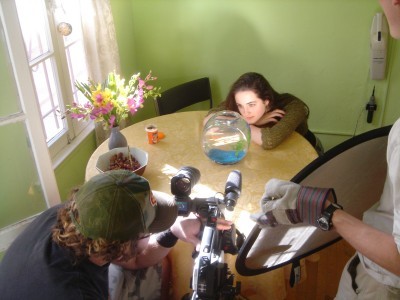 Judy Butterfield on the set "Lost Hollywood" --Directed by Jon Bernstein <http://www.judybutterfield.com/lost.php> Copyright © 2006 JudyButterfield.com
Judy Butterfield on the set "Lost Hollywood" --Directed by Jon Bernstein <http://www.judybutterfield.com/lost.php> Copyright © 2006 JudyButterfield.com
『キャバレー・ホットライン・オンライン・ニュース』という、カタカナにすると怪しげなサイトがこの昨年11月のニューヨーク公演の記事を残しています("JUDY BUTTERFIELD RETURNS TO THE ALGONQUIN WITH NEW SHOW" CABARET HOTLINE ONLINENEWS -NYC -)。11月5日の一日ポッキリいやコッキリだったようです。
ところで、このヴァース、なんか違ってますね。難聴気味のモーリちゃんの父の耳で2度聴いて書きとって検索してみると、それは、別の曲、"All the Things You Are" 「君は我がすべて」 (1939) のヴァースなのでした(君は我がすべてというより「(君が)君であるものすべて」なんでしょうけど)。――
Time and again I've longed for adventure 〔聞きなおしたらaffection に改変されてました〕,
Something to make my heart beat the faster.
What did I long for? I never really knew.
Finding your love I've found my adventure [affection],
Touching your hand, my heart beats the faster,
All that I want in all of this world is you.
You are the promised kiss of springtime
That makes the lonely winter seem long.
You are the breathless hush of evening
That trembles on the brink of a lovely song.
You are the angel glow that lights a star,
The dearest things 〔(that)―フランク・シナトラは(CA時間10.18追記) 〕I know are what you are.
Some day my happy arms will hold you,
And some day I'll know that moment divine,
When all the things you are, are mine!
若い人はやることが違いますね、つーか、この歌はガーシュウィンの歌じゃなくて、オスカー・ハマースタイン2世 (1895 - 1960) の詞です(曲はJerome Kern)。〔ついでながら、この詞を調べようとして検索していたら、「All The Things You Are~ブロードウェイの光と影~」<http://www014.upp.so-net.ne.jp/komati-nikki/all-the-things.html>というページに行きあたってしまいました。原詞がないのはいいとして、verse の部分もなくて上の後半のchorus [refrain]のところだけ扱っていました。まあ、そういうものでしょうが、このページは1997年ごろにつくられたようなのですが、「この訳詩の問題点」とか「読者のみなさんから寄せられた解釈」とかあって、ちょっとビビった、いや感動しました。ジャズ詩大全だけじゃないっすよね。HP はなんというのだろうと思ったら、畑中久美子さんというひとの『開けてびっくり Jazz 詩玉手箱』というのでした。ああビックリした。〕
リフレインの部分はこういう歌です。――
"All The Things You Are - Frank Sinatra" (3:02) posted by "umwelt1998" on February 23, 2008
折角ですので『徒然帖』も参照―― <http://d0v0b.info/kyoku/a/allthethings.html>
October 14 サンターナと悪魔の風 Santana and the Devil Wind [天気 weather]
October 14, 2008 (Tuesday)
以下、特に最後はだいたいは例によって半分思いつきで書いているので、ご注意を。
カリフォルニアは山火事のシーズンです。ナパで火事がと思っていたら、ニュースではロサンザルスの北で大規模な山火事があって、2人死亡(ひとりは煙のために運転を誤った車の衝突によるものらしい)、初期段階で消防が消火にあたったものの、鎮火できずに住宅地にまでひろがる危険があり、数千人(13日時点では1200人との報道)が避難しているようです。
13日現在2か所(いま最新のニュースを見ていたらSan Diego そばで3つ目のwildfire が月曜に起こっていただけでなく、下の火災情報ページによるとサンフランシスコ北のMarin County* も加えると5か所になっています)で発生し、例によって出火原因は不明(自然なものでしょう)だが、秋に吹く暖かい季節風サンターナによって山火事が広がったとテレビで報道していました。
最近の報道記事――
"Wind Gust Driving California Wildfires: Thousands of People Already Evacuated" <http://www.ktvu.com/weather/17709107/detail.html> 〔KTVU San Francisco: 2008.10.14〕
"Fire Information - National Fire News" <http://www.nifc.gov/fire_info/nfn.htm> 〔National Interagency Fire Center の情報ページ――次に引用する文章的な情報だけでなく、その下に数値的統計や "Current Wildland Fires" の詳細な情報を含んでいます〕:
October 14, 2008
The Santa Ana winds are challenging containment efforts in southern California. Currently, five large fires in California have burned 24,836 acres.
Weather: Santa Ana winds will continue this morning over southern California, but should diminish in the afternoon. NOrthern and central California will be warm and dry with light winds.
Source: National Interagency Coordination Center
*このマリン郡の火事というのは、エンジェル島の火事のことでした。はるかさんのはるかのシスコらんらん日誌――「エンジェル島の火事」 <http://blogs.yahoo.co.jp/lvdesert2004/archive/2008/10/14> / "SF., Marine firefighters battling Angel Island Fire" <http://www.usatoday.com/weather/wildfires/2008-10-13-angel-island-san-francisco-wildfire_N.htm?csp=34>〔USA Today〕
地元の人のブログも参照――
「ロサンゼルス郊外で山火事」 <http://eigolish.seesaa.net/article/108053945.html> 〔英語生活 in LA: 2008.10.14〕
「山火事の季節が来てしまいました(>_<) in California」 <http://ameblo.jp/moimoi-girl/entry-10151363467.html> 〔moi:moi from the OC*Buyer's diary: 2008.10.14〕
「山火事(Wild Fire)セカンドラウンドスタート 間近でスタートしちゃったよ~!!!ひぇ~~~~」 <http://blog.goo.ne.jp/yuminchu93/e/eb42264f4f3c6f8529de9e690cd4a0a4> 〔YumiんちゅのハローFromアメ~リカ: 2008.10.14. 「山火事のシーズン始まっちゃったよ~ 」(10.9) の続報〕
サンターナについては上のおふたかたが言及していますが、Camp Pendletonにお住まいのYumiんちゅさん(無事を祈ります)の9日の記事を借りれば、「週末サンタ・アナ・ウインド(Santa Ana wind) と呼ばれる強風がスタートするようです。(9月から10月にかけて南カリフォルニアではサンタアナという内陸の砂漠から乾燥した熱風を海の方へ向かって吹いてくる現象をサンタ・アナ・ウインドと呼んでいます。)」ということで、先週末に風が起こって、2度目の山火事が拡大したのですね。そして、moi:moiさんはSanta Ana Wind が「初秋から初冬にかけて南カリフォルニア上空を吹く、熱くて乾燥した風」で、「今朝[・・・・・・]外を見ると、木が斜め30度の方向になびいて、枯葉が吹き荒れていました。そして凄い風音。外に停めていた車も、昨日洗車したばかりなのに埃と枯葉まみれになっていました。」と風の強さを書いておられる。「このSanta Ana Windは、山火事を起こす厄介者でもあります。/特に乾燥が酷かった去年は、ロサンゼルスからOC [Orange County]、サンディエゴまで、多くの山火事により多くの人が家を失いました。山から離れたこの近所でも、火事から2週間程は、空から雪のように灰が降っていたのです。/そして、今年も既に山火事の被害が起きています。ロサンゼルスの北に位地するAngeles National Forestでは、火事が5300エーカーにも広がり、2人の犠牲者が出てしまったとのこと。」
と呼ばれる強風がスタートするようです。(9月から10月にかけて南カリフォルニアではサンタアナという内陸の砂漠から乾燥した熱風を海の方へ向かって吹いてくる現象をサンタ・アナ・ウインドと呼んでいます。)」ということで、先週末に風が起こって、2度目の山火事が拡大したのですね。そして、moi:moiさんはSanta Ana Wind が「初秋から初冬にかけて南カリフォルニア上空を吹く、熱くて乾燥した風」で、「今朝[・・・・・・]外を見ると、木が斜め30度の方向になびいて、枯葉が吹き荒れていました。そして凄い風音。外に停めていた車も、昨日洗車したばかりなのに埃と枯葉まみれになっていました。」と風の強さを書いておられる。「このSanta Ana Windは、山火事を起こす厄介者でもあります。/特に乾燥が酷かった去年は、ロサンゼルスからOC [Orange County]、サンディエゴまで、多くの山火事により多くの人が家を失いました。山から離れたこの近所でも、火事から2週間程は、空から雪のように灰が降っていたのです。/そして、今年も既に山火事の被害が起きています。ロサンゼルスの北に位地するAngeles National Forestでは、火事が5300エーカーにも広がり、2人の犠牲者が出てしまったとのこと。」
Santa Ana winds はまた Santana winds という呼び名でも知られています。南カリフォルニアと、メキシコ北部のBaja California に吹く乾燥した風で、源によって風の温度は高冷あるようなのですが、秋に暑い乾燥した天気をもたらす風として一般にとらえられている。地中海のミストラルとか日本のオロシとかと同じ katabatic windです。風は山からおりてくる、うちは比叡下おろしですねん。
from "Santa Ana winds" Wikipedia <https://secure.wikimedia.org/wikipedia/en/wiki/Santa_Ana_wind>
英語版Wikipedia の "Santa Ana wind" <https://secure.wikimedia.org/wikipedia/en/wiki/Santa_Ana_wind>には語源について次のような記述があります。――
According to the Los Angeles Almanac: "The original spelling of the name of the winds is unclear, not to mention the origin. The name Santana Winds is said to be traced to Spanish California, when the winds were called devil winds due to their heat. Santa Ana winds may get their name from the Santa Ana Mountains in Orange County, the Santa Ana River or Santa Ana Canyon, along which the winds are particularly strong. The original form may have been Santana winds, from the Spanish vientos de Satán ("winds of Satan". Sanatanas is a rarer form of Satanás). This, in turn, is a translation of a native name in an unspecified language.
A recent popular guide book Los Angeles A to Z (by Leonard & Dale Pitt), credits the Santa Ana Canyon in Orange County as the origin of the name Santa Ana Winds. This might be supported by early accounts which attributed the Santa Ana River bed running through the canyon as the source of the winds. However, since the phenomenon occurs throughout Southern California and not just Orange County, this explanation is likely only a recent one.
One account places the origin of the term Santa Ana winds with an Associated Press correspondent stationed in Santa Ana who mistakenly began using Santa Ana winds instead of Santana winds in a 1901 dispatch.
『ロサンゼルス・オールマナック』によるともともとの綴りは不明で、起源も不明。"Santana Winds" という名前は、熱風が「悪魔の風」と呼ばれるバハ・カリフォルニアに由来すると言われる。"Santa Ana winds"という呼び名はオレンジ郡のSanta Ana Mountain、Santa Ana River、Santa Ana Canyon に由来するのかもしれない。本来は"Santana winds" で、それはスペイン語の "vientos de Satán (つまり「悪魔の風」――Sanatanas はSatanás の稀な語形)から来ている。・・・・・・最近の『ロサンゼルス A to Z』はSanta Ana Canyon が語源としている。・・・・・・しかしオレンジ郡だけでなく南カリフォルニア一帯に起こる現象なので、この説明は近年のものにすぎないかもしれない。ある説明では、Santa Ana という綴りは、1901年に通信韻がSantana を誤記したことに始まる。
ここでブレークに一曲。デビー・ブーンで、「カリフォルニア」(1978) をお聞きください(なお、映像と曲の関係は不明です)――
"Debby Boone - California" (3:27) posted by "crayoloco" on September 29, 2007
The Sierra Mountains rise up
As you float down into L.A.
The Pacific roars hello
It's another surfing day
Everyone out here is pretty
Someone's bound to steal your heart away
And you'll find you want to stay
In California where the sun is warm
Where the winds called Santa Ana
Make you feel like you belong
California wherever you may roam
California keep calling you home
All the boulevards and backroads
And the bright lights of Hollywood
And the laidback way of living
Make you feel all kinds of good
I could meet you at sunrise
We could swim in the ocean blue
And I might say to you
Hey, it's true, I love you
So, come on to California....
(よく聞き取れませんでした、いちおうサイトはあるのだけれどなんかちがう <http://www.top40db.net/Lyrics/?SongID=78267&By=Year&Match=>)
デビー・ブーンの歌では、ロサンゼルスが名指されるものの、カリフォルニアに吹く風として、"the winds called Santa Ana" が言及され、それがカリフォルニアという土地への帰属感というとおおげさですが、土地の特徴、ここがカリフォルニアなんだと感じさせる風土的特徴、として歌われています(California と called Santa Ana の語呂あわせという側面もありますけれど)。そして、そのとき悪魔の風というような含みはまったくないですね。
////////////////2012.2.27//////////
//////////////////////2012.2.27////
さて、Santa Ana という名前の意味はなにか、というと、ふつうには聖Ana、すなわちイエス・キリストの母親のマリアの母親です。・・・・・・
歌を聴いて改行を考えていたら頭が痛くなり、サンタナと悪魔の思いつきの話まで達しませんでした。ニュース報道ともともとそぐわないかもしれず、また出直してきます。カリフォルニアの山火事というのは日本にいたときにも毎年のようにニュースで聞いていましたが、じっさいヒトゴトではなく、被害の小さいことを願っています。
いちおう つづき![]()
October 14 サンターナと悪魔の神 Santana, the Devil and God [断章 fragments]
October 14, 2008 (Tuesday)
承前。南カリフォルニアで吹く悪魔の風(というのはメキシコでの呼ばれ方による)サンターナのつづきですが、なんだか思いつきの気分が萎えてしまっています(思いつきというのはそういうものなのでしょうが)。
Santa Ana はふつうは聖 Anaと前の記事の最後で書きました。英語だと Saint Anne あるいはSaint Ann また Saint Anna とも。この人はイエスの母のVirgin Mary の母親ですが、Mary を処女懐胎したという伝承も生まれたりして神格化(というと異端的ですけど聖人化)された――紀元2世紀と推定される聖書外典(アポクリファ)の「ヤコブによる原福音」(Gospelof James=Infancy Gospel of James=Protoevangelium of James) ――なんでJacobがJames やねん、という問題は今回扱わない――は、マリアの処女懐胎を言うと同時にハンナ(アンナ)(ヘブライだとHannahさん)の処女懐胎も語る。だから天使がやってきて懐妊を知らせる「受胎告知 Annunciation」という有名なキリスト教美術のモティーフもマリアのイエス懐胎だけじゃなくてアンナのマリア懐胎でも描かれます――
Gaudenzio Ferrari (1475-1546), The Annunciation to Joachim and Anna (c.1545); detached fresco transferred to canvas, Pnacoteca di Brera, Milan; from "Saint Anne," Wikipedia <https://secure.wikimedia.org/wikipedia/en/wiki/Saint_Anna>
(竹下節子『聖母マリア――〈異端〉から〈女王〉へ』〈講談社, 1998)のブログ『First Light』の紹介記事 「竹下節子『聖母マリア <異端>から<女王>へ』」(Dilectio proximi, 2007.10.1) も参照) 。
処女懐胎の連鎖もハンナ(アンナ)でとまっているようで、マリアがその後キリスト教の父性原理を、「聖霊」とたぶん手をたずさえて補完しつつ神格化されていくのに対して、ハンナは聖人の先頭に位置するようになります(ローマ教会はSt. Anne の処女懐胎を1677年に否定)。
えはがき「聖アンナさま、あなたが処女マリアをお守りくださったように私たちをお守りくださいますよう」
日本語のウィキペディアでは「アンナ(マリアの母)」という項目が立っている。その記事の言葉を借りれば、――
スペイン語では「聖アンナ」はサンタアナ・転じてサンタナとなる。エルサルバドルのサンタアナなどがこの聖人にちなんで名づけられている。
さて、ここで、確認しておくと、南カリフォルニアに吹く風として有名なSanta Ana は、由来が不明確なものの、第一に、スペイン語起源ではないかと考えられている、第二に、Santana がもともとの綴りだったという説もある、第三に、英語のSatanに通じるスペイン語の崩れたかたちだとの説もある。
ま、わしにもわかりませんわ。
しかし、サンタナといえばロックである。・・・・・・という思いつきでもともと書こうとしておったわけですが、間をあけたら「アブラクサスの祭」という小説を書いた玄有宗久という坊さんだのについても調べる羽目になり、ほとほと困りました。ヘルマン・ヘッセとカルロス・サンタナどまりにしたかったのですけれど。
ということで、以下簡略化したメモです。
第一。ロックバンドのサンタナは、リーダーのメキシコ出身のカルロス・サンタナ Carlos Santana (1947 - )の姓だということになっている。 1966 年サンフランシスコで結成。ファーストアルバムSantana (1969)、セカンドアルバムAbraxas (1970)。
第二。日本版が『アブラクサス――天の守護神』と訳されているセカンドアルバムのタイトルは、ヘルマン・ヘッセの『デミアン』から取られている(ジャケットに引用がある)。――"We stood before it and began to freeze inside from the exertion. We questioned the painting, berated it, made love to it, prayed to it: We called it mother, called it whore and slut, called it our beloved, called it Abraxas..." <https://secure.wikimedia.org/wikipedia/en/wiki/Abraxas_(album)>; Cf. 「ONLY BEST ONE~PART2~ ABRAXAS by SANTANAロック&サルサ&ブルース&ジャズの融合これぞ珠玉の1枚・・・」 <http://www.you-next.jp/2008/02/post-76.php>
第三。 アブラクサスは古い石にAbrasax とかAbracax とかAbraxas のかたちで刻まれた謎めいた言葉だったが、いっぽうグノーシス派の文献にも名が出てくる存在で、悪魔と神の両方を内包したエジプトの神だとも考えられている。図像は頭がトリ、下半身がヘビもしくは竜で描かれている。参照 "Abraxas" Wikipedia <https://secure.wikimedia.org/wikipedia/en/wiki/Abraxas>
第四。「不条理ゆえに我信ず」で有名なテルトリアヌスはアブラクサスについて書き記している。―― "He [Basilides] affirms that there is a supreme Deity, by name Abraxas, by whom was created Mind, which in Greek he calls Nous; that thence sprang the Word; that of Him issued Providence, Virtue, and Wisdom; that out of these subsequently were made Principalities, powers, and Angels; that there ensued infinite issues and processions of angels; that by these angels 365 heavens were formed, and the world, in honor of Abraxas, whose name, if computed, has in itself this number. Now, among the last of the angels, those who made this world, he places the God of the Jews latest, that is, the God of the Law and of the Prophets, whom he denies to be a God, but affirms to be an angel."
第五。20世紀においては、まずユングがグノーシス研究でとりあげたことが知られる――"Abraxas speaketh that hallowed and accursed word which is life and death at the same time. Abraxas begetteth truth and lying, good and evil, light and darkness in the same word and in the same act. Wherefore is Abraxas terrible." (The Seven Sermons of the Dead [1907])
第六。『デミアン』だけでなく『荒野の狼』でもアブラクサスに言及するヘッセはユングと交流があった。Cf. 掲示板「ヘルマン・ヘッセとユング」 <http://nataraja.egoism.jp/cgi-bin/bbs_theta/patio.cgi?mode=view&no=53> ; 「本の概要と感想など: ヘルマン・ヘッセファン倶楽部」 <http://hermannhesseclub.net/kanso.html>; 「たそがれblog | アブラクサス」 <http://obaco.arrow.jp/log/eid1302.html>; 「Another Road | ON THE ROAD」<http://takao.cocolog-nifty.com/room/2007/12/on_the_road_4f1d.html>
第七。とくにサンタナ以降、いろいろなジャンルでアブラクサスの名は出るようになったらしい。eg. オトフリート・プロイスラー『小さい魔女』(つなさんのブログ記事「魔女!/「小さい魔女|旧・日常&読んだ本log」; 楽天市場小さい魔女〔Kodansha English library〕:楽天ブックス); 玄有宗久 『アブラクサスの祭』(図書館-J「『アブラクサスの祭』/玄有宗久」; 「本の紹介6」 : 「おまえはそのままで正しい。神でも悪魔でもあるアブラクサスの啓示が聞こえた。精神を病みロックに没入する僧浄念が祝祭の頂点で見た輝く世界。禅僧作家の衝撃作。」; Ayuo.net 「何故1960年代のドラッグが無意味になったか。」; 鎌田東二と作者の対談「日本人の宗教観----中外日報社」<http://www.chugainippoh.co.jp/NEWWEB/n-taidan/nihonjin/nihon03/nihon03.html>; ハリーポッターのDraco Malfoy のじいさん。
と、ここまでを前提として、思いついたこと。Santana は確かにリーダーのファミリーネームだけれど、Abraxas と似て、聖性と悪性が混交した名前でもあり、そのへんカルロスのおっちゃんはわかっていて自我の刻印というだけじゃなかったんじゃなかろうか(実は周知のことだったりして)。いや、1966年にthe Santana Blues Band として結成されたというのは知ってますから突っ込まんでください。
では曲をどうぞ(画像との関係は不明です。Charmed だからかしら。チャームドの第1シーズンに実はアブラクサスというdemonが出てくるんすけど)――
" Alyssa Milano: Santana: "Black Magic Woman" " (5:17) posted by WishSongs on September 24, 2006
///////////////////2012.2.27///////////
///////////////////2012.2.27///////////
-------------------------------------------------------------
Dilection proximi、「竹下節子『聖母マリア〈異端〉から〈女王〉へ』」 <http://borges.blog118.fc2.com/blog-entry-89.html> 〔Firsty Light: まだ22歳の才媛のブログ〕
いろいろと変わった事典類に遭遇したので( ..)φメモメモ――
『魔術英和辞典 English-Japanese Magical Dictionary』 <http://www7.ocn.ne.jp/~elfindog/eiwa.htm> 〔「魔法引用詩句解題」、Magical Mother Goose Nursery Rhymeの付録付き〕
Abraxas (グノーシス) アブラクサス。紀元2世紀アレクサンドリアのグノーシス派バジリデス教徒が崇めた至高神。Abraxas という文字のギリシャ語合計数値が365となるため、アブラクサスの下には一年の365日を司る従神格が365柱存在するとされた。上半身は王者、下半身は蛇の姿で表される。
『悪魔辞典』 <http://www2.wbs.ne.jp/~god/akumajiten.htm> 〔未完 「エリゴル」(なんやそれ)まで〕
アブラクサス【Abraxas】
デーモンじみた生物。頭は雄鶏、下半身は蛇、手には鞭と盾を持った姿でよく描かれ る。別称アブラカクスともよばれ、グノーシス主義におけるこの言葉はおそらく本来はバシレイデス派が至高の存在として表したのであったが、それがデーモン として降格されることとなり、しばしば魔除けの目的で宝石や石に刻みこまれた。しかし、このデーモン神が描かれていなくても魔除けがアブラクサスの石と呼 ばれることもある。
『神魔精妖名辞典』 <http://dug.main.jp/sinma/> 〔アイヌの「アプトルヤムペウェンユク」と「油澄まし」のあいだが「アブラクサス」〕
アブラクサス ユダヤの魔神で、「永却の貴公子」と呼ばれる。「アブラクシス(Abraxis)」、「アブラサクス (Abrasax)」などの名でも呼ばれる。また正式にはギリシア語で「αβραξασ」と綴る。雄鶏の頭に2匹の蛇を足とした姿をしている。右手には盾 を、左手には鞭を持っていて、この世の生き物と神との仲を調停する役目があるとされる。「アブラカダブラ(abracadabra)」という呪文はこの魔 神から来ているとされる。ヨーロッパ全般 > グリモアなど 文献:03
『魔術用語集』 <http://www.hi-ho.ne.jp/cgi-bin/user/yjpt/yogo.cgi> 〔魔術の部屋☆SPW <http://www.hi-ho.ne.jp/yjpt/Wizardry/home.htm> の中〕
アブラクサス ★
ABRASAX 〔ママ〕
紀元2世紀アレクサンドリアのグノーシス派、「バジリデス教徒」が崇めた至高神。
「Abraxas」 という文字のギリシャ語合計数値が365となるため、「精霊たちの王」とされ、「アブラクサス」の下には一年の365日を司る従神格が「365柱」存在するとされた。
王冠をかぶり馬車に乗って、頭が雄鶏で下半身が竜という姿で描かれた。
また「魔除け」としてこの名前を刻み込むことがある。
October 5 グレゴリー・ペックとモービー・ディックまたの名クジラ Gregory Peck and Moby-Dick; or, The Whale [ニュースから]
October 05, 2008 (Sunday)
この日、6時から10時まで4時間にわたって、映画 Moby Dick (見たらハイフン入ってなかった) を16チャンネルKKPXで放送していた。気づいたのは6時前だったのだが、日曜の夜は日本のテレビドラマを放送するだけでなく、デスパレットな妻たちの新しいシリーズも始まったので、DVD で他の番組を録画する余裕はまったくないので、最初のほうをしばらく見てから残り30分くらいは録画したのをあとから見た(どういう見方だよ)。
いま日本語のウィキペディアの「白鯨」を見たら、偏っているだけでなく誤っている記述があるように見受けられたが、ともかくそこにはこの1998年のテレビ映画への言及はない。英語版Wikipedia "Moby-Dick" (ちゃんとハイフン入っていた)にはあります (IMDb linkもあり)。Internet Movie Database の記述はくわしいけれど、ニューヨーク在住のSeimori さんの『アメリカ TV/映画ノーツ』の「Moby Dick-モビー・ディック(白鯨)-」という記事が、制作の事情と内容と感想をうまくまとめていてなるほどと思いました。1956年の有名なジョン・ヒューストン監督の映画『白鯨』でAhab 船長を演じたグレゴリー・ペックが、ナンタケットの教会で説教をするMapple神父役(1956年にはオーソン・ウェルズの役)で出演していてビックリした。いや、この映画でゴールデン・グローブ賞を受賞したグレゴリー・ペックの授賞式の様子を翌年に衛星放送で見たような記憶はなくもないが、顔が平たくて、特殊メークでもしてるのかと思ってビックリした。しかし、もともと square-jawed な(日本だと高橋幸治みたいな感じ)顔で、かつうちの小さなテレビ(画面の大きさはパソコンと同じ)で見たのでそういう印象になったのかもしれない。グレゴリー・ペックはカリフォルニア州San Diego のLa Jolla ラホイアという海辺の生まれで、2003年6月12日にTorrance の病院で87歳の生涯をとじ、ロサンゼルスに埋葬されているのですね。obituary の1998年から2000年くらいの写真を見ると、マップル神父の顔になっているような気もします。
たぶん大画面で見ると印象は違うと思うのですが、クイークェグの顔もなんかオダギリジョーが文身(いれずみ)を入れたみたいな違和感がありました(たぶんテレビのせい)。最後の追跡のシーンもなんかこじんまりしていて、いったいモービー・ディックをどれくらいの大きさに想定して撮影したのだろう? と思ったりもしました(たぶんテレビのせい)。海の中でエイハブとモービー・ディックが(そしてイシュメールとクイークェグが) eye contact を最期にとるところはおもしろかったのですけど、ピークォド号に火事が起こる必要はなかったろうし、渦巻いてなかったし(たぶんテレビのせい・・・・・・じゃない)。
日本語版のウィキペディアではグレゴリー・ペックの1956年の映画への屈折した思いがあれこれ書かれているけれど、なるほど1996年に一度引退して1998年に(たぶんこの映画で?)カムバックしたということと関係があるのかな、と勝手に推測したりもする。・・・・・・
☆☆☆
それから何日かして、マサチューセッツ州Gloucester グロスターで同じ10月5日にシロナガスクジラが目撃されたというニュースを知った(Weekly Sports J No. 641)。グロスターはボストンの北のCape Ann アン岬にある町で、1623年に英国植民地がつくられ、その後漁業の中心地として発展した町です(でも『あしながおじさん』にも出てきた記憶がある)。シロナガスクジラはいわゆる絶滅危惧種で、世界で1万頭以下と推定されています。現在の通常の生息域はノルウェー、アイスランド、カナダ北部とされていて、「ニューイングランドの沖合いで目撃されるのは1981年以来のことだという」そうです(というのがモーリちゃんの父が新聞で目にしたニュースだったのですが、下のWEB記事をよく読むと、アン岬の沖合い近くで目撃されるのがたいへん珍しい、ということのようで、ニューイングランドと広げると2002年に5頭、その後も何度か目撃されているようで去年もMaine とNew Hampshireに現われています。やっぱスポーツ新聞は安易に信用しちゃあかんのでしょうか(実は「グルーセスター」とか書いてるし)。
Annelise Eaton, "Blue whale makes rare appearance off Cape Ann - Manchester, MA -" Wicked Local Manchester: 2008.10.7 〔写真付き〕:
Researchers were excited, thrilled and surprised to see a rare blue whale during their research on Sunday, Oct. 5, according to Mason Weinrich, executive director of The Whale Center of New England.
The group was aboard The Mysticete, a 42-foot research vessel based out of Gloucester, when they spotted the whale.
“At that time we were working with a number of humpback whales in the area and we were researching humpback whales and right whales,” Weinrich said.
Researchers observed the blue whale, which was located 15 miles off of the Gloucester coast near a group of humpback whales, for about 45 minutes. [. . .以下略]
the Whale Center of New England (HP: http://www.whalecenter.org/) の研究者が発見したということですが、このセンターはグロスターにあるので、すぐ近くに出没したことでたいへん興奮していたようです。
それでも、この "Wicked Local Manchester" という怪しげな名前のサイトだけでなく、The Boston Globe などもニュースとして報道したのは事実です。"Blue whale makes waves: Rare sighting off Gloucester coast" (2008.10.7) 〔写真付き〕――
Researchers spotted a rare adult blue whale this weekend that appeared to be feeding 15 miles off the coast of Gloucester.
The whale appeared to be about 70 to 80 feet long as it dove repeatedly to eat what biologists assumed were a dense swarm of krill, a small shrimp-like crustacean. Blue whales typically live in colder waters off Canada, Norway, and Iceland and rarely come so close to shore.
"I've been working on the water here 30 years and I've only seen blue whales 10 times," said Mason Weinrich, executive director and chief scientist at The Whale Center of New England. "When we realized it was a blue whale, it was quite exciting." [. . .以下略]
モービーディックはマッコウクジラでしたが、抹香鯨が sperm whale という怪しげな(つうかsperm に似て白濁した鯨蝋(spermaceti) がデカ頭に詰まっているからなのだけれど) 名前なのに対して、地球で一番巨大な動物といわれる白長須鯨は英語だと blue whale というふつうの名前なんですよね。なんか野球チームにはありそうですけど。下の記事のコメントで "these beautiful gentle creatures" と書いている人がいますけど、シロナガスクジラはプランクトンや小魚が主食のヒゲクジラ類で、マッコウはハクジラ類。やっぱ最大の肉食動物というイメジはマッコウかしら。
---------------------------------------------------------------------
参考url――
Whale Center of New England <http://www.whalecenter.org/>
"Gregory Peck" IMDb <http://www.imdb.com/name/nm0000060/>
Gregory Peck Dead At 87, Movie Star Won Oscar For Role In 'To Kill a Mockingbird'" CBS News: 2003.6.12 <http://www.cbsnews.com/stories/2003/06/12/entertainment/main558384.shtml>
"Oscar-winner Gregory Peck dies at age 87 USATODAY: 2003.6.12 <http://www.usatoday.com/life/2003-06-12-peck-obit_x.htm>
"Goodbye: Oscar winner Gregory Peck dies. The ''To Kill a Mockingbird'' star was 87"EW.com: 2003.6.12 <http://www.ew.com/ew/article/0,,458443,00.html>
「自棄自棄爺さん掘ったれば」 唐沢俊一ホームページ::日記::2003年::06月::13日(金曜日) <http://www.tobunken.com/diary/diary20030613000000.html>
"Youghal was chosen as one of the filming locations for the 1954 movie of Moby Dick, starring Gregory Peck. This is a view of Moby Dick's Pub with Barbara and Margaret gracing the exterior." Picasa Web Albums - ZorroJD <http://picasaweb.google.com/zorrojd/VisitToIreland#5152476280836807362> 〔1956年の映画のロケ地だったYoughal の白鯨関係の名所写真――1954年というのは、撮影の行なわれた年のようです。 "1954 Location of Film Moby Dick Starring Gregory Peck" というプレートの写真が入っています〕
"Interview: Ray Bradbury on Adapting Melville's Allegorical Sea Monster, 'Moby Dick'" <http://cinefantastiqueonline.com/2008/03/02/interview-ray-bradbury-on-adapting-melvilles-allegorical-sea-monster-moby-dick/> 〔1956年の映画で脚本を担当した作家レイ・ブラッドベリーのインタヴュー記事〕
"Moby-Dick" Wikipedia <https://secure.wikimedia.org/wikipedia/en/wiki/Moby_Dick> 〔e-text など便利なリンクがついている〕
October 15 Magnitude Estimate――日々の算数の勉強 (4) Daily Math Practice (4) [小学校と銀行]
October 15, 2008 (Wednesday)
以下は数学と英語と両方好きでかつヒマという方以外は読まないほうがよいような内容です。
その3は執筆中(笑)。
magnitude estimate
estimate は概算、推定(値)、見積もりである。それは概ね推定しなくてもわかる。An estimate is an answer that should be close to an exact answer. しかーし――いきなり magnitude estimate で以下を出せ、とか言われてもわかりませんがな。
【問題―◆For each problem, make a magnitude estimate. ◆Circle the appropriate box. Do not solve the problem. ◆Then choose 3 problems to solve. Show your work on the grid. (それぞれの問いに magnitude estimate を行なえ。適切なボックスを丸で囲め。問題は解いてはいけない。以下略)とあって、1. 8 * 19 2. 155 *6 3. 37 *58 4. 5 * 4.2 5. 9.3 * 2.8 と5問並んでいてそれぞれの下に 10s, 100s, 1,000s, 10,000s のボックスが書かれています(* は× です。印刷やWEBでは* が主流みたい)。――実物を見たいという奇特な方がいらっしゃるなら、くそ重いpdf.ですが、以下がWEBにあります―Unit2_000.pdf のStudy Link 2-8】
しょうがなく教科書を勉強すると概算の方法としていくつかあがっていた。
a) leading-digit estimation: A way to estimate in which the left-most, nonzero digit in a number is not changed, but all other digits are replaced by zeros. For example, to estimate 432 + 76, use the leading-digit estimates 400 and 70: 400 + 70 = 470. 訳すのがめんどくさいくらいの英語なのでお訳御免ですが、これは切り捨てですね。それも第何位をとか選択肢はなく、最初の桁だけ残してすっぱり落とす。
b) rounding: To round is to adjust a number to make it easier to work with or to make it better reflect the level of precision of the data. Often numbers are rounded to the nearest mulitiple of 10, 100, 1000, and so on. For example, 12964 rounded to the nearest thousand is 13,000. これは日本語で俗にいう(ほんとに言うのだろうか)「まるめる」という動詞ですな。やっていることは四捨五入のようですが。そしてこの場合はどのクライでround するかが指定されることになります。以下に例をあげます。なんでこんなまだるっこしいステップを踏まねばならんのでしょう。3番目の例が等距離で中間の5ですけど、五入ですね(赤字部分に該当)。
b1. Round 4,538 to the nearest hundred → 4,500 [Step 1: Find the digit in the place you are rounding to → 4,538. Step2: Rewrite the number, replacing all digits to the right of this digit with zeros. (This is the lower number) → 4,500. Step3: Add 1 to the digit in the place you are rounding to. If the sum is 10, write 0 and add 1 to the digit to its left. (This is the higher number) → 4,600. Step 4: Is the number you are rounding closer to the lower number or to the higher number? → lower number. Step 5: Round to the closer of the two numbers. If it is halfway between the lower and the higher number, round to the higher number. → 4,500]
b2. Round 3.573 to the nearest tenth [tenth は10分の1 だから小数第1位] → 3.600 = 3.6 [Step 1: 3.573. Step 2: 3.500. Step 3: 3.600. Step 4: higher number. Step 5: 3.600 = 3.6]
b3. Round 5,295 to the nearest ten → 5,300 [Step 1: 5,295. Step 2: 5,290. Step 3: 5,300. Step 4: halfway between. Step 5: 5,300]
c) interval estimate: An estimate that places an unknown quantity in a range. For example, an interval estimate of a person's weight might be "between 100 and 110 pounds." これはただ推定しているだけじゃないのかと思うのですが、推定範囲を限定するということに意味があるのでしょうね。なんか論理的にはカテゴリーが違う気がする(気のせいかも)。これは英和辞典にも珍しく載っており、《統計》区間推定 ⇒interval estimation による推定値、とか書いてあります。interval estimation を見ると同じく「区間推定」と書いてあるのですけど(笑)。ま、estimation という行為の結果がestimate という関係ですか。
d) magnitude estimate: これが問題の推定です。本文での説明――"One kind of rough estimate is called a magnitude estimate. When making a magnitude estimate, ask yourself: 'Is the answer in the tens? In the hundreds? In the thousands?' and so on. You can use magnitude estimate to check answer or to judge whether information you read or hear makes sense" (Everyday Mathematics 250). 答えが何十か何百か何千になるかを考えて、実際の答えがあっているか、あるいは目の前の情報がまちがってないかを判断するのに使うと。グロサリーでの説明―― A rough estimate. A magnitude estimate tells whether an answer should be in the tens, hundreds, thousands, ten-thousands, and so on. グロサリーでは1万まで増えてるだけやん。わからんのは、どのようにやるか、です。
次のouronlineschools.org のページは、説明は同じだけれど、具体的なプロセスの記述がありました。――
- A Magnitude Estimate is a very rough estimate that answers the question:
Is
the solution [solution = answer] in 1s? 10s? 1,000s ? 10,000s?
- How to make a magnitude estimate:
1. Round the numbers to the nearest 1, or 10, or 100, etc.
2. Make the calculation.
3.
Determine if the solution is in 1s, 10s, 100, 1,000s, etc.
- For example:
Make a magnitude estimate for 356 * 17:
1. Round the 356 to the nearest 100: 400.
2. Round the 17 to the nearest 10: 20.
3. Multiply the estimates: 400 * 20 = 8,000
4. The solution of 356 * 17 is in the 1,000s.
5. To check, the actual solution is: 6,052
- Another example:
Make a magnitude estimate for 24.8 * .7:
1. Round the 24.8 to the nearest 10: 25
2. Round the .7 to the nearest 1: 1
3. Multiply the estimates: 25 * 1 = 25
4. The solution of 24.8 * .7 is in the 10s.
5. To check, the actual solution is: 17.36
例1では、356 × 17 を、356をnearest 100の400に、17 をnearest 10 の20にして、400 × 20 =8,000、答えは数千だなーとestimateするわけです。例2 では24.8 × 0.7。それが25 × 1 になって答えは数十だなあと。そして上の "How To" のところにあるように "round" してますね。
しかし、わけがわからんのは、なるほど小数だから24.8 を25 に、0.7 を1にするのは有意味に見えるけれど、じゃあ整数だったらどうなるねん、という疑問がフツフツと沸いてくるわけです。たとえば17.3 × 0.7 だったら17 × 1にするのか、それとも20 x 1 にするのか? "Round the numbers to the nearest 1, or 10, or 100, etc."というのはどの位を四捨五入するのか指定がないわけです。あるいは 24.8 × 27.8 だったら25 × 28にするのでしょうか? 25 × 30 にするのでしょうか? 20 × 30 にするのでしょうか? 宿題でいうと1番の8 × 19 は8 × 20 でよいのか、それとも10 × 20なのか? 2番の 155 × 6 は、160 × 6 なのか、 200 × 6 なのか、200 × 10 なのか? ネライがアバウトに桁を知るということなのだからなるたけ簡単な計算がいいはずですが、160 × 6 以外は 1000s になってしまうのだけれど・・・・・・。
で、さらにあれこれ調べ、教科書もさらに読んだのですが、どうやらmultitude estimate というのは、estimation について総括的に学ぶ前から、計算に先立つものとして推奨されているものだということがわかりました。
さらにいくつか例を並べます。――
(1) 15.2 * 3.6 = ? → Round 15.2 to 20 and 3.6 to 4. Since 20 * 4 = 80, the product will be in the tens. (In the tens means between 10 and 100.)
(2) 3.27*0.8 = ? → Round 3.27 to 3 and 0.8 to 1. Since 3 * 1 = 3, the product will be in the ones. (In the ones means between 1 and 10.)
(3) 34.5 * 2.05 = ? → Make a magnitude estimate. 34.5 * 2.05 ≒ 35 * 2 =70. The product will be in the tens. 〔≒は丸い二重波線が使われています〕
(4) 73.4 * 10.5 = ? → Make a magnitude estimate. "A good magnitude estimate is 73.4 * 10.5 ≒73 * 10 = 730. The product, 770.70, is close to the estimate of 730."
(5) 97.24 / 26 = ? → Make a magnitude estimate. Since 26 is close to 25 and 97.24 is close to 100, the answer is 97.24 / 26 will be close to the answer to 100 / 25. Since 100 / 25 = 4, the answer to 97.24 / 26 should be in the ones.
(4) の例では"good" magnitude estimate として質的な差がmagnitude estimates にあることが示唆されています。つまりアバウトにふつうに考えれば70 × 10 で700でしょう。そしてそれはハズレてはいないし、元来の目的とされるどのクライに位置するか、何桁くらいになるか、というのではオッケーなはずなのに。そして、(5) は割り算の例ですけれど、26.2 とか25.5 とか小数以下があるわけではないのに26を30ではなく25に "round" し、magnitude estimate をしている。これはルール破りじゃないんすか? (あ、いま入ったクラスメートからの情報によると、なんか2. 155 * 6 の 6は10にするというふうに教室では言われたという・・・・・・そのときに155はそのまま残すというのなら合理性はありますけど。)
しかし、どうやらルールがないのがmagnitude estimate なのかもしれない、と思い到りました。計算ラクならいいんじゃないの、みたいな。でもこの時点(実際の計算前)で頭使いすぎるるのはよくないけど。まあ、確かに本来適当にこんなもんだろうと目安がつけばいいのだろうから、ラクが一番だと思うのですが、ラクにもいろいろあるのが数の結びつきの世界であり、つい頭を使ってしまうのが人間の欲望というものであり。あと、次のような注も見つかりました。――
Note: Sometimes a magnitude estimate is one the "borderline" and you need be more careful. For example, a magnitude estimate for 2,890 / 3.4 is 3,000 / 3 = 1,000. This answer is "in the thousands." But the exact answer may be "in the hundreds." You should place the de[c]imal point so that the answer is close to 1,000. Since 2,890 / 34 = 85, you should attach one zero, followed by a decimal point: 2,890 / 3.4 = 850. (p. 42)
誤植も見つけちゃったw
どうも日々のマスは、日常生活で使われる算数や幾何という姿勢が強く、estimation についてもそういうところから力を入れているような感じもします。あるいは統計を読むリタラシーみたいな視点。たとえば、つぎのような論文(計算機を使うのではなくて頭でestimate する技を教えるべしという)が20年も前に書かれていたりして――
James A. Levin, "Estimation techniques for arithmetic: Everyday math and mathematics instruction" Educational Studies in Mathematics 12.4 (1981): 421-34.
Abstract Recent advances in the way that adults perform computation in our society require reconsideration of the assumptions underlying current elementary mathematics instruction. The widespread use of calculators and computers for situations requiring precise calculation removes much of the motivation for teaching the current addition, subtraction, multiplication, and division algorithms. Yet precisely this use of computing technology now puts a premium on the exercise of estimation techniques for verifying the reasonableness of computations. These techniques, especially those that can be used
mentally
(without the use of any external tools), have been used informally for years, but never formalized for instruction. This paper discusses a range of estimation techniques, and presents in detail a series of mental estimation procedures based on the concepts of measurement and real numbers rather than on counting and integers. A set of techniques for teaching these procedures is described. These estimation techniques are evaluated against the multiple functions that elementary mathematics instruction needs to serve.
それにしても、もっとはっきり子供にも大人にもわかるように説明してもらいたいもんだわさ。ぷんぷん。

October 16 1906年のサンフランシスコ大地震 The San Francisco Earthquake of 1906――Magnitude Estimate (2) [San Francisco]
October 16, 2008 (Thursday)
昨日マスの勉強でmagnitude estimate について調べていて、つい見いってしまったのが、サンフランシスコ大地震の映像でございます。
調べたり見つけたりした順番に書くというのはブログ執筆者の悪癖だと自覚しているので、 たくさん見たなかから取捨選択して並べてみます(自分も大人になったものである)。映像を見る余裕のないかたもぜひ終わりの写真のリンクを見てくださればと思います。
Photograph by Arnold Genthe that shows Sacramento Street and approaching fire (from Steinbrugge Collection of the UC Berkeley Earthquake Engineering Research Center) via The Great 1906 San Francisco Earthquake <http://earthquake.usgs.gov/regional/nca/1906/18april/index.php>
最初は、1905年と翌年の1906年の地震後に同じ素人撮影者がたまたま同じマーケット大通りを撮影したフィルムを交互に編集した映像。両方とも路面電車に乗っているようなので、1906年のはだいぶ復興してからだと(モーリちゃんの父には)思われる。
" San Francisco 1905 - 1906 (short form) " (5:07) posted by " crashreboot" on January 14, 2007: "In 1905, an unknown cameraman filmed a streetcar trip along San Francisco's Market Street. The following year, the Great Earthquake struck, and he filmed the trip again. This is a five-minute silent film that edits together excerpts of his two films. Footage from the Prelinger Archives, edited by Matt Lake."
1906年4月18日早朝(5時12分から2分半)の地震で推定3000人が死亡、人口の半数を超える22万人が家を失います(三つ下に映っている新聞記事だと”300,000 Homeless” と見出しにあって、それだと3/4 が家を失なったことになる)。倒壊以上に火災による被害が、Harriet Levy が 920 O'Farrell Street で描いていたように、延焼を防ぐために家屋を壊さざるを得なかったということも含め、大きかった〔 「August 26 ハリエットとアリスとガートルード――昔のサンフランシスコのユダヤ人の少女時代 (3)、またはパリのアメリカ娘たち Harriet, Alice, and Gertrude: A Jewish Girlhood in Old San Francisco (3); or, American Girls in Paris」; "As we swung around Pine Street and down Jones, I called to the motorman to stop at O'Farrell. The car stopped and I descended upon a waste of land which reiterated the story of the unimpeded progress of the fire all the way up to Van Ness Avenue where dynamite had halted its advance."〕。
次の短いフィルムも地震後のマーケット・ストリートを中心に映していると思います。
"1906 San Francisco Earthquake" (1:40) posted by "emijrp" on December 3, 2006: "English: 1906 San Francisco Earthquake aftermath. No sound.
Spanish: Secuelas del terremoto de San Francisco de 1906. Sin sonido."
次のは1936年の映画『サンフランシスコ』(IMDb データ)のシーンです。
" "San Francisco" Earthquake " (2:54) posted by "Zacatown" on January 3, 2007: "The legendary 1906 earthquake sequence from "San Francisco"(directed by W.S. Van Dyke) starring star-crossed lovers Clark Gable and Jeanette MacDonald."
1950年代(1951年?)に作成されたニューズリール。過去の写真や新聞やフィルムをつなぎあわせています。――
" The 1906 San Francisco Earthquake " (3:03) posted by "KKD1247" on June 29, 2008: "Here's a portion of another old 1950s documentary - the story of the 1906 San Francisco earthquake. Photography was invented only a few decades before this & motion pictures were in their infancy as well. This story is told with those old movies & photos.
This was a major earthquake that struck San Francisco, CA and the coast of Northern California at 5:14 A.M. on Wednesday, April 18, 1906. The most widely accepted estimate for the magnitude of the earthquake is a moment magnitude (Mw) of 7.8; however, other values have been proposed from 7.7 to as high as 8.3. The main shock epicenter occurred offshore about 2 miles (3 km) from the city, near Mussel Rock. It ruptured along the San Andreas Fault both northward and southward for a total length of 296 miles (477 km). Shaking was felt from Oregon to Los Angeles, and inland as far as central Nevada. The earthquake and resulting fire is remembered as one of the worst natural disasters in the history of the United States. The death toll from the earthquake and resulting fire, estimated to be above 3,000, represents the greatest loss of life from a natural disaster in California's history. The economic impact has been compared with the more recent Hurricane Katrina disaster.
I found this 16mm documentary some years ago when I was driving through town. As I drove past the public library, I saw an incredible sight! Someone at the rear of the library was throwing out 16mm film cans hand over hand! They were converting over to videotape & for some reason - decided to just throw out the film. Needless to say - I stopped, opened my trunk, and got as many as I could!
This is one of those films."
Natalie Merchant の歌にあわせて多数の写真を編集したいまふうな映像――
" San Francisco Earthquake of 1906 " (2:30) posted by "cmbojim" on April 15, 2007: "San Andreas Fault
The California earthquake of April 18, 1906 ranks as one of the most significant earthquakes of all time. At almost precisely 5:12 a.m., local time, a foreshock occurred with sufficient force to be felt widely throughout the San Francisco Bay area. The great earthquake broke loose some 20 to 25 seconds later, with an epicenter near San Francisco. Violent shocks punctuated the strong shaking which lasted some 45 to 60 seconds. The earthquake was felt from southern Oregon to south of Los Angeles and inland as far as central Nevada.
Dead - More than 3,000
Homeless - 225,000
Buildings Destroyed - 28,000
Monetary Loss - More than $400 million"
description の多くが英語版Wikipedia その他のコピペであることにちょっとがっかりしたものの(いまさらです)、映像の力とか事実とはいったいなんなのか、とか考えながら見てました(いまさらです)。しかしWikipedia に載っている写真を拡大して眺めたときの感興はまた別のモノがありました(いまさらながらモービー・ディックと同じく映像画面の大きさのせいかもw)。ウィキ日本語版は、英語版と同じ参考書目(邦訳があるやつ)を挙げながらも独自の記事をめざしているようですが、現時点では書きかけ項目でリンクも不十分です。
"1906 San Francisco earthquake" - Wikipedia
英語版には木造平屋の仮設住宅の写真なども含めて10枚以上掲載されています。とくに、ミッション通りの火事の写真(Image:Sfearthquake3b high resolution あり)の右手手前から3軒目の家の屋根に男が立っているのとか、Ferry Builiding のほうから西へMarket Street を眺める俯瞰的な写真とか(Bird's-eye view, surrounding Ferry Building, looking west on Market Street. Photographed from tower)、高度2000フィートからのパノラマ写真(Panorama of San Francisco in ruins: Full resolution (7,000 × 2,748 pixels, file size: 4.32 MB, MIME type: image/jpeg))とか、圧倒されました。最後の写真は、最大にして見ると、手前の重たく黒い海が右手で光を受けて波紋をつくっているところがすごい(どういうところを見ているのでしょう)。
あ、magnitude estimate ですけれど、"The most widely accepted estimate for the magnitude of the earthquake is a moment magnitude (Mw) of 7.8; however, other values have been proposed from 7.7 to as high as 8.3. " ということです。
実は春以来地震が何度かあって、マグニチュードしか言わないので、実際どれくらい揺れたんだかわからなかったのですが、"moment magnitude" という概念は、ふつうに震度とマグニチュードというのとはまたちょっと違うものみたい――
モーメント・マグニチュード Mw
金森博雄(1977)は、地震を起こす断層運動のモーメント(Mo)を、従来のマグニチュードに関連づけ、これをモーメント・マグニチュードとした。
- Mw = (log Mo - 9.1 ) / 1.5
- ただし Mo = μ×D×S
Sは震源断層面積、Dは平均変位量、μは剛性率である。
モーメント・マグニチュードの最大値は、1960年のチリ地震で、Mw=9.5 であった。
- 断層面の面積(長さ*幅)と、変位の平均量、断層付近の地殻の剛性から算出する、まさに断層運動の規模そのものである。
- M8を超える巨大な地震では、地震の大きさの割りにマグニチュードが大きくならない「頭打ち」と呼ばれる現象が起こる。モーメント・マグニチュードは、これが起こりにくく、巨大地震の規模を物理的に評価するのに適しているとされる。 〔「マグニチュード」 - Wikipedia〕
Mw のw はどこから来てるのでしょうw work の w なのかな? (まったく略号というのはわからんぜ)。
October 17 開いた口 Opening Mouth [料理・食べ物 cooking foods]
October 17, 2008 (Friday)
春から細々といろいろな物を買いながら清貧な生活を送っているのですが、台所関係で不満な点は、容器の口の無神経さですね。
もともとはコーヒーをドリップでいれるときのヤカンの注ぎ口ののっぺらぼうさを問題にしたかったのですが、それはまたの機会に取っておいて(取っとかんでもええわい)、調味料関係で話をまとめてみます。
Lucky のブランドSunny Select シリーズ。左Vegetable Oil 64 Fl Oz (約1.89リットル)、右 Tomato Ketchup 20 OZ (567グラム)
トマトケチャップはどの店でも安いときに買えば1ドルかそれ未満で買えます。油は店によっていろいろで、Lucky は近所では安いと思う。で、最初は日本だと醤油と同じ大きさの丸い1リットルくらいのボトルを買っておったのですが、デカイと安いという法則に従って、この超一升ボトルのほうが安かったので、買ってみました。
実は油はこのとき初めて開けた。牛乳瓶のふたみたいな紙(ちょっとちがうけれど)を剥がすとパックリと口が。ケチャップのほうはひっくりかえして保存、キューっと思い切りよく噴射するすぐれものです(どこがじゃ w)。辞書を見ると注ぎ口は spouter とか書いてあったりしますが、spout って鯨が潮吹くみたいなイメジですよね。で、ケチャップのほうはそんな感じ。つーか潮吹くみたいな勢いでチューっとしないと、目標物の手前で垂れます。
疑問 なんでまんなかに注ぎ口を設定しているの? 油がドバッと出てたいへんなんすけど。手前側面方向に注ぐというのは腕力と握力が多大に必要とされます。ケチャップも的をはずすことがあるんすけど。
大きいプラボトルは、たとえばアメリカのキッコーマンなんかは、注ぐときに自然に下になるほうへ寄っています――
醤油ならビンに分けて使うということを前提にということも考えられますが、オイルを分けたりはふつうしないだろうし、別途注ぎ口を取り付けたりするんでしょうか、灯油用のみたいなのを。
ケチャップは、デルモンテのを買ってみたら、日本と同じというか、5ミリくらいの小さい穴が円の中心から爪でパコンと開く方向へちょうど半径の半分くらい外れて設置されていました(描写がむつかしいです。写真を撮るのがめんどくさいのです)。ただしその角度は微妙な方向(下の画像でいうと4時位の方向)ですが。
デルモンテはもともとビンで、今も売っているし、上と同じひっくりかえしタイプもありますけど。
"1954 Del Monte Catsup" AdClassix.com <http://www.adclassix.com/ads2/54delmontecatsup.htm>
Quick Squeeze Ketchup <http://www.delmonte.com/products/TomatoItem.asp?id=137>
Del Monte Ketchup brings delicious tomato flavor to your hamburgers, hot dogs, and fries.
- No mess! No waiting! Clean, fast squeeze
- 100% natural - no artificial flavors or preservatives
と書かれているのですが、サニーセレクトの同タイプではmess をだいぶしてしまいますた。
サラダドレッシングも大穴ドバドバタイプか、まんなか丸穴タイプが多いみたいに思います。
マスタードはいろいろな容器がありますけど、先が円錐状にとんがった二重構造のフタのは使いやすいかなあ。
マヨネーズはビンが多いですけど、プラスティック容器のはケチャップと似ているように思います。
アルコールで、ジンとかウォッカの大ビンの注ぎ口は複雑なフタがしてあって、出る量を抑えられるのが多いみたい(もっとも、計量器具(メジャーカップ)を使わんでカクテルをつくることを自慢にするような国柄ですから、そのためのものかも)。 あるいは大ビンはそういうふうに抑制するよう規制があるとか?
と、そういうなかでちょっと感激したのは、液体じゃないけれども、コショウ ground pepper の容器です。
これ、まだ品質保証シール (というのかしら)をはずす前ですが、右側が細かい穴、左が大きい穴、まんなかはサジをつっこめる穴、でそれぞれ別個に開くようになっています。これは日本にはない工夫のような・・・・・・つうか、ふつうは細かい穴だけでじゅうぶんだっつーの。
結論的には・・・・・・結論はヤカン問題へと先延ばしにしますが、なるたけたくさん消費させようというメーカー側の魂胆をいっぽうで感じつつも、要するに「注ぎ口」という観念はないんじゃないか、ただの「穴」「開口部」なんじゃないか、という疑念が沸々と・・・・・・。
October 18 コンフュージョン Confusion [断章 fragments]
October 18, 2008 (Saturday)
6月26日に「ききちがい Confusion」 というのを書きました。そのころのモーリちゃんの父の病んだ精神は、おそらくオノレを二十一世紀のスキツォイド・マン(キング・クリムゾン)と同定し、聴覚の錯乱を精神の錯乱と重ね合わせていたのかもしれません、そうじゃないかもしれません。
いま気になって調べてみたら、例によってウィキペディアが最初のほうに目にとまってしまう(英語で "21st century schizoid man" と入れたのにです)ので、見てみたら、「邦題について」として、こう書かれていた。――
この曲の邦題はもともと「21世紀の精神異常者」というタイトルだったが、諸事情により現在の「21世紀のスキッツォイド・マン」に改められた(統合失調症やノート:キング・クリムゾンも参照)。
なお、精神医学においては統合失調質人格障害(スキゾイド)とは単に「社交性のない、引っ込み思案が昂じた人」と言う程度の病像であり、本曲にある妄想や幻覚はむしろ統合失調症(スキゾフレニア)や統合失調型人格障害が当てはまる。
いやあ、後段は違うでしょう。schizoid のオイド oid は vocaloidのoid と同じで、schiz の部分は本来schizophrenia から来ているはず。schizophrenia の訳語がどうであれ。・・・・・・
ウィキペディア内をあれこれ読んでみると、諸事情が、了解されました。自分としては言葉狩り問題をあれこれ言う気はなく、ただ言葉にこだわるだけです。phreno というのはギリシア語で「ココロ mind」で、ココロのありかがどこにあるかという問題をはらんでいるので、いつか考えてみたい気がしてきた(なんで骨相学はphrenology なのか、とか)。
なんだか自分で自分に突っ込みを入れている状態で――(「ふざけるな、おまえは心の苦しみをわかっていない」とか) ――あります。
ああ、困惑。
October 18 聞き ちがい 2008秋 Confusion [断章 fragments]
October 18, 2008 (Saturday)
前の記事で我ながらちょっと大人っぽく混乱してしまいましたが、混乱を回避するために、標記の表記を変えてみました。聞を漢字にし、さらに間を「き」と「ち」のあいだにおいて、きき間ちがい、とも読めるようにしてみました(あんまり意味はないような気もします)。
9月22日夕
チ「え、焼き肉?」
ハ「お茶に行く。焼き肉じゃねーよ」
9月28日朝
チ「え、カレーあっためる?」
ハ「これ洗ってもいい?」
10月2日夕 (モーリちゃんに英語を教えているときに)
チ「おかあさんが言うところの慣用句」
ハ「お母さんの好きな杏仁豆腐?」
結局のところ、聞き間違いは相変わらず続いていることがこの秋に確認されましたとさ。それが日本語/英語の脳内処理問題に関わるかどうかは依然不明。



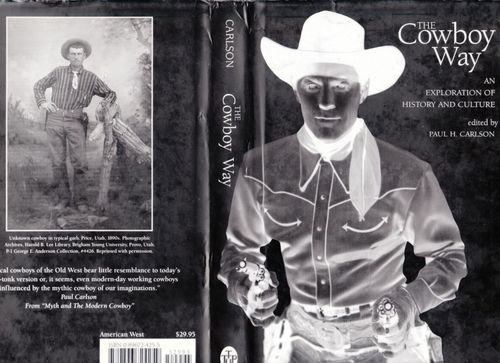

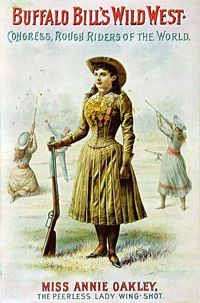


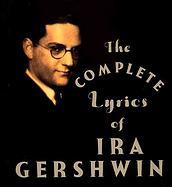

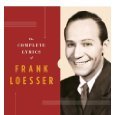
withVincentMinnelli2CGeneKelly2CArthurFreed.jpg)




